John and Mary Kormendy: Third Birding Trip to Ecuador
This site contains the pictures from our 2021 December third birding trip to Ecuador. Our 2004 trip is posted here and our 2017 trip is posted here.
A trip customized to the list of species that we needed was organized by (in our opinion) the top independent bird guide in Ecuador, Juan Carlos Calvachi ( juancarloscalvachi@gmail.com ). We are excceedingly grateful to him for his dedication to getting us as many new species as possible and for his unfailing help with our special needs.
In total, John got 118 life birds and Mary got 69 life birds on this trip. We put special emphasis this time on the Amazon rain forest, spending 12 nights and 11 days at Sacha Lodge. We wanted to immerse ourselves in the rain forest experience, and we succeeded ... occasionally too well. We were overtaken by a truly torrential rain while on a small-boat outing on the Napo river to see parrots at two salt licks. It killed one of my cameras. But the concetration was worth it; we very much got to feel at home at Sacha. It and its surroundings are gorgeous. Scenery pictures and movies from the trip are posted here.
This web site is still preliminary. Most of our ~2500 pictures are not yet processed and added; they will probably be added mainly in late February and March 2022. This notice will disappear when the pictures are complete. Pictures are copyrighted and should not be used without permission.
John's Trip Birds
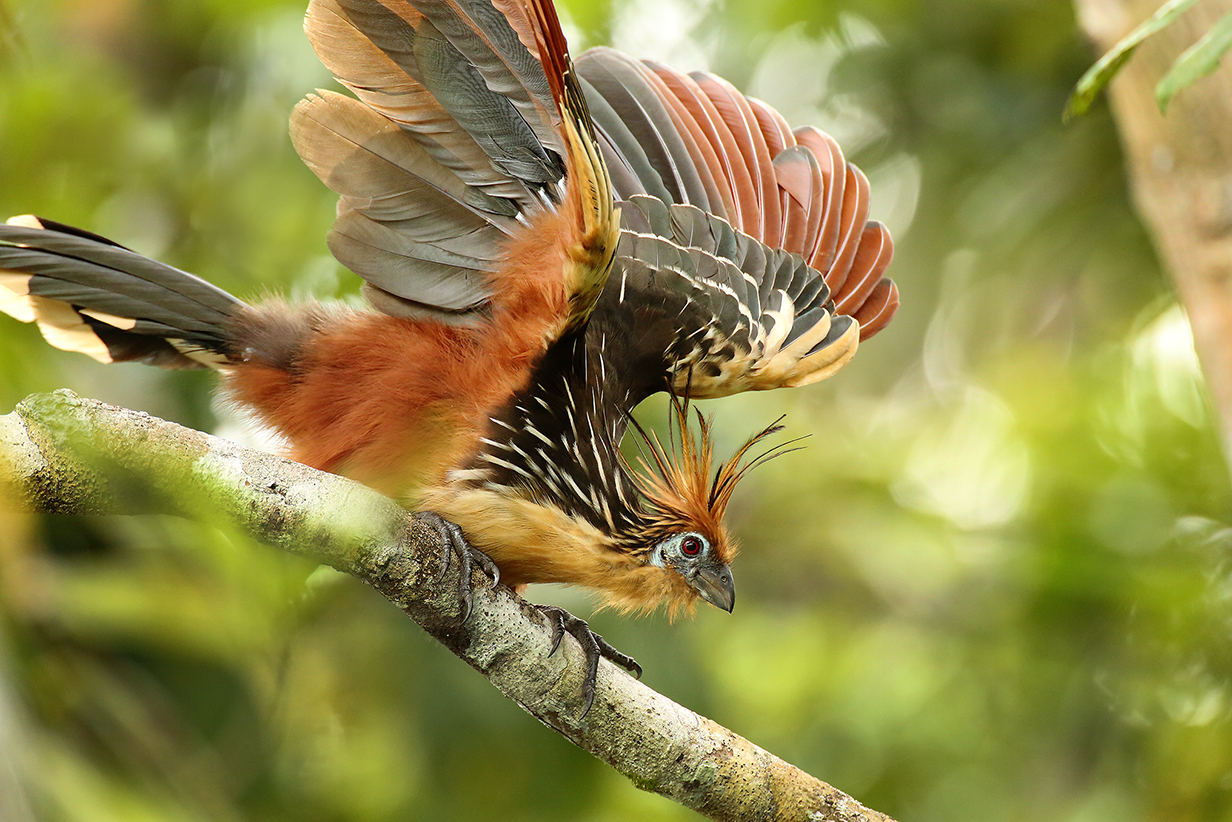
Given our emphasis on the Amazon river basin, it is fitting that John's first trip bird is the Hoatzin. No other bird so typifies this habitat. And no other bird so makes us feel like his grandmother was a dinosaur.
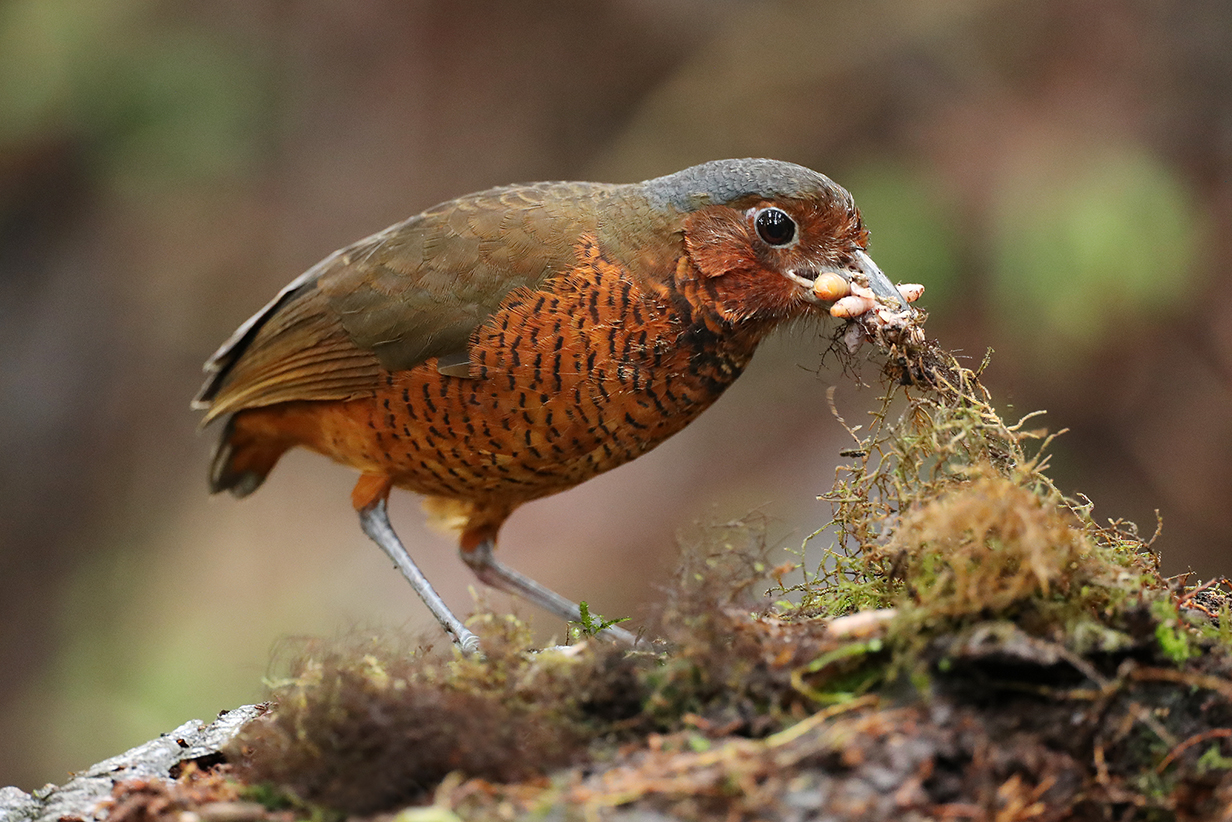
Giant antpitta is John's second trip bird -- no other sighting means as much to him. This bird required a difficult slog up a steep, wet, and slippery trail, culminating in a ~ 25-foot scramble up a steep, trailless and muddy slope covered in slippery leaves. The bird was being fed, and it was busy collecting worms for a 5-day-old chick. Wonderful best example of the 7 species of antpitta that John got during the trip. This is John's life bird.

Brown wood-rail is John's third trip bird, based on how elusive rails always are. This is the only rail that we saw on the trip. It is our life bird.
Mary's Trip Birds
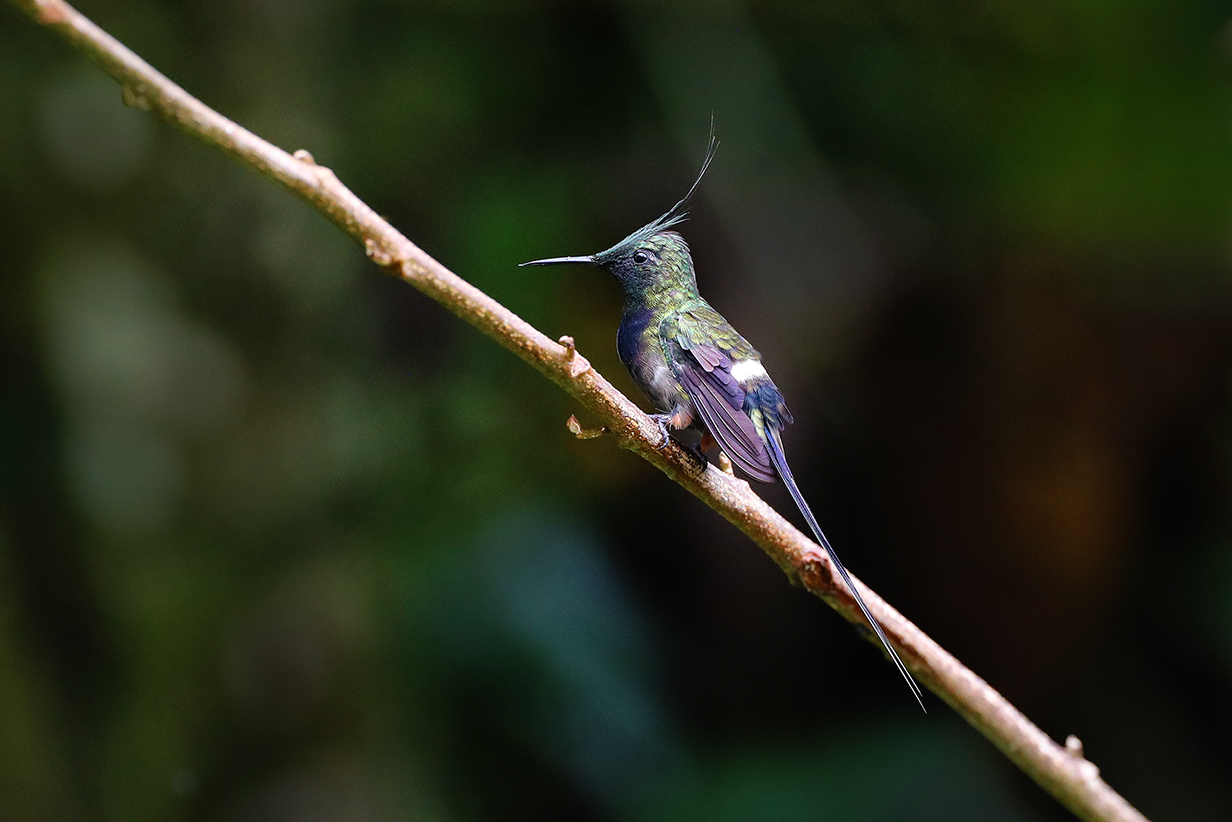
Wire-crested thorntail captivated Mary with its raffish elegance. The crest on this male is bright green when seen from the front (see the main section on bird pictures). The tail is blue.

Orange-cheeked parrot is decisively Mary's second life bird. "Cheeky!" -- no pun intended. These are three birds in a small flock of our life birds that came to a salt lick and drinking spring -- see the main section of pictures for movies.
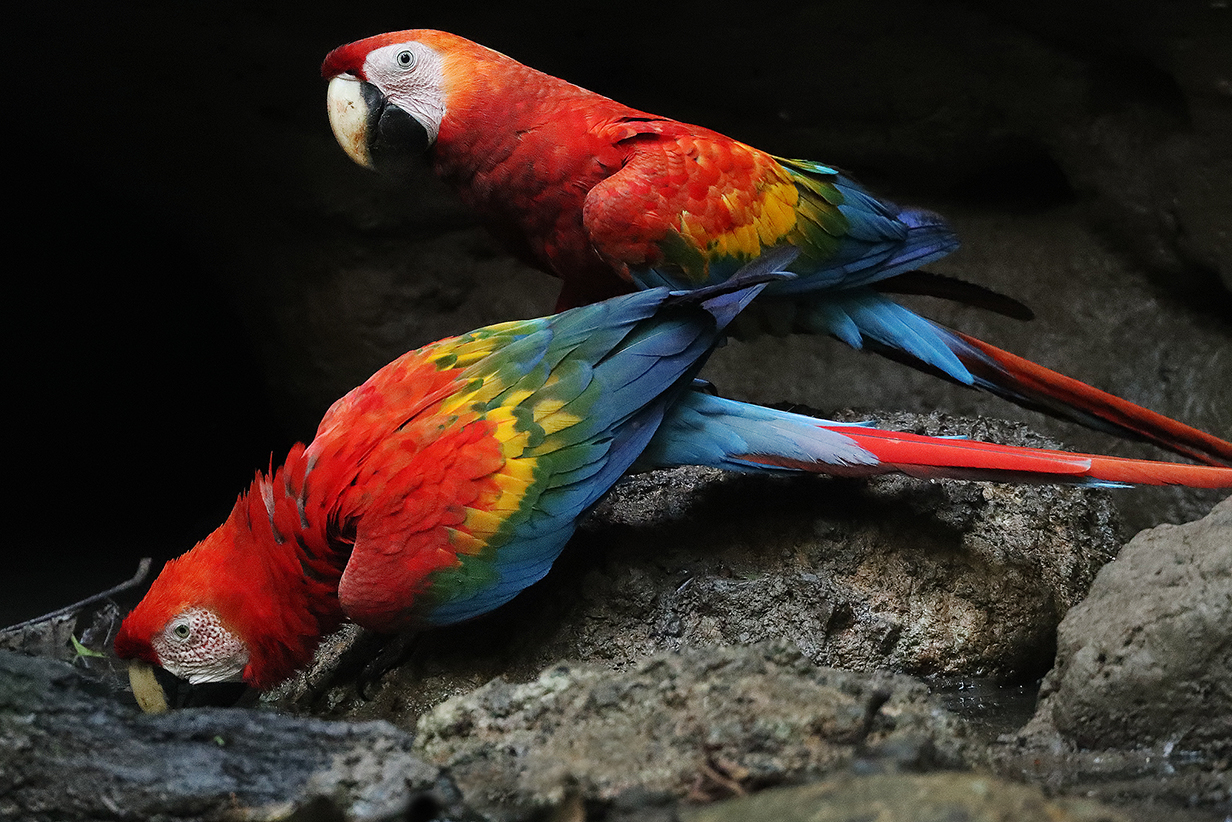
Scarlet macaws -- who can resist? They came to the salt lick and drinking hole at the Napo Wildlife Center. At first, two birds came and drank alternately, with one bird always on the lookout for danger. Soon several more birds came (see movie below).
The Birds (Under Construction)

Rufescent tiger-heron

Rufous-breasted wood-quail (This is our life bird.)

Dark-backed wood-quail (This is our life bird.)

Parrot salt lick on the south banks of the Napo river. It took us two tries to see this, via a half-hour canoe ride illustrated here. Our first try was clobbered by one of the hardest rains that we have ever seen -- cold, wet, and deadly to one of John's cameras. The second try was perfect. The birds come here and to a second salt lick illustrated below to get essential minerals from the muddy bank. Note the many birds that are waiting their turns on branches around the cluster of feeding birds.

Parrots at the Napo River salt lick. Most -- especially the middle cluster -- are Mealy parrots: they are the ones with red in the wings and yellow tips to their tails. At bottom-left is a cluster of Blue-headed parrots. In the middle-right are Dusky-headed parakeets -- they are the ones with all-dark-green bodies and wings and gray heads. Finally, at bottom-right and a few other places are Yellow-crowned Amazons: their crowns look yellow-white. None of these species were new, but it was a joy to see so many of them cheerfully bustling here. The impression was distinctly that this was a social occasion as much as it was a chance to stock up on necessary minerals.
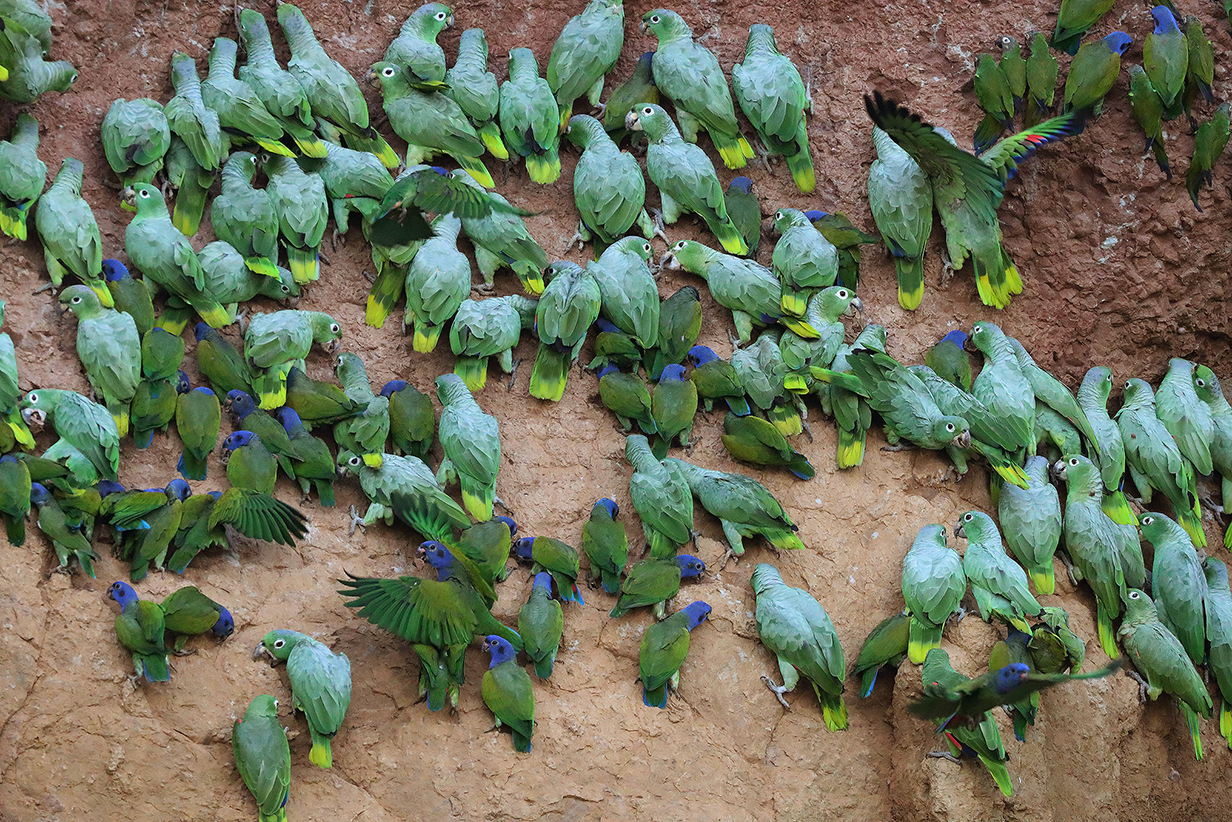
Mealy and Blue-headed parrots at the Napo salt lick.
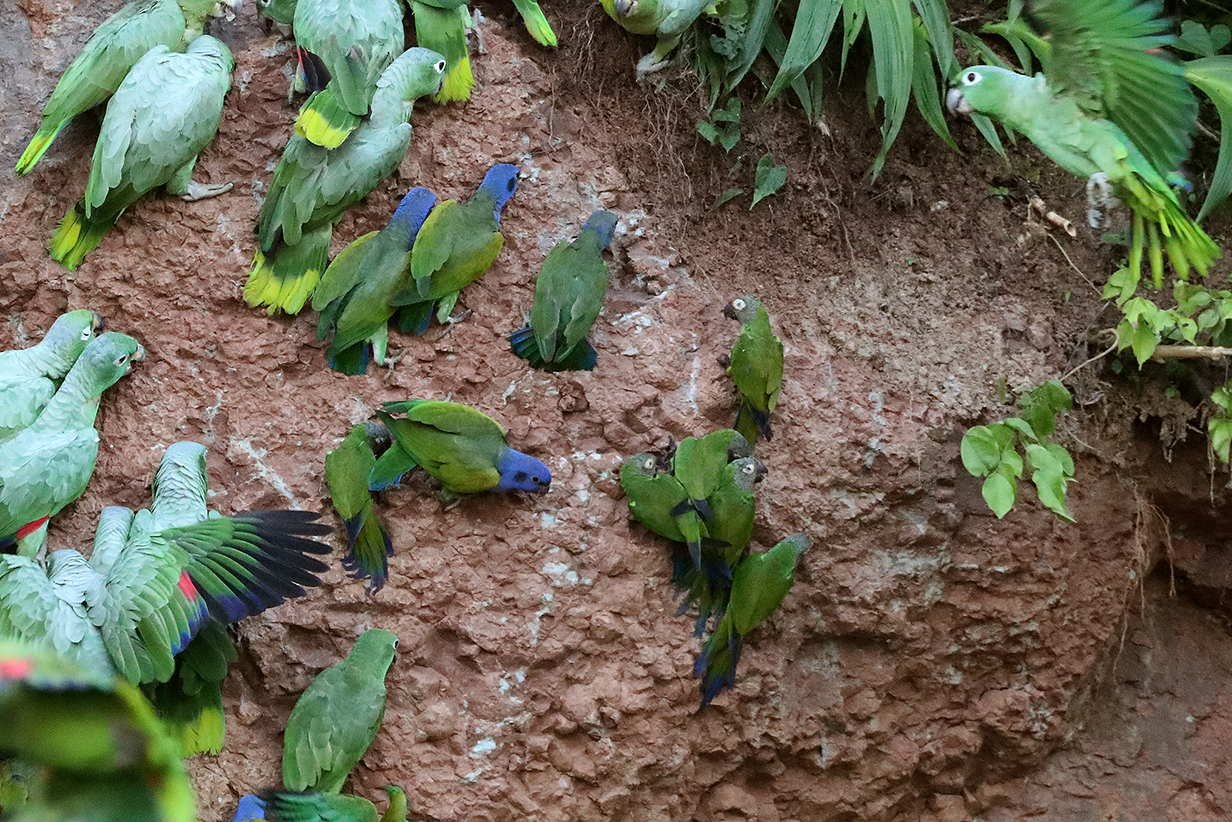
Mealy parrots, Blue-headed parrots, and Dusky-headed parakeets

Two of these are Mealy parrots; the rest are Yellow-crowned amazons.

Scarlet macaw (Our next stop on the Napo canoe ride was another salt lick and drinking hole, this one about 1/2 km inland on the south bank and part of the Napo Wildlife Center. Scarlet macaws came first but were shy and looked around carefuly before coming to drink.
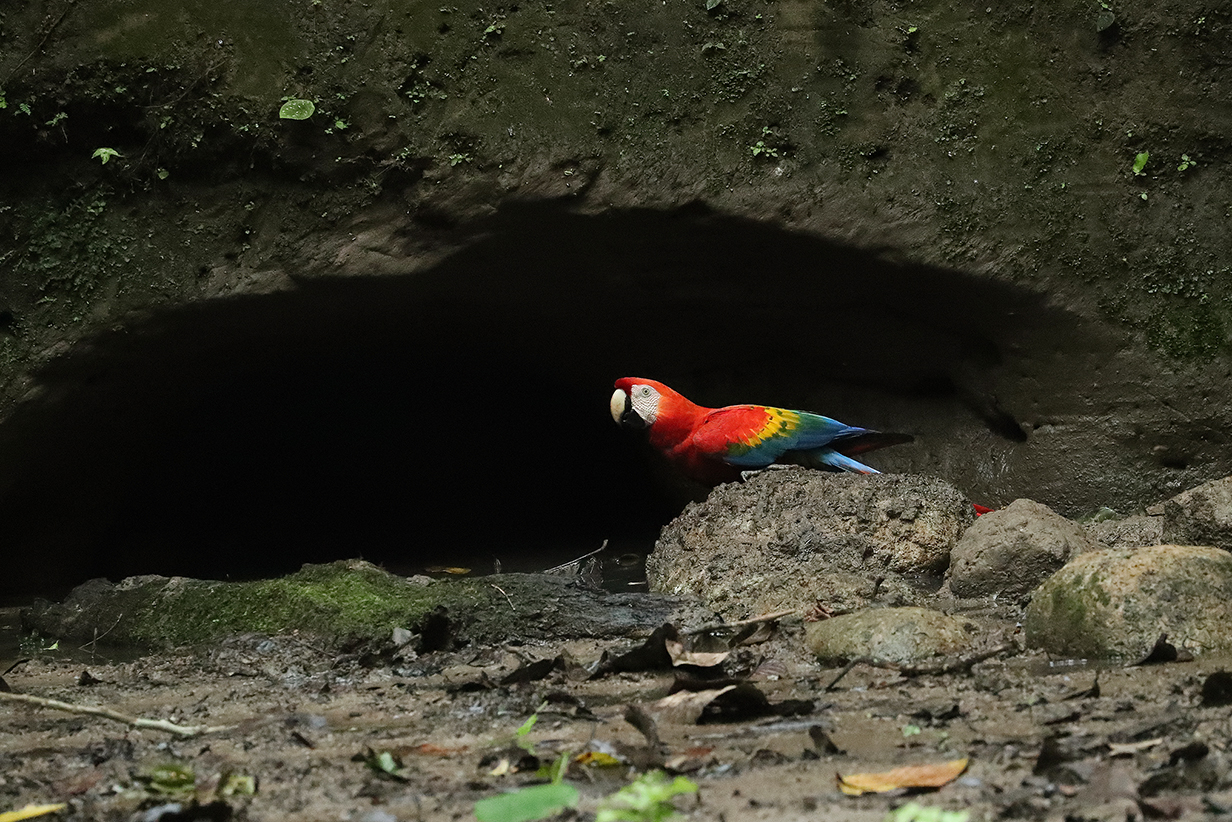
First a careful look around ...

At first, Scarlet macaws drank alternately, with one bird always on the lookout for danger.
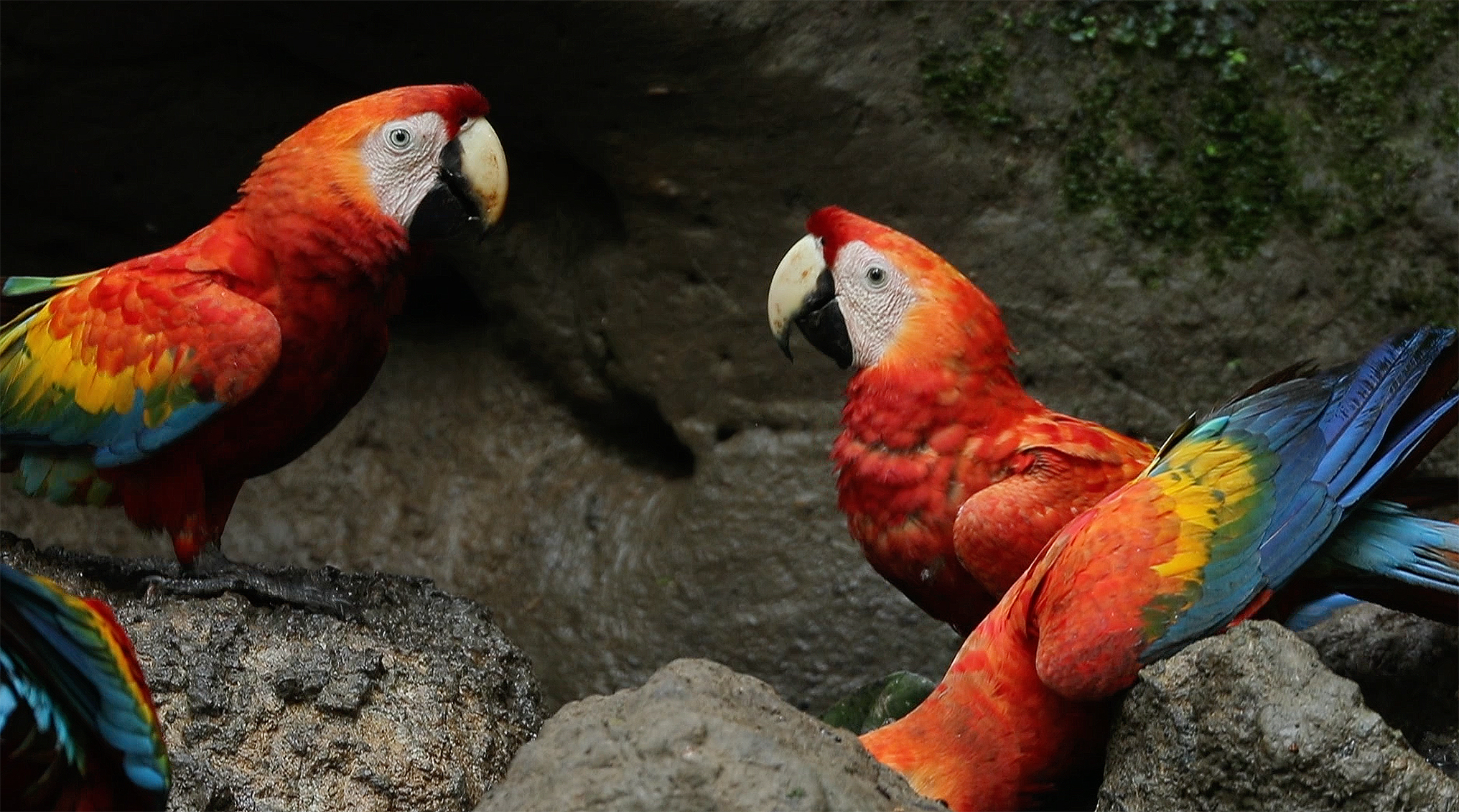
Eventually things got more lively. It's not the best-quality movie, but it captures the flavor of the moment. Caution: 99 Mb.
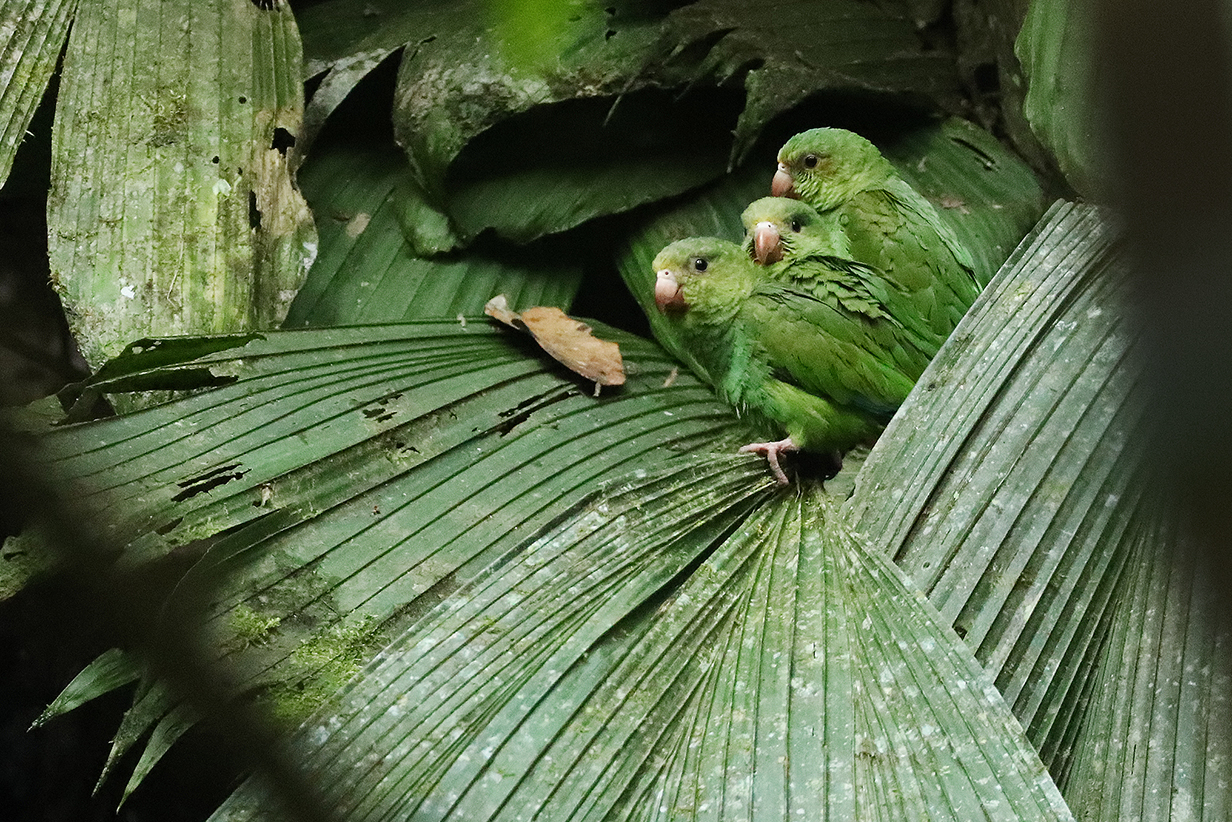
Cobalt-winged parakeets (After the macaws left, Cobalt-winged parakeets started to come closer and closer ... always shy, always careful, always reluctant to commit themselves.)
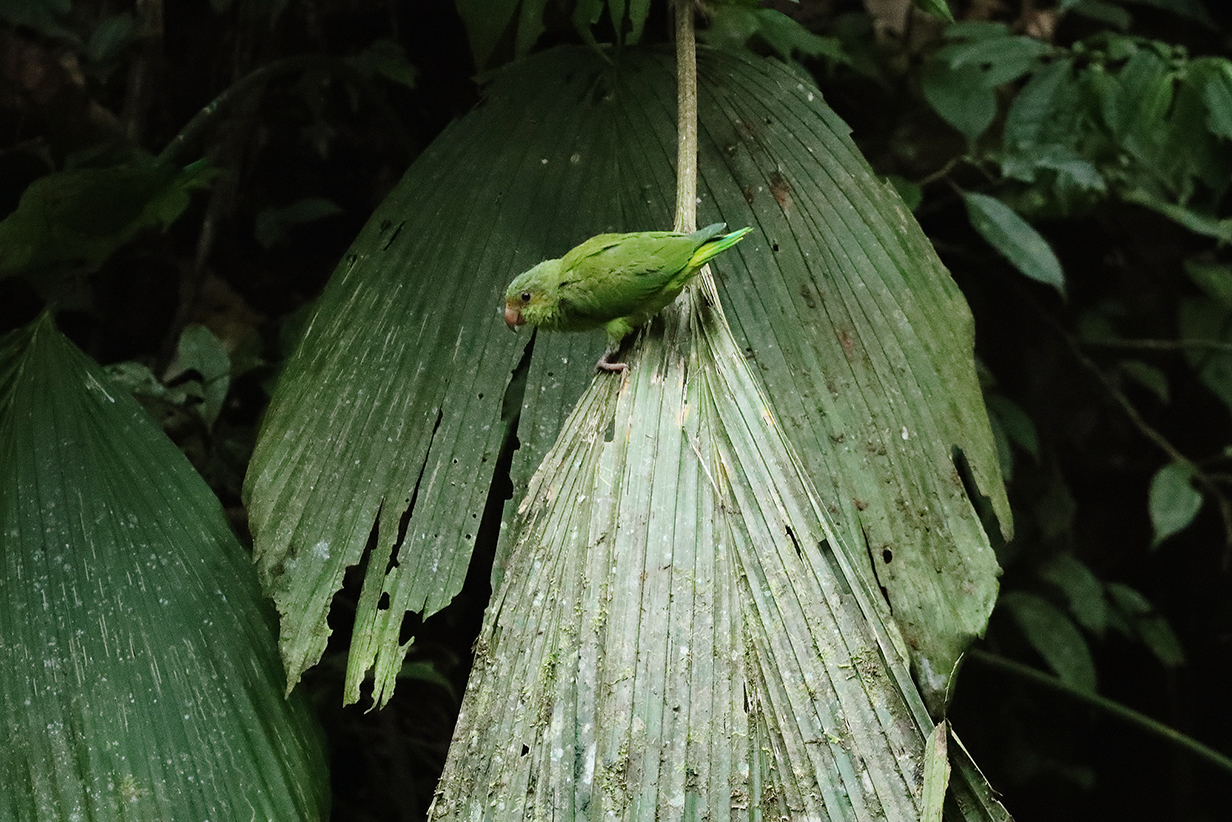
Is it safe?
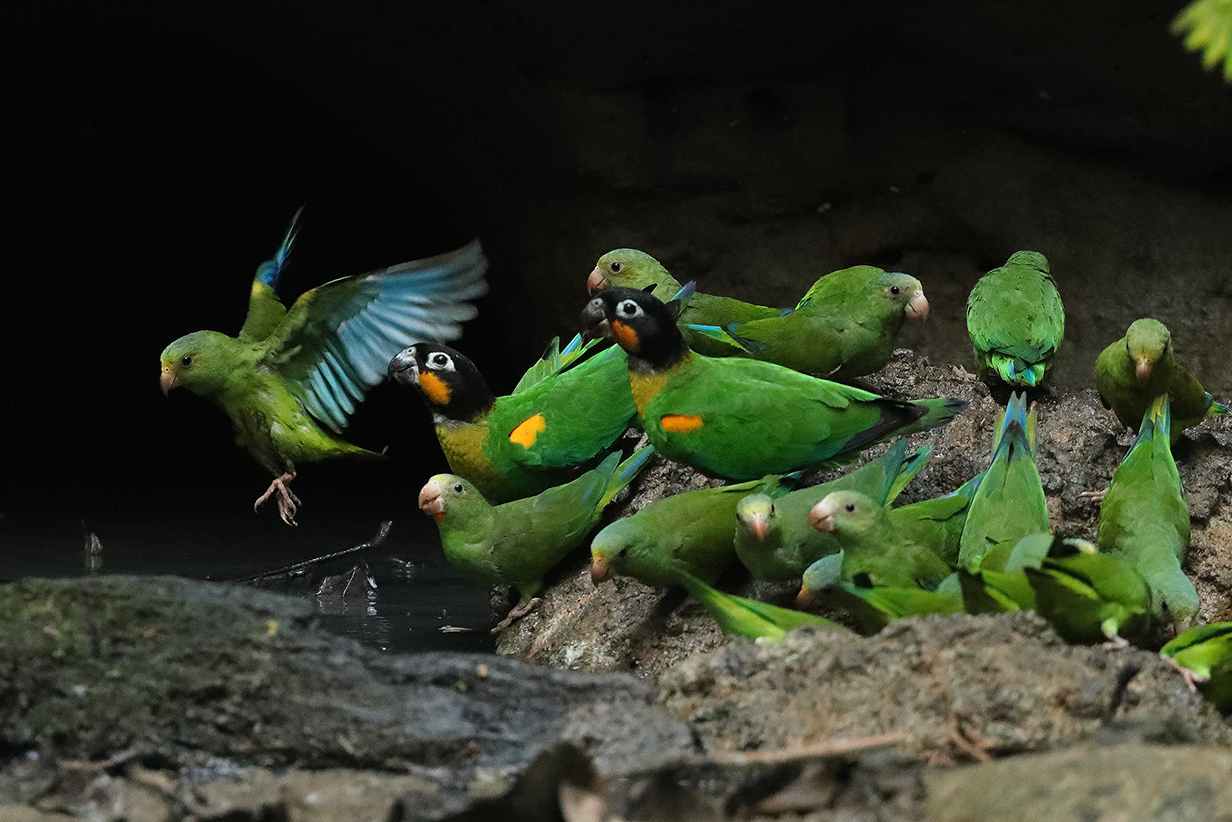
When they finally dared to come, they came in large numbers. Most were Cobalt-winged parakeets. A few were Orange-cheeked parrots; they were life birds.
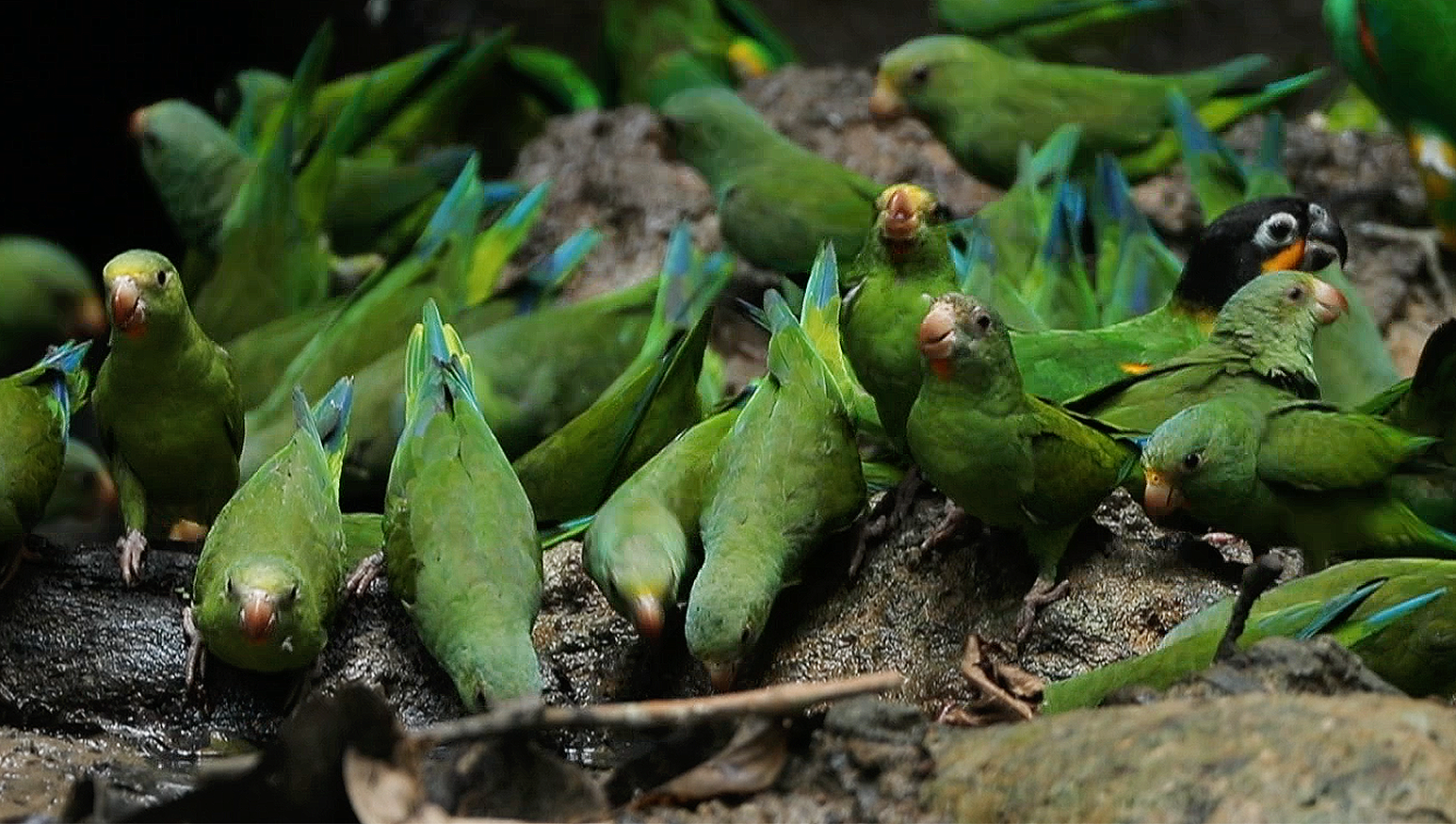
Movie of Cobalt-winged parakeets and a few Orange-cheeked parrots. Again, it's not a superb movie, but it wonderfully captures the flavor of the moment. Caution: 472 Mb.
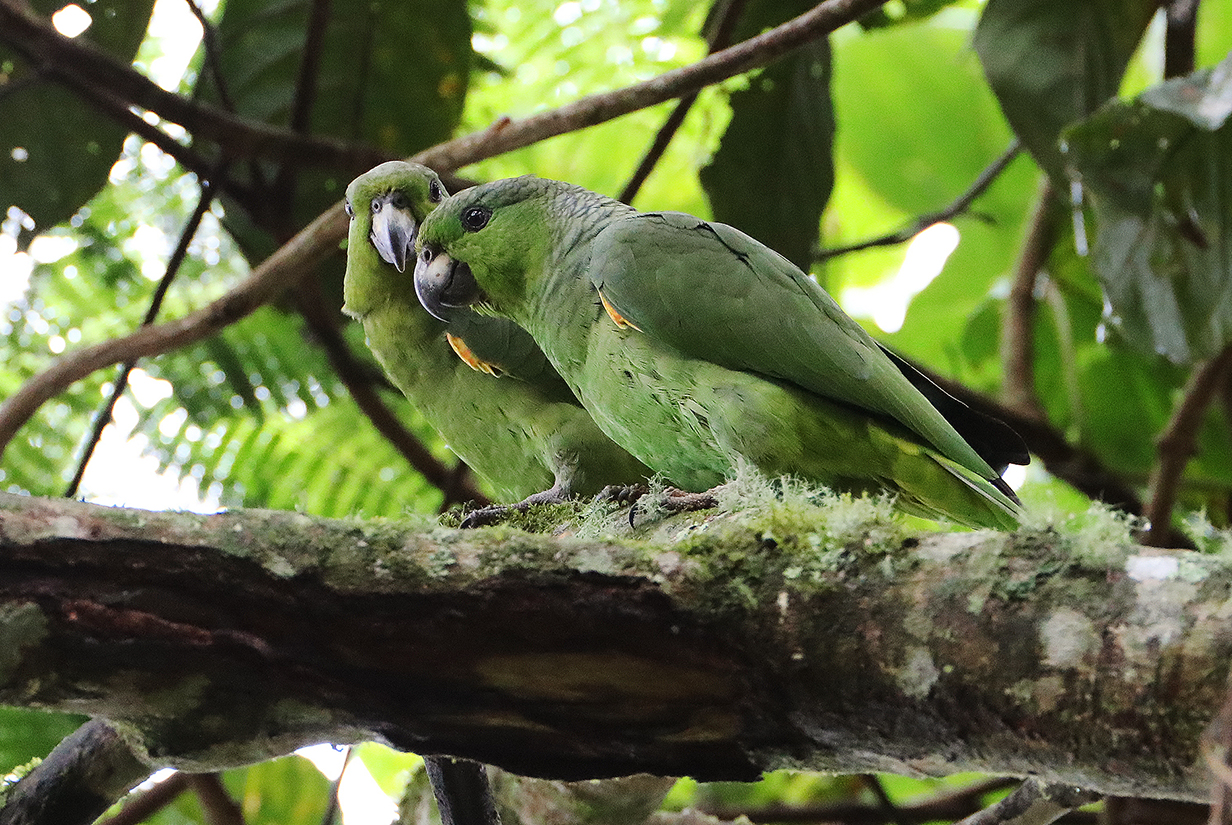
Scaly-naped parrot (Much later in the trip: these are John's life birds.)
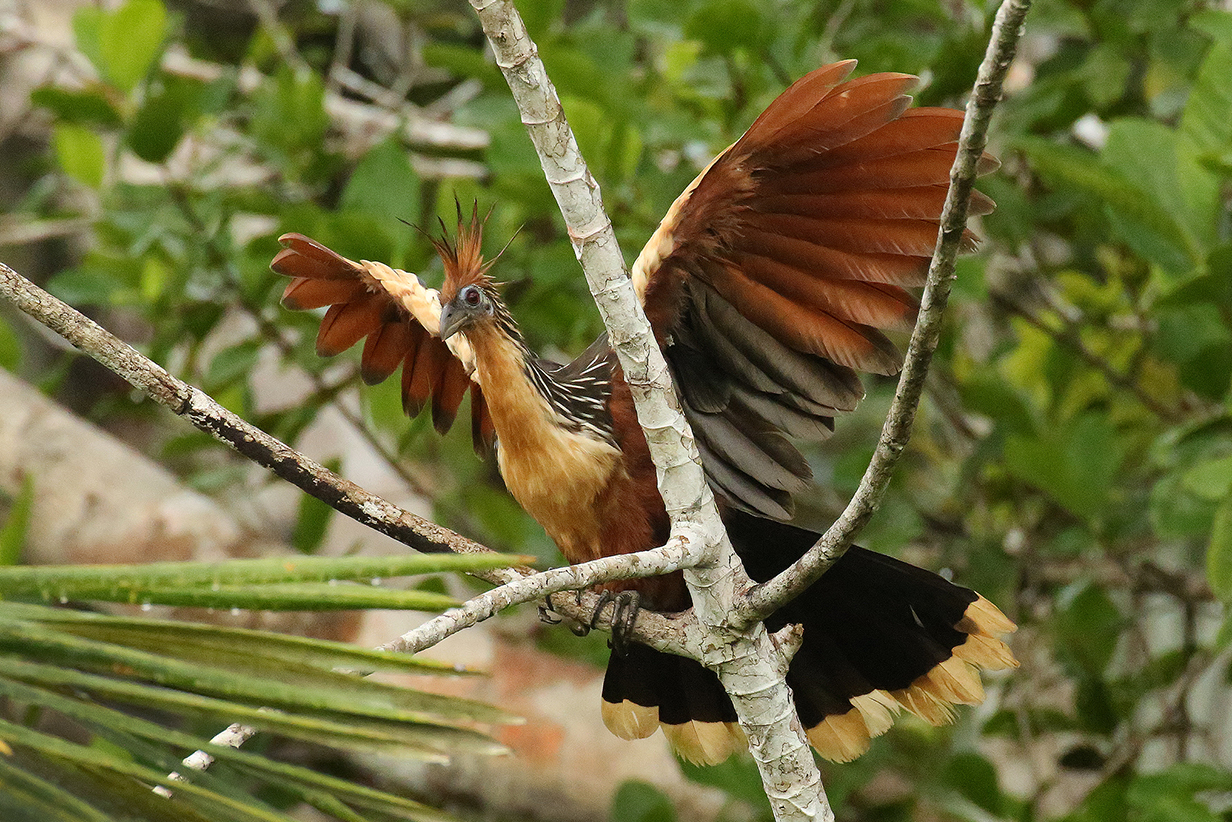

Hoatzin (We saw them regularly around the blackwater lake at Sacha.)
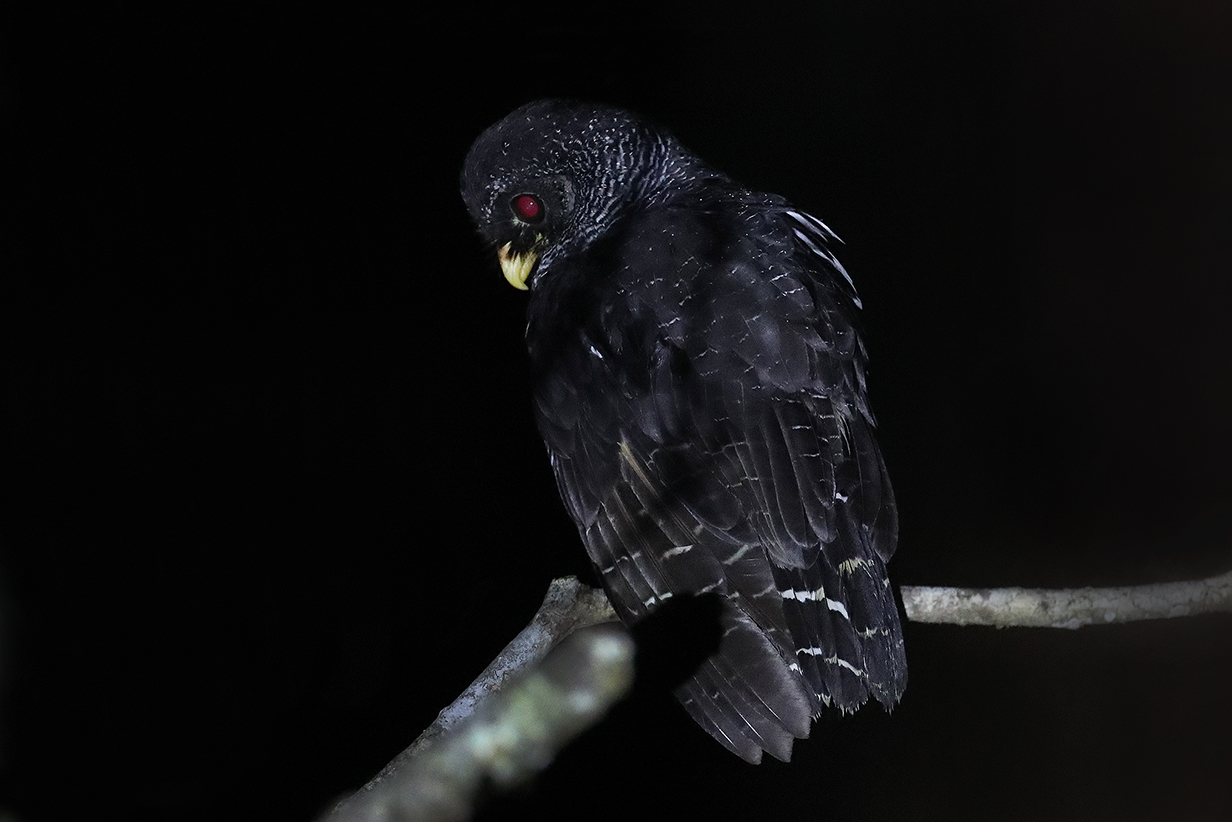
Black-banded owl (This first owl of the trip is our life bird, at San Isidro. We were not lucky enough to photograph him turned around and showing his barred breast: this picture was taken moments before a torrential rain storm.)

Crested owl (This is one of a pair that were our life birds.)
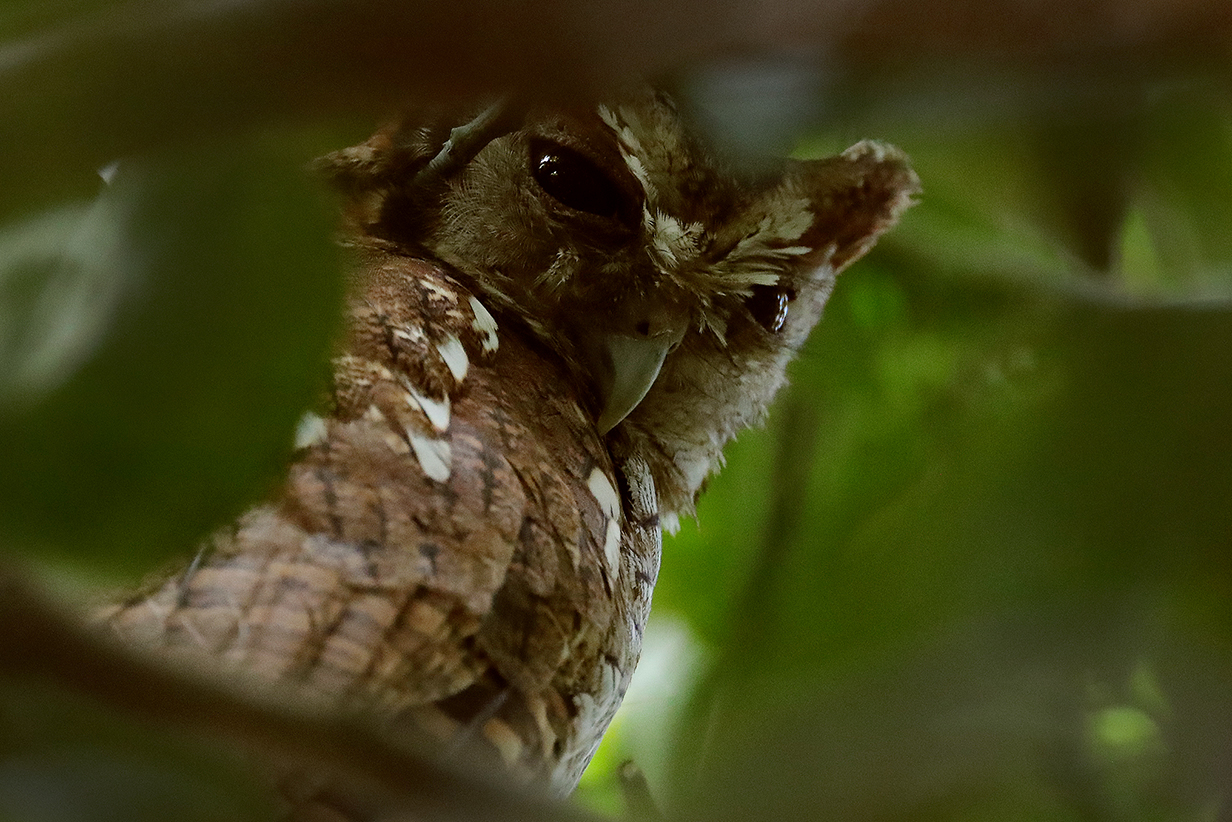
Tropical screech-owl
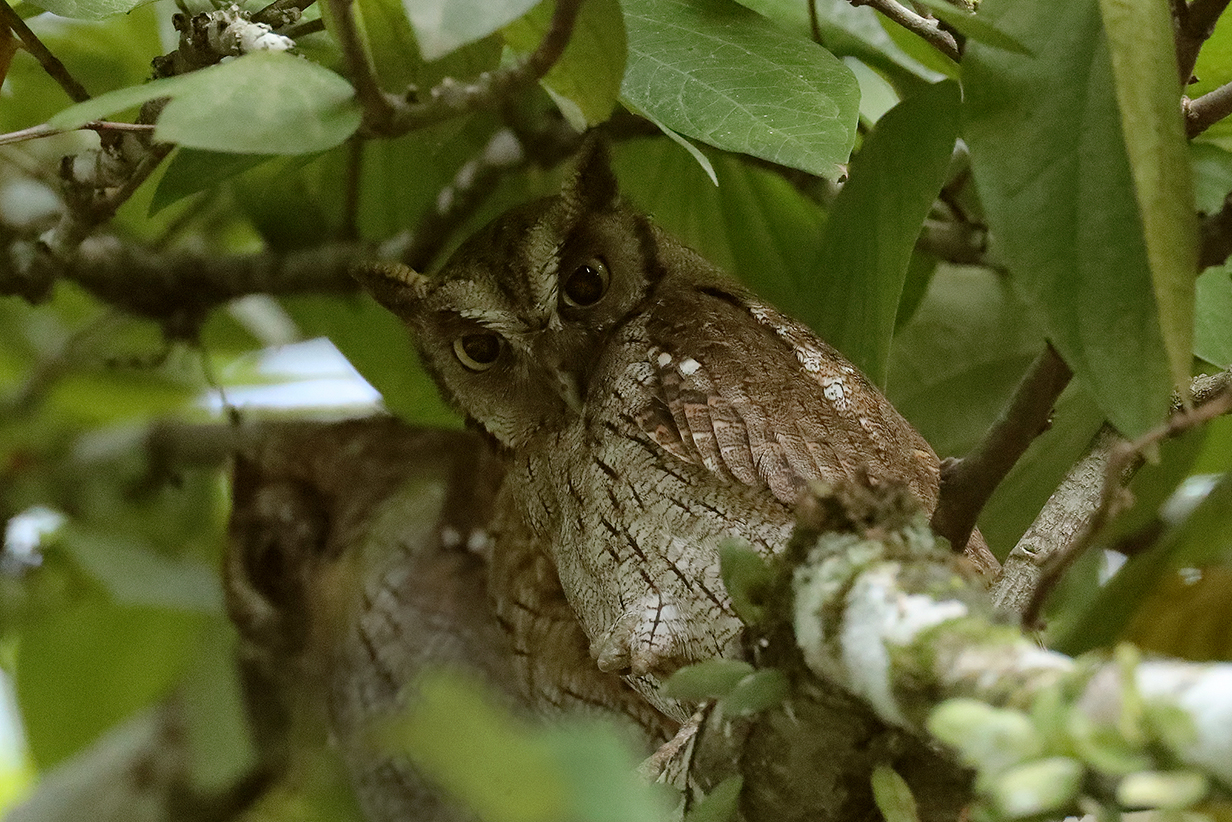
Tropical screech-owl (These are different birds seen on the same day.)
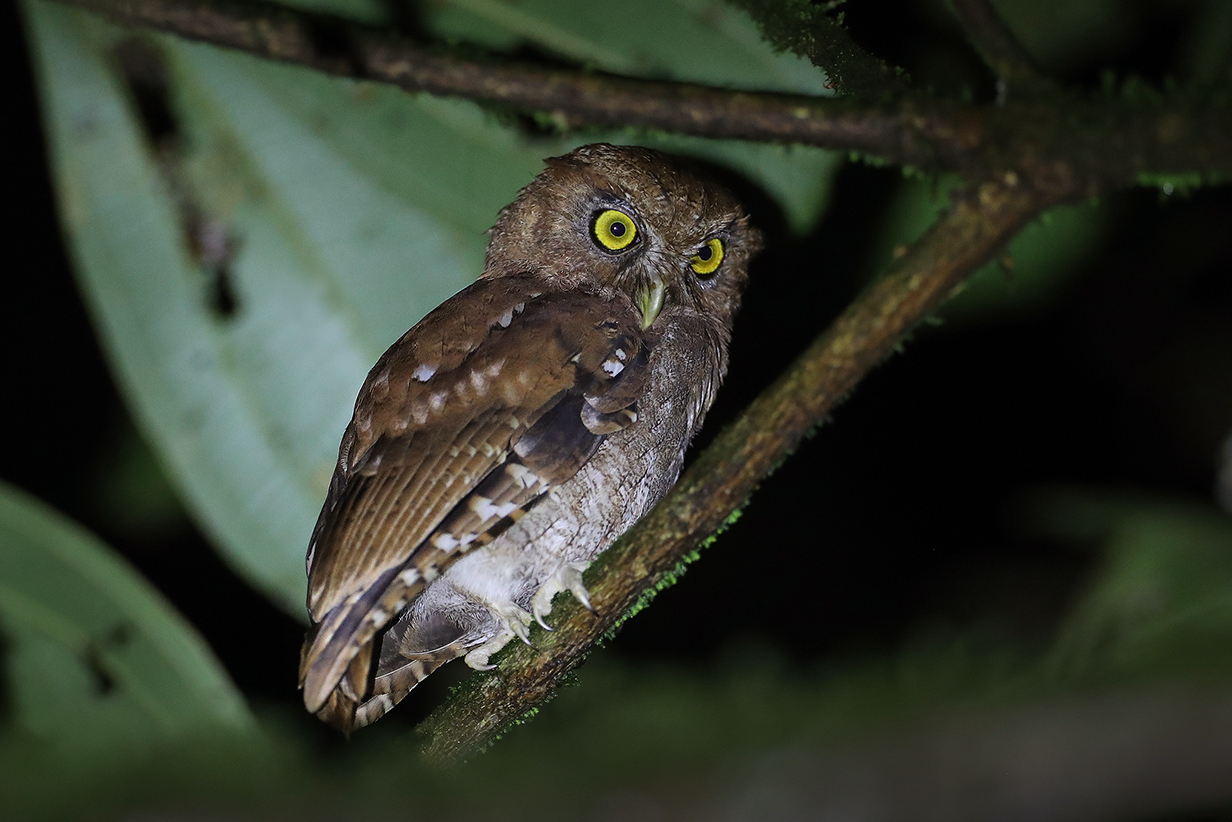
Foothill screech-owl (This is John's life bird. It is the Ecuadorian East-of-the-Andes split of Vermiculated screech-owl, seen just outside Wildsumaco Lodge.)

Common potoo (looking like a tree, as usual during the day)


Ladder-tailed nightjar (This is our life bird, on the south bank of the Napo River.)

Blackish nightjar (This is John's life bird.)
Hummingbirds
Our list of all the birds of Ecuador includes 128 species of hummingbird. This is of course an approximation, because taxonomy changes happen every year. Also, birds wander, and they don't know where the borders of Ecuador are. Hummingbirds are a highlight of any trip to the neotropics -- colorful jewels of the forest. As of 2022 January, John has seen 80 species and Mary has seen 77 species of Ecuador's hummingbirds.
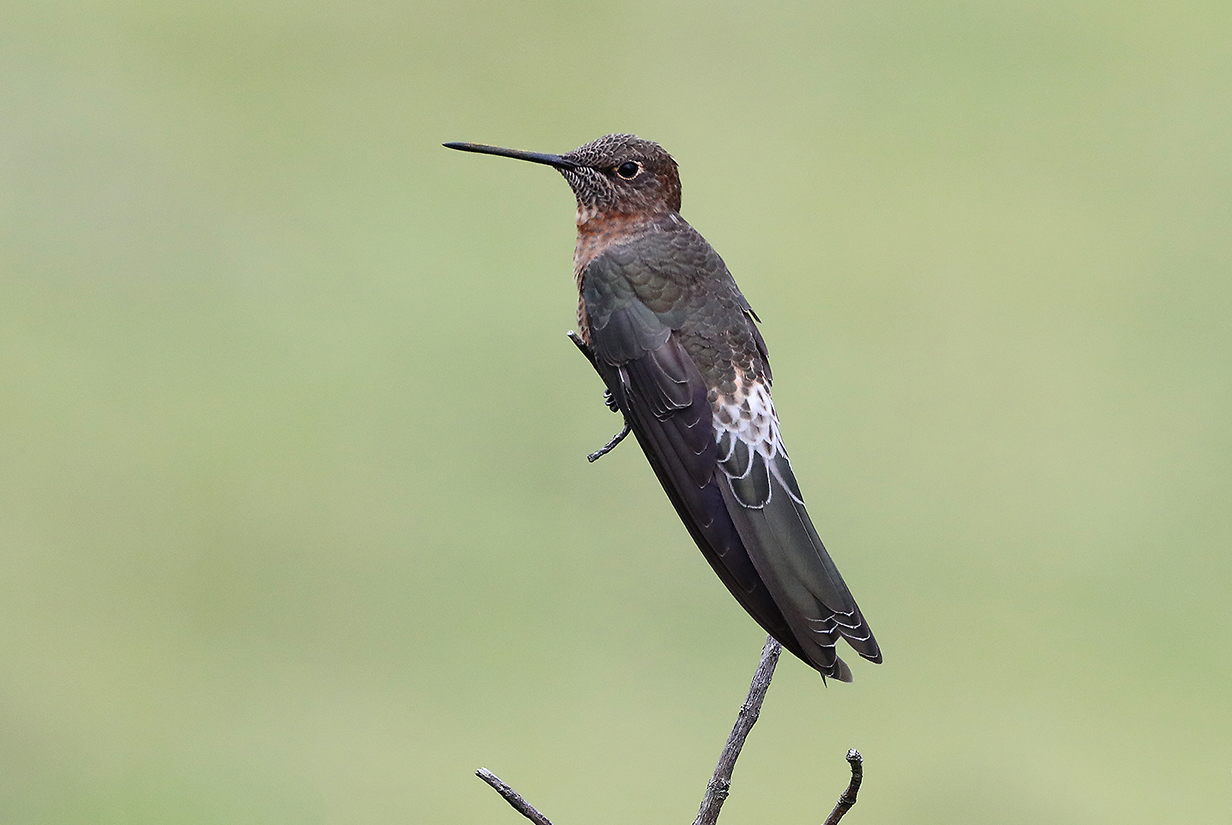
Giant hummingbird (This female is John's life bird; Mary got hers in 2017. At ~ 3600 m altitude, where this picture and the next two were taken, it is cold at night and hard for hummingbirds to survive. But they thrive even there!)
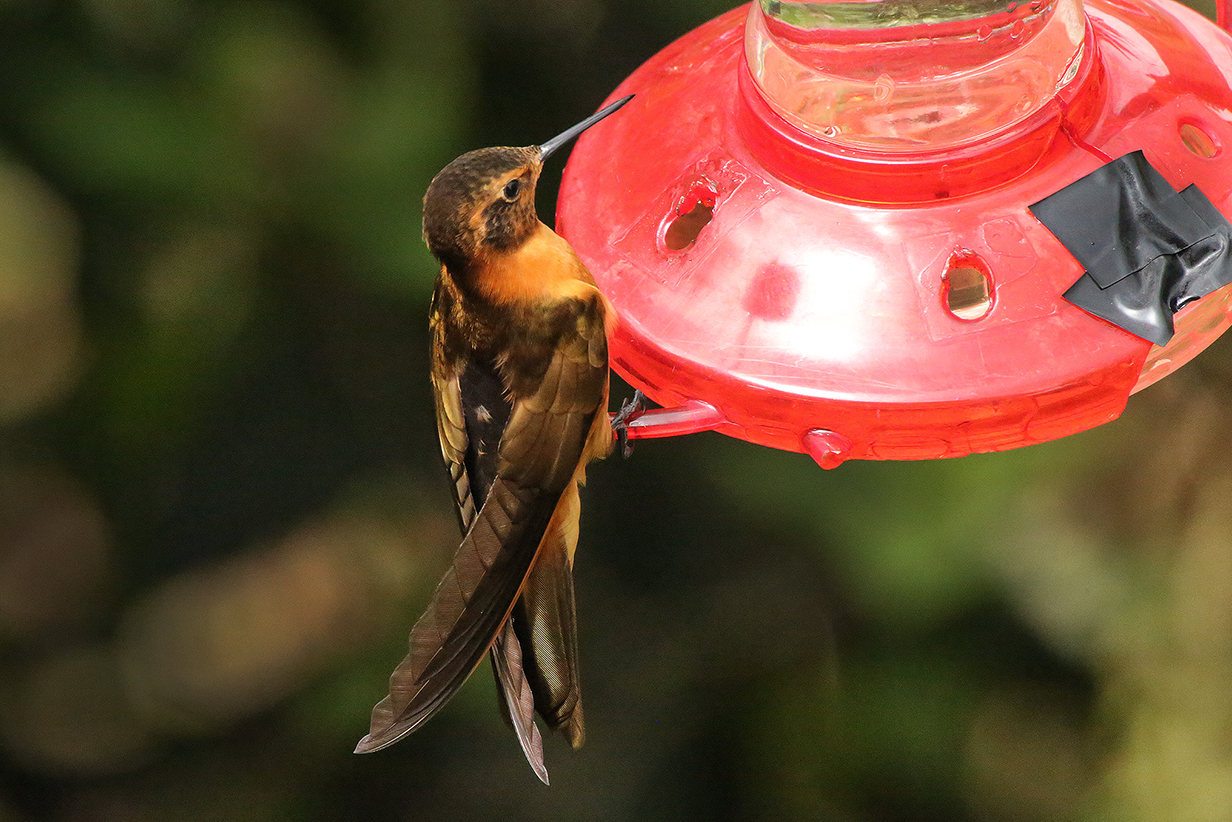
Shining sunbeam (This was Mary's first life bird of the trip and John's second, at the same place as Giant hummingbird, above.)
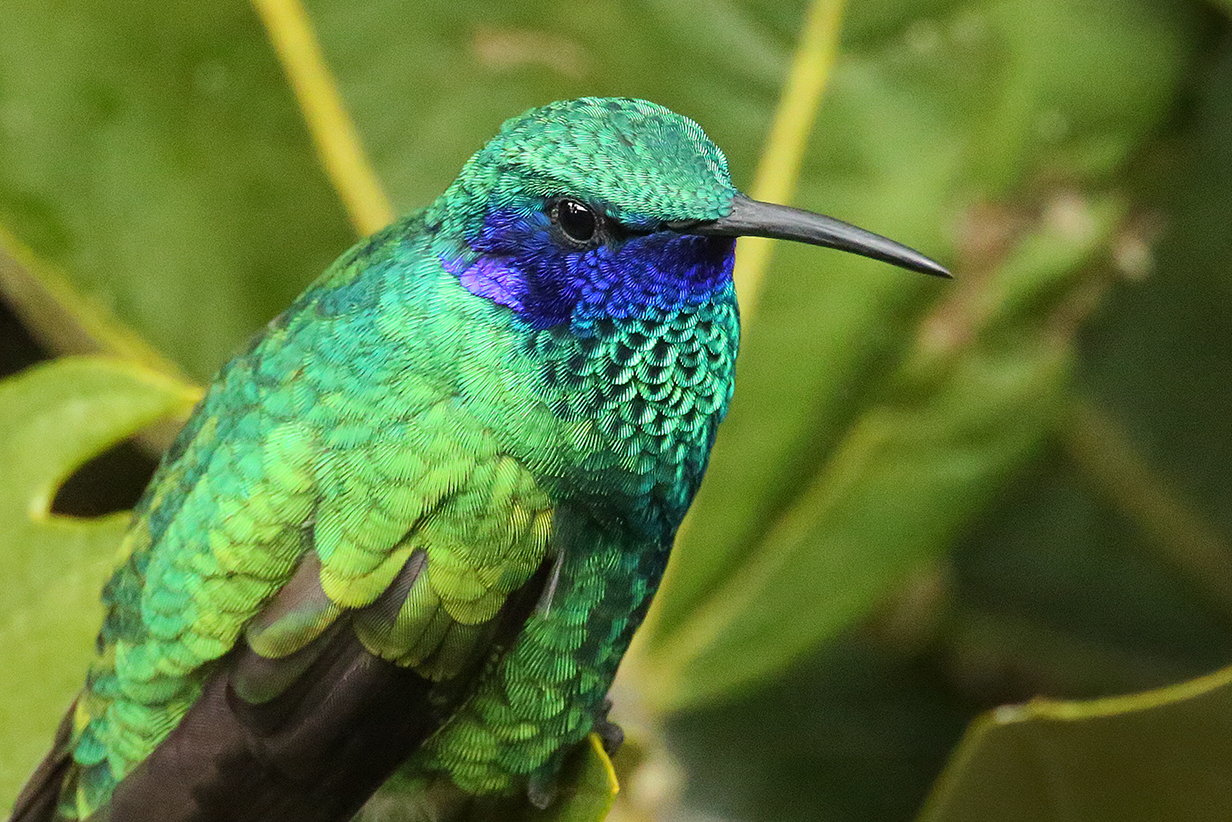
Sparkling violetear was the most widespread hummingbird of the trip -- this one also at the above stop.

Wire-crested thorntail was one of Mary's "trip birds". The crest on the male is impressively raffish from the side, but you have to see it from the front to see that it is bright green.
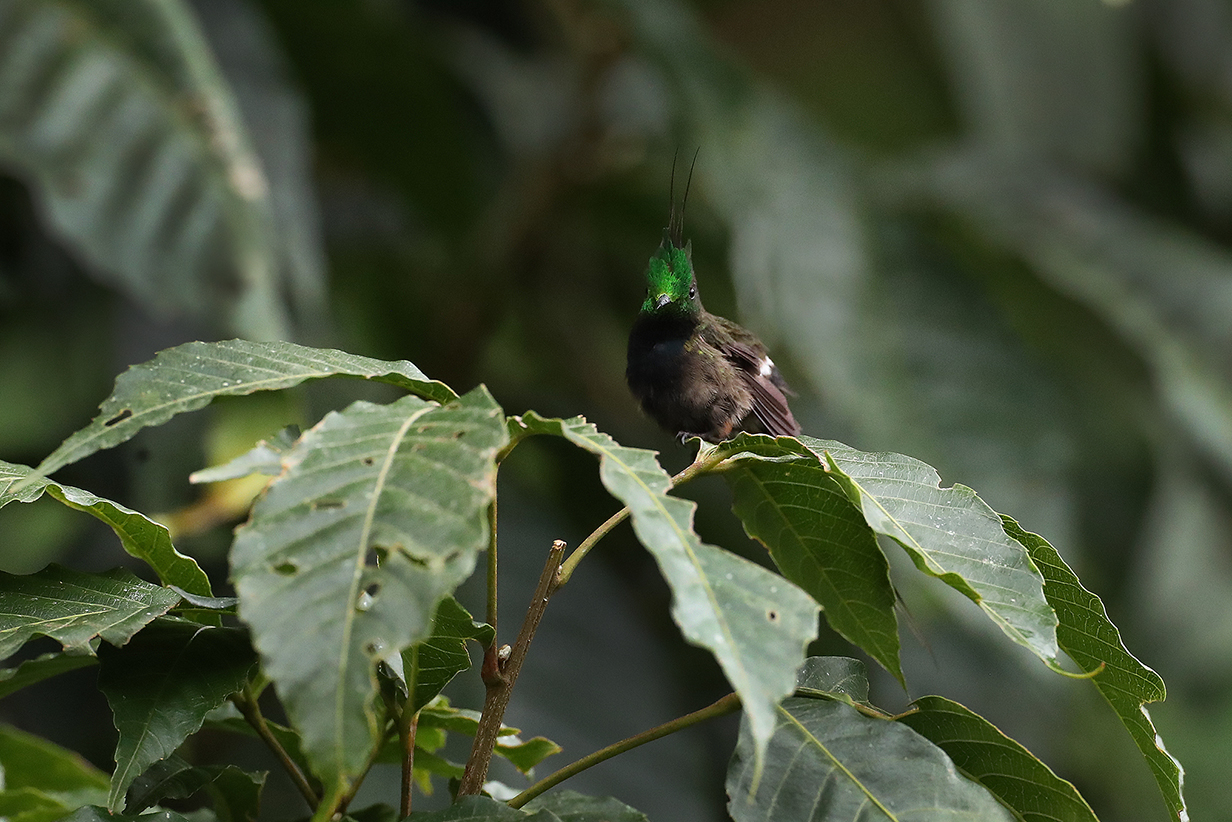
Wire-crested thorntail (You get full-color effects of irridescence only from the front -- that's the direction in which birds intimidate. But it is not the ideal angle for a portrait. The crest is bright green all the way to the tip, and the throat is green, too, from the proper angle.)
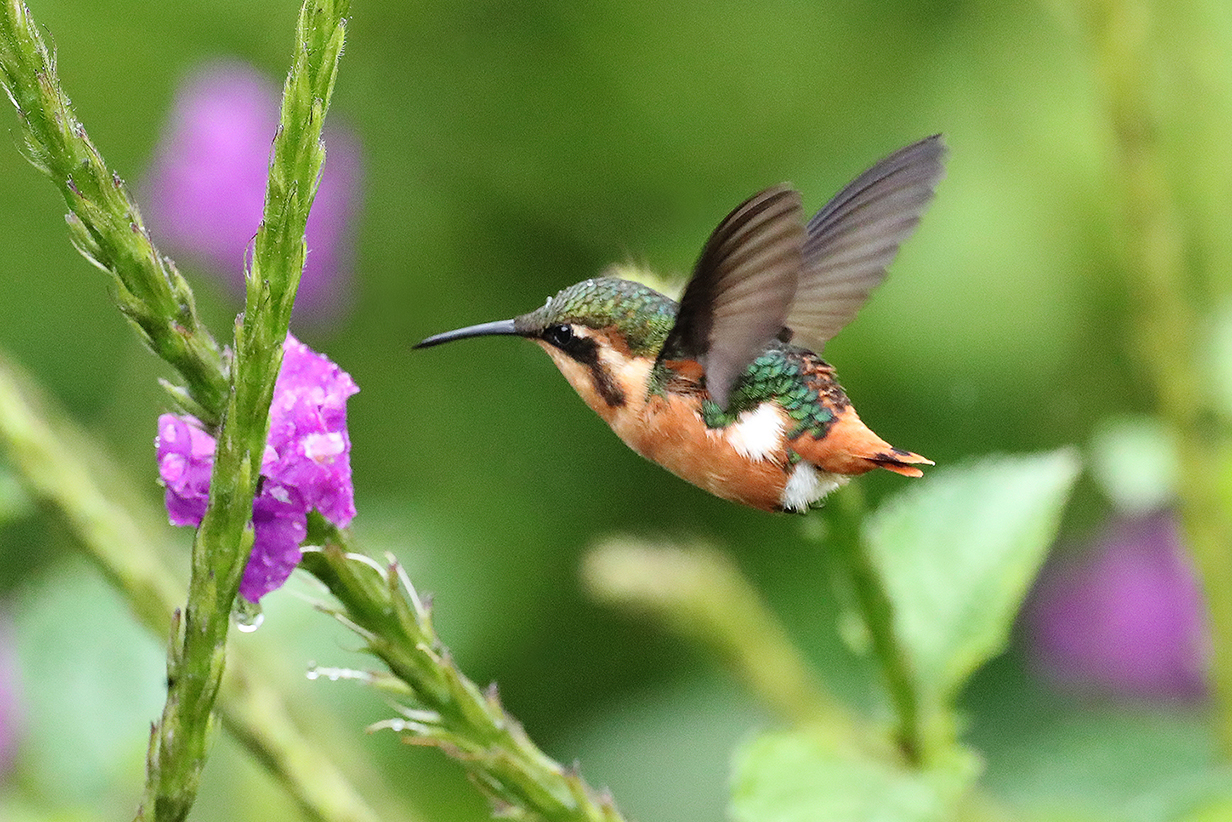
Gorgeted woodstar -- not much bigger than a bumblebee (This female is our life bird at Wildsumaco Lodge.)

Gould's jewelfront (This female is our life bird, also at Wildsumaco.)

Gould's jewelfront (Is there anything else to eat around here besides nectar?)

Golden-tailed sapphire
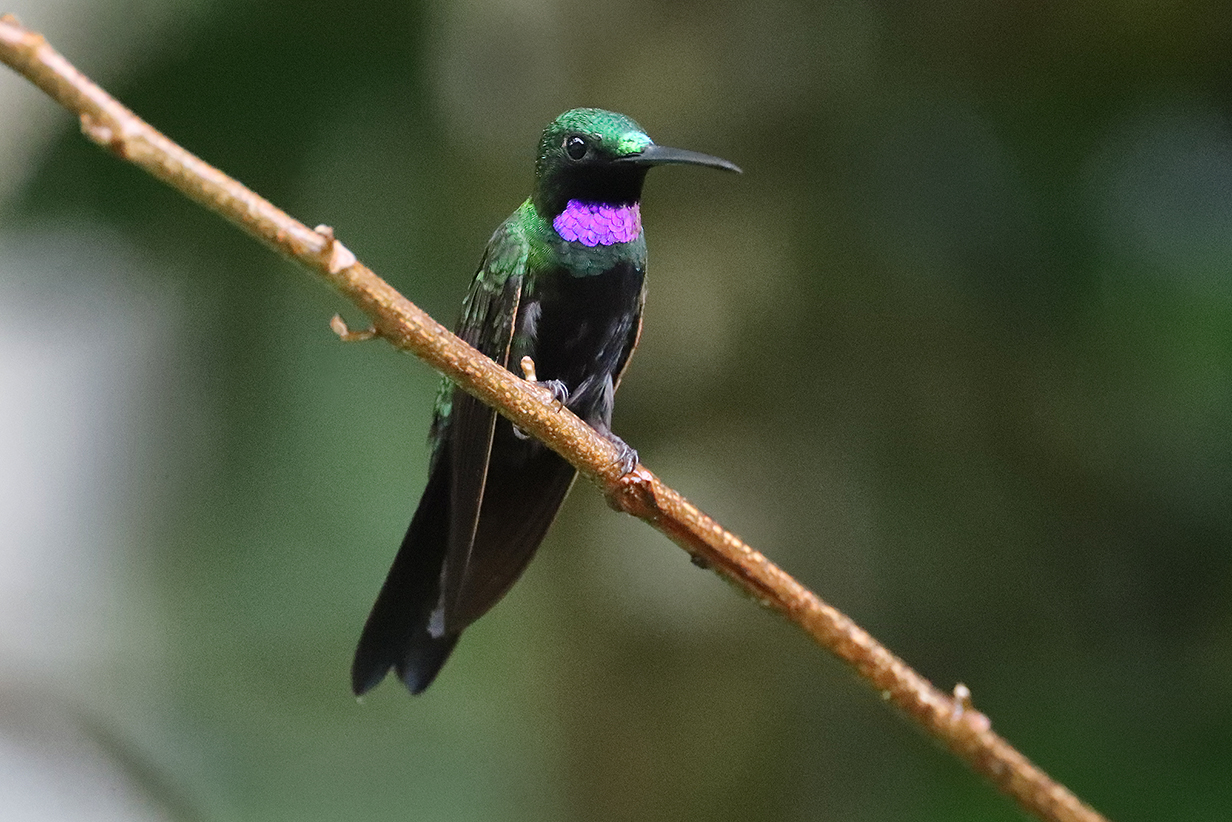
Black-throated brilliant (This is our life bird and the last picture in the series of hummingbirds from Wildsumaco.)
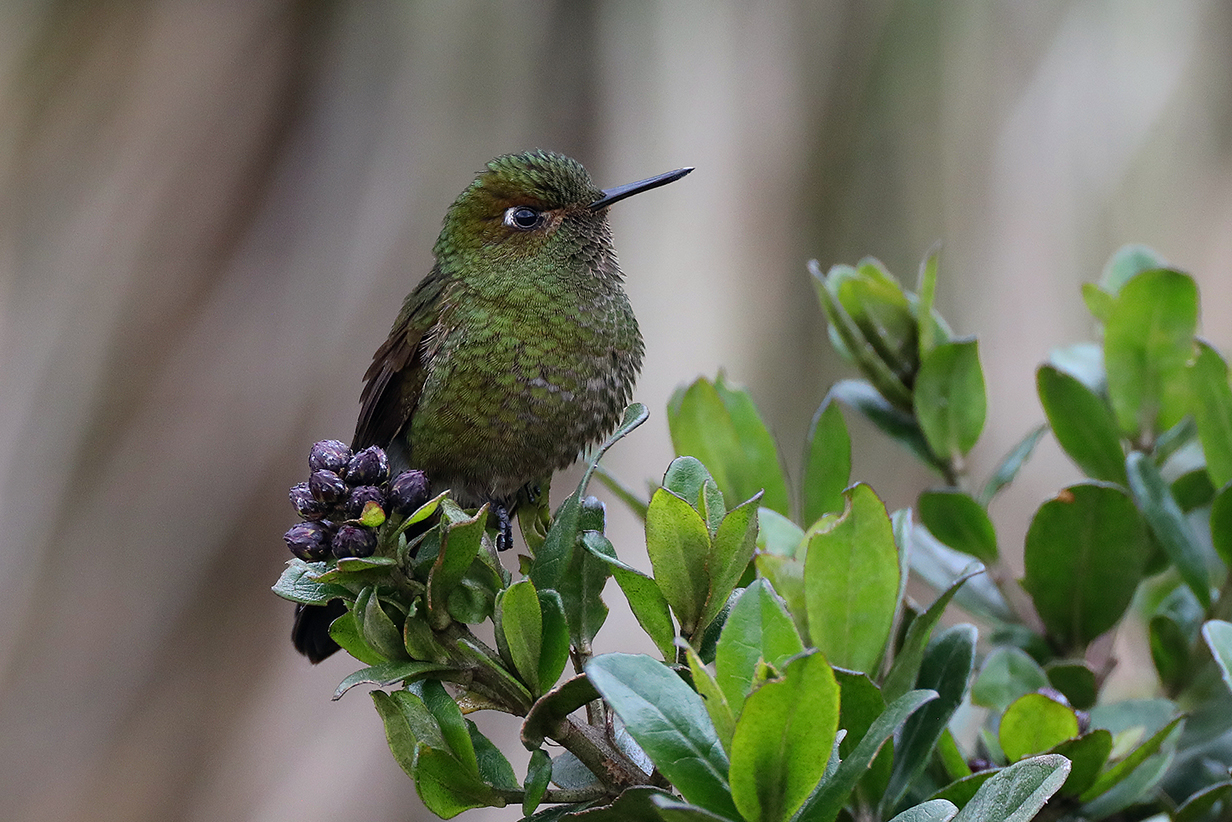
Viridian metaltail male at ~ 4000 m = 12,100 feet altitude, almost exactly at the continental divide. Even here, hummingbirds thrive. A Viridian metaltail female was John's life bird earlier in the day. Mary saw hers in 2017.
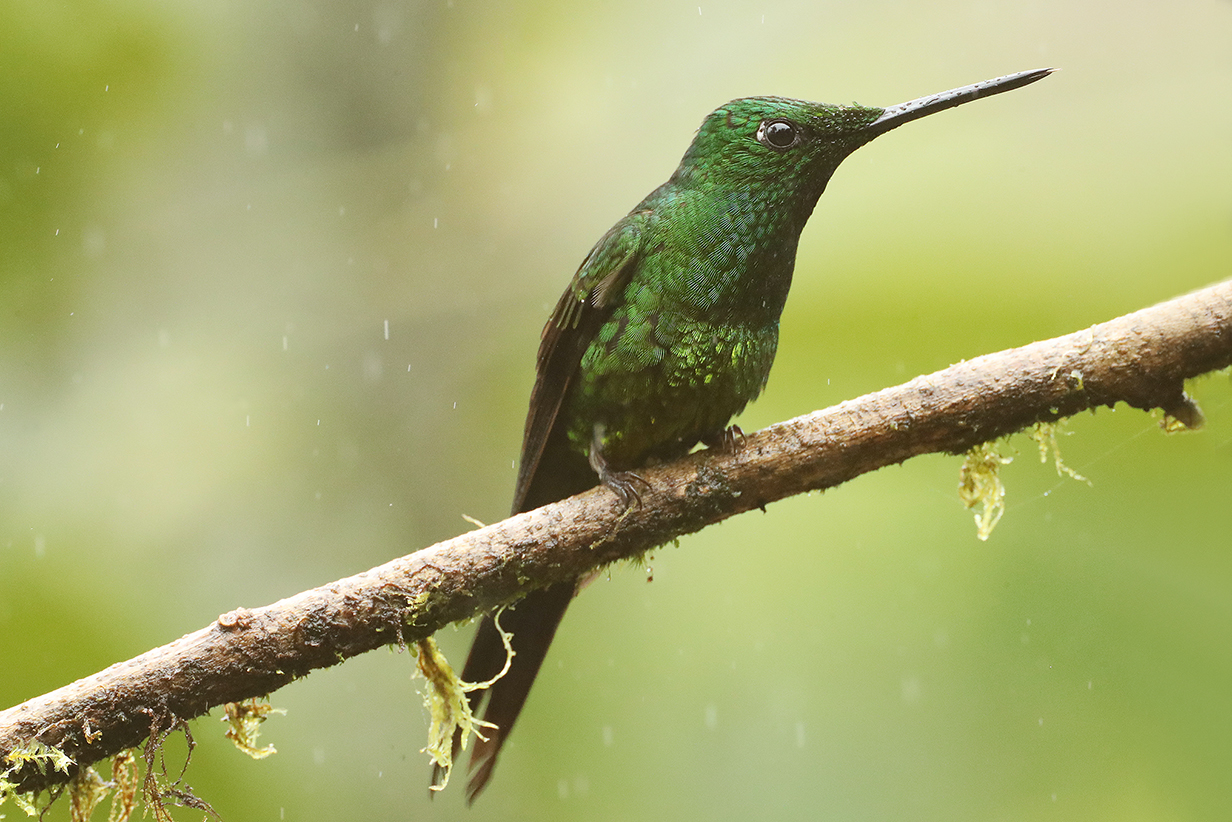
Empress brilliant (This is commonly the dominant hummingbird at feeders on the west side of the Andes.)
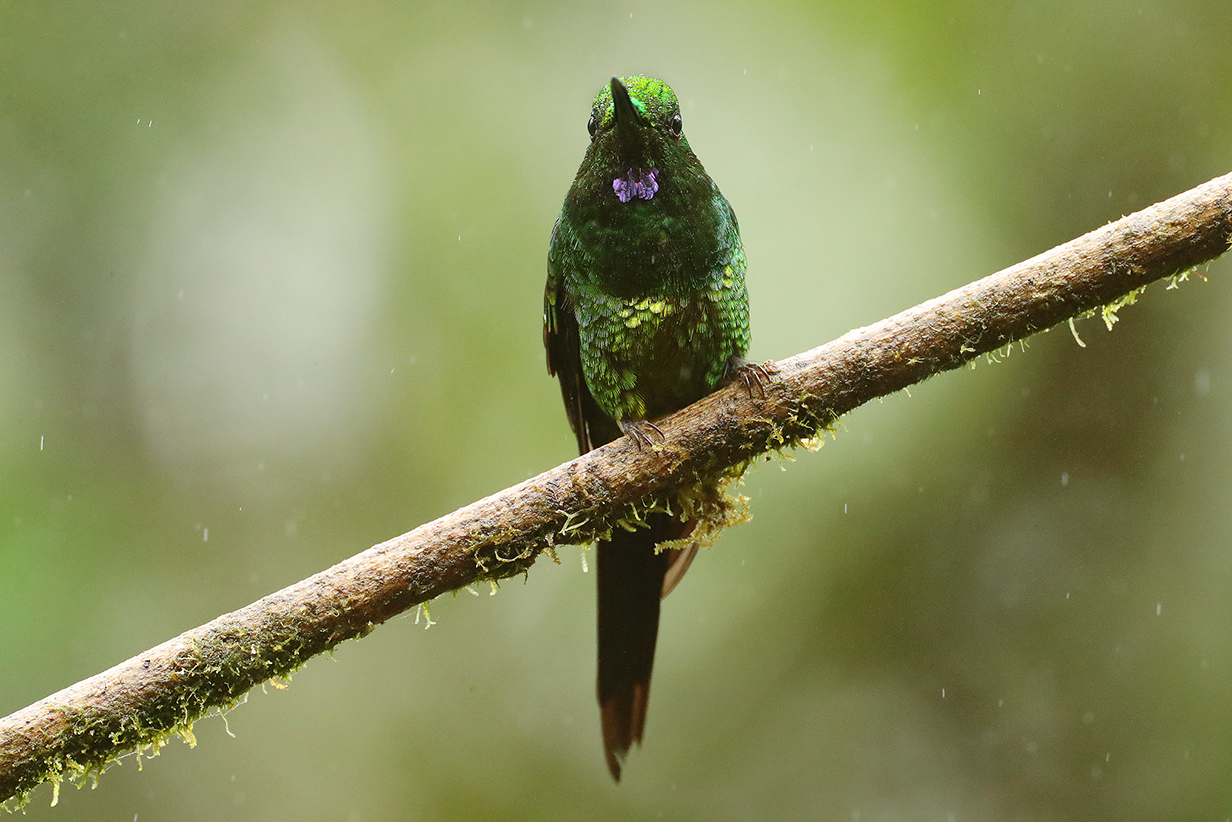
Empress brilliant from just the right angle (hard to see in the field) to show the purple irridescence in the throat.
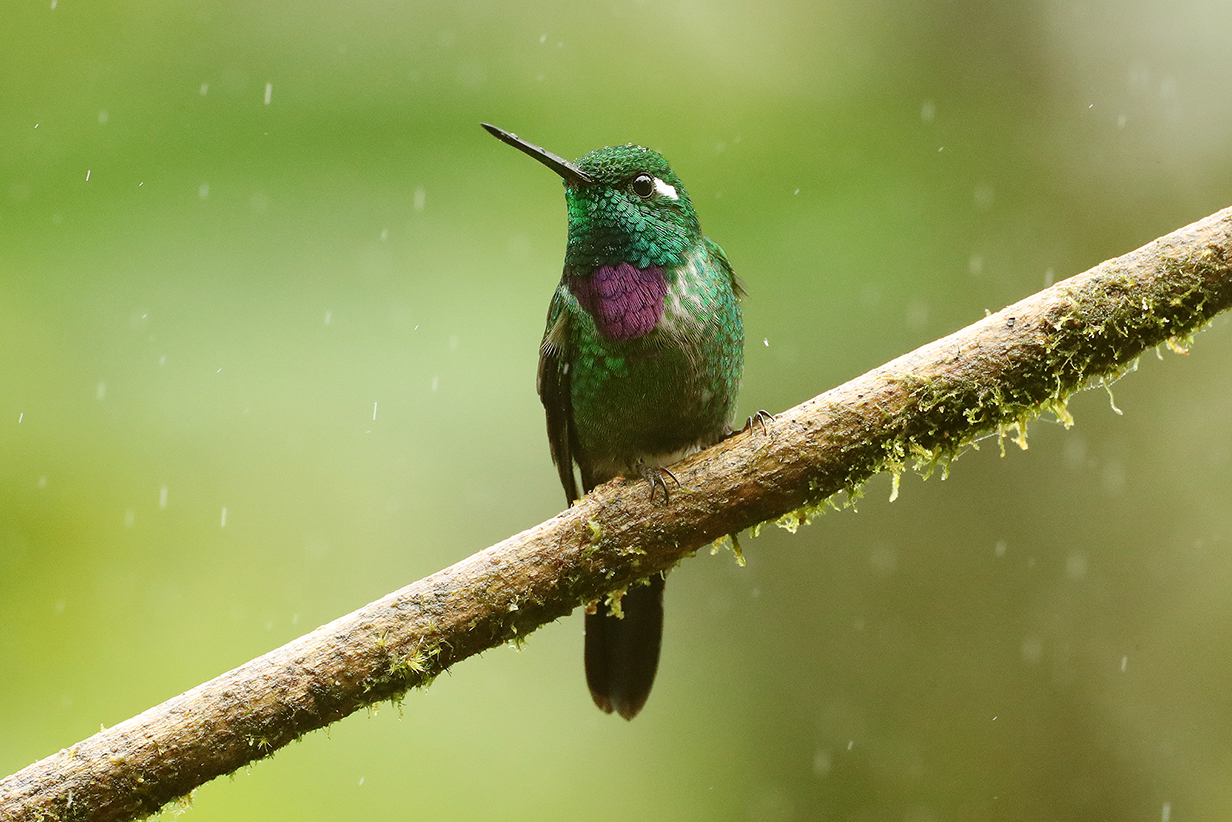
Purple-bibbed whitetip in the rain

Chestnut-breasted coronet
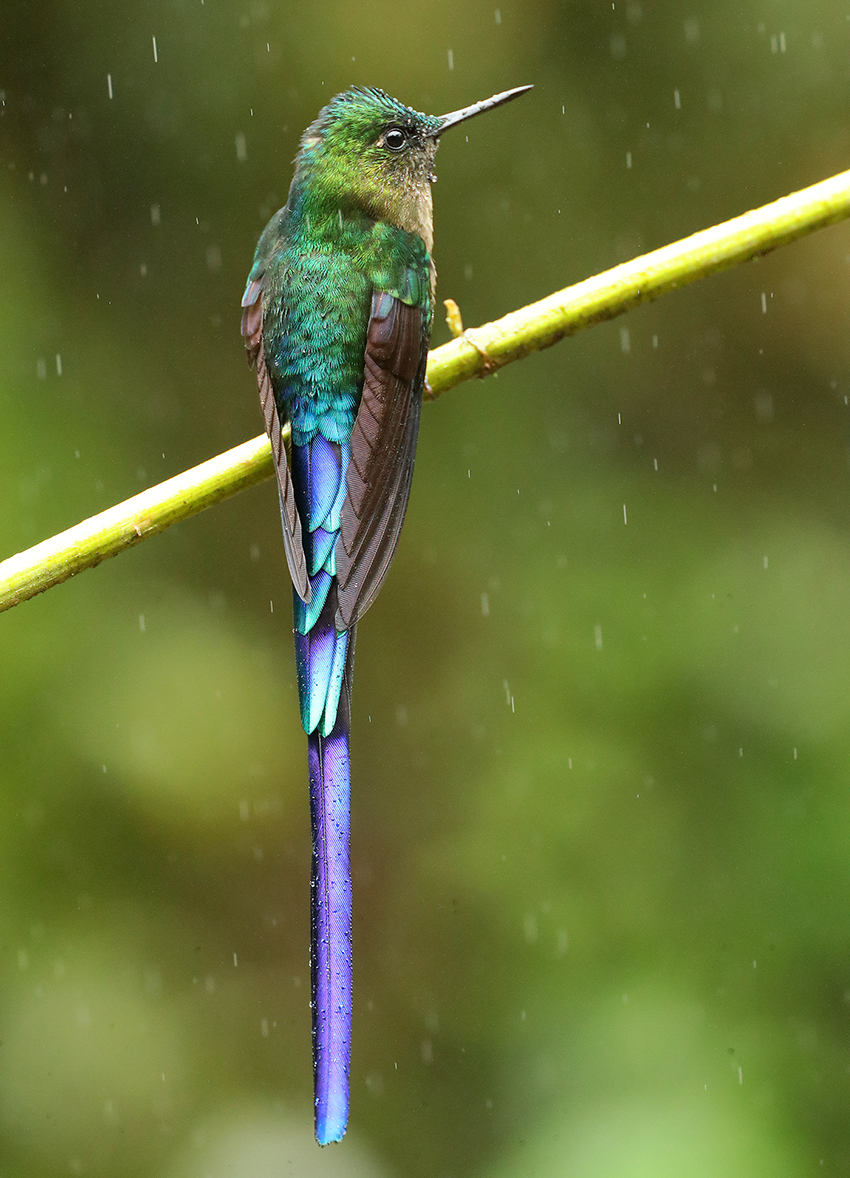
Violet-tailed sylph
End of Hummingbirds
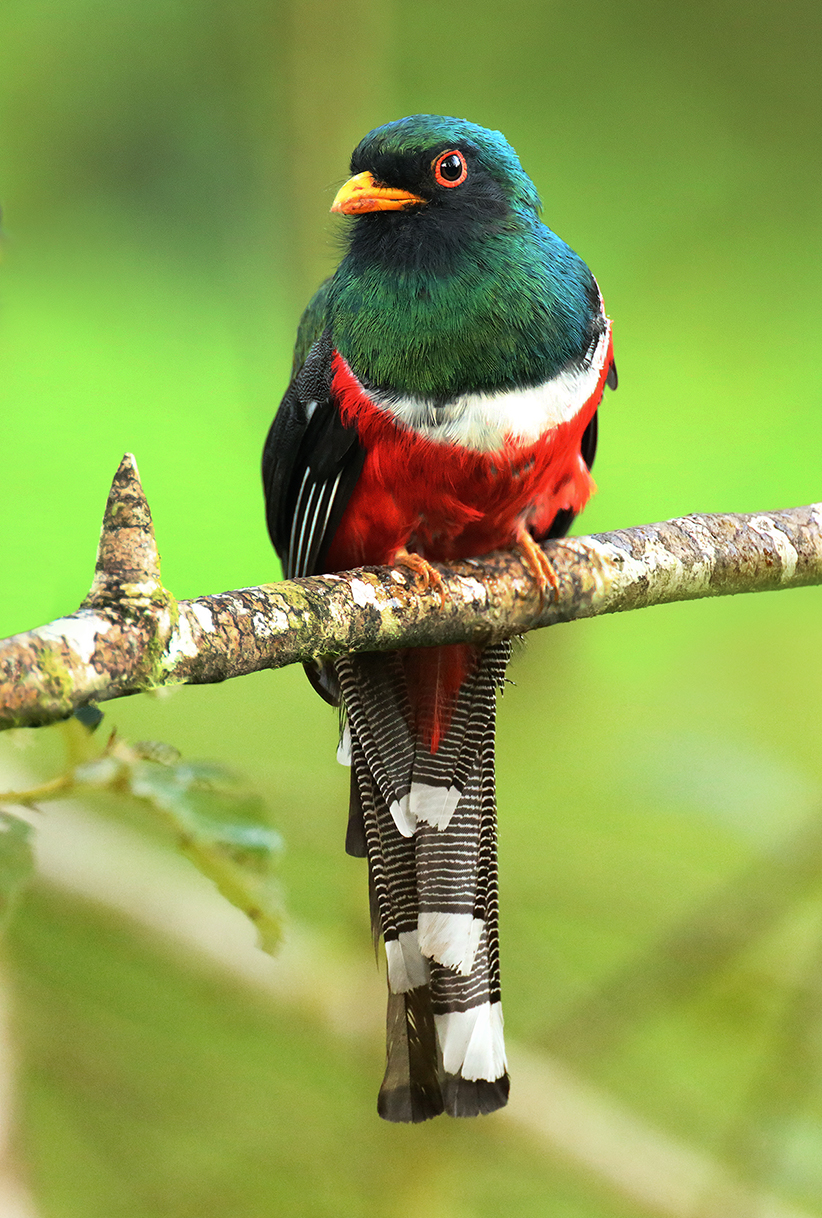
Masked trogon (male, at San Isidro)
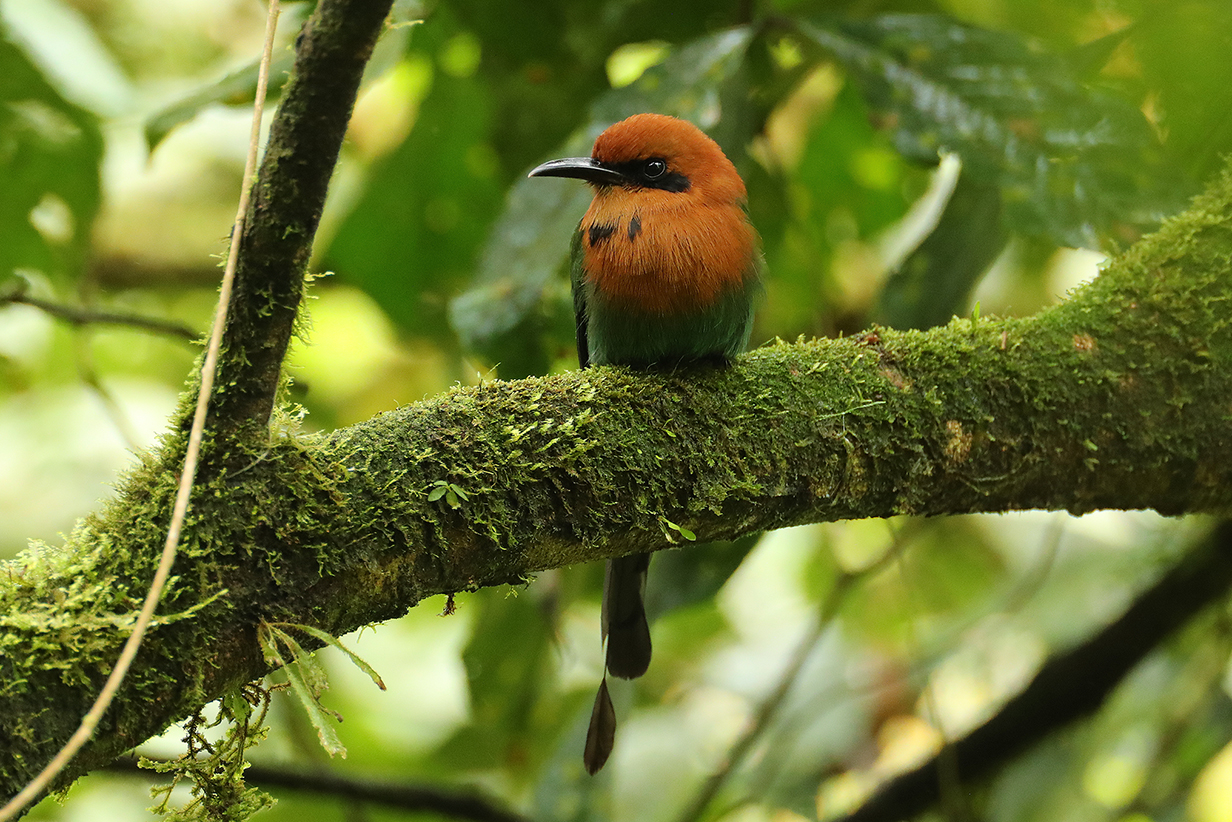
Broad-billed motmot

Green jay (Cyanocorax yncas yncas -- not split from Cyanocorax yncas luxuosus in south Texas) (Not quieter, either)

Red-headed barbet (male)
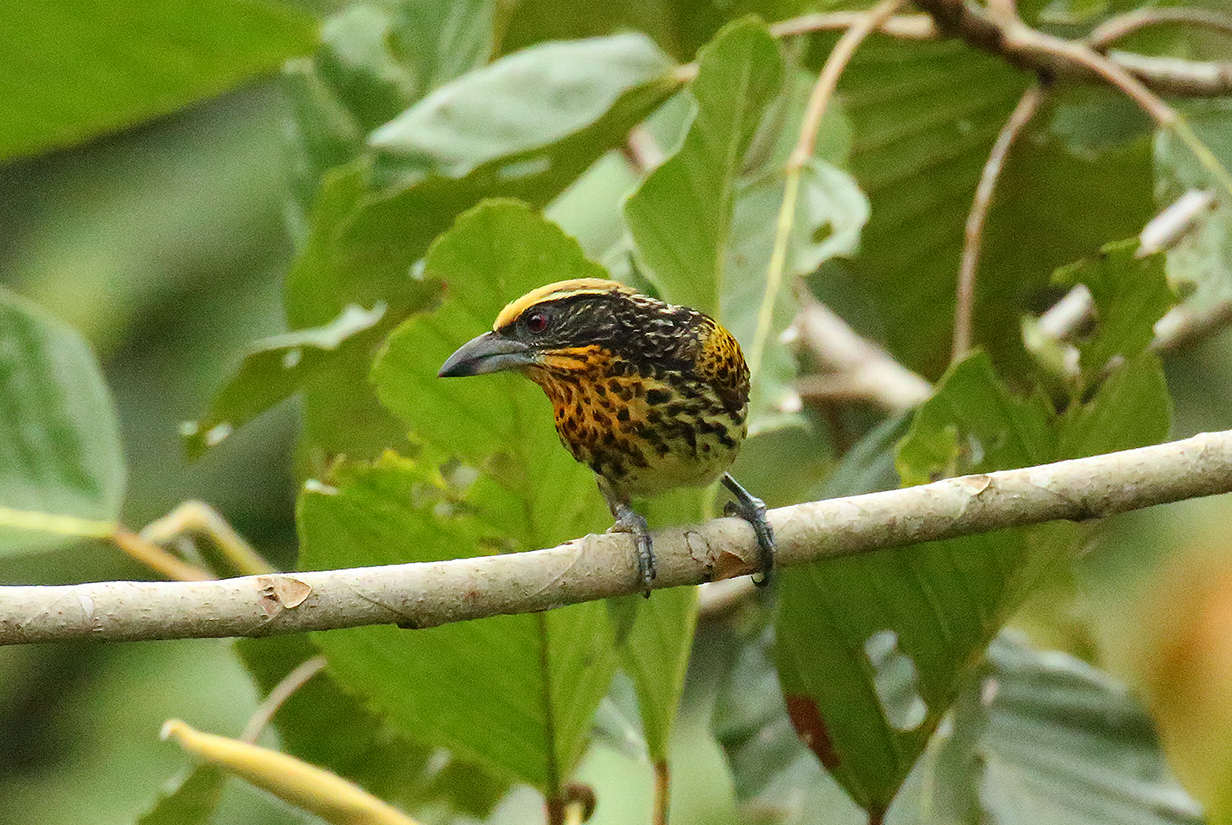
Gilded barbet (This female is John's life bird, in the Kapok tree at Sacha.)
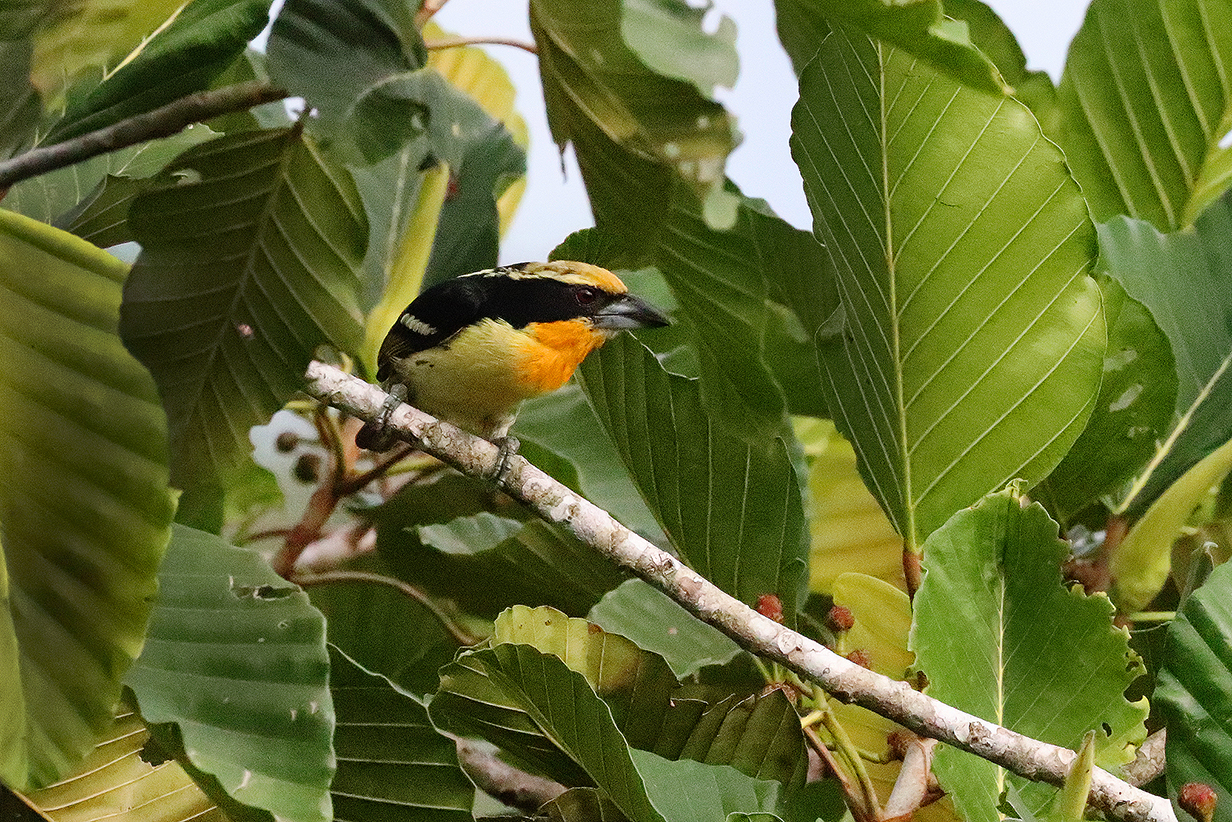
Gilded barbet (male, also in the Kapok tree)
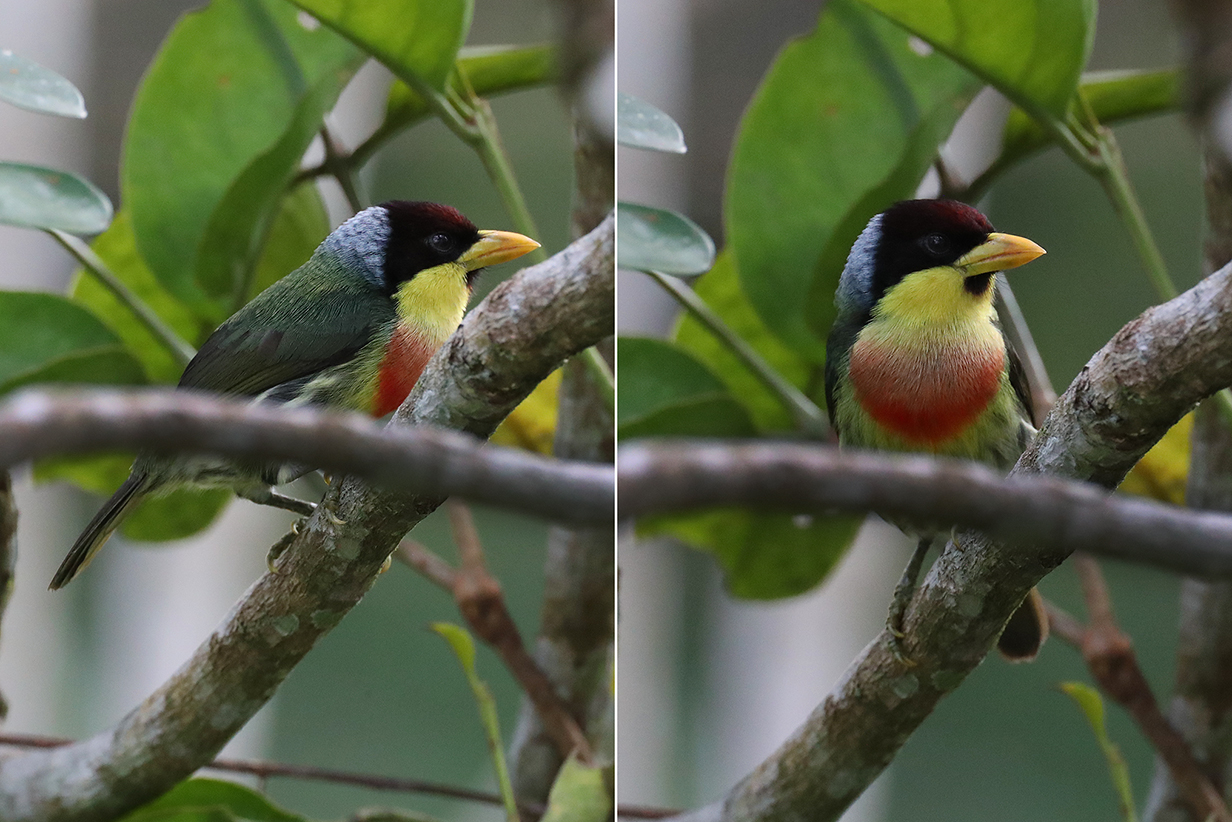
Lemon-throated barbet
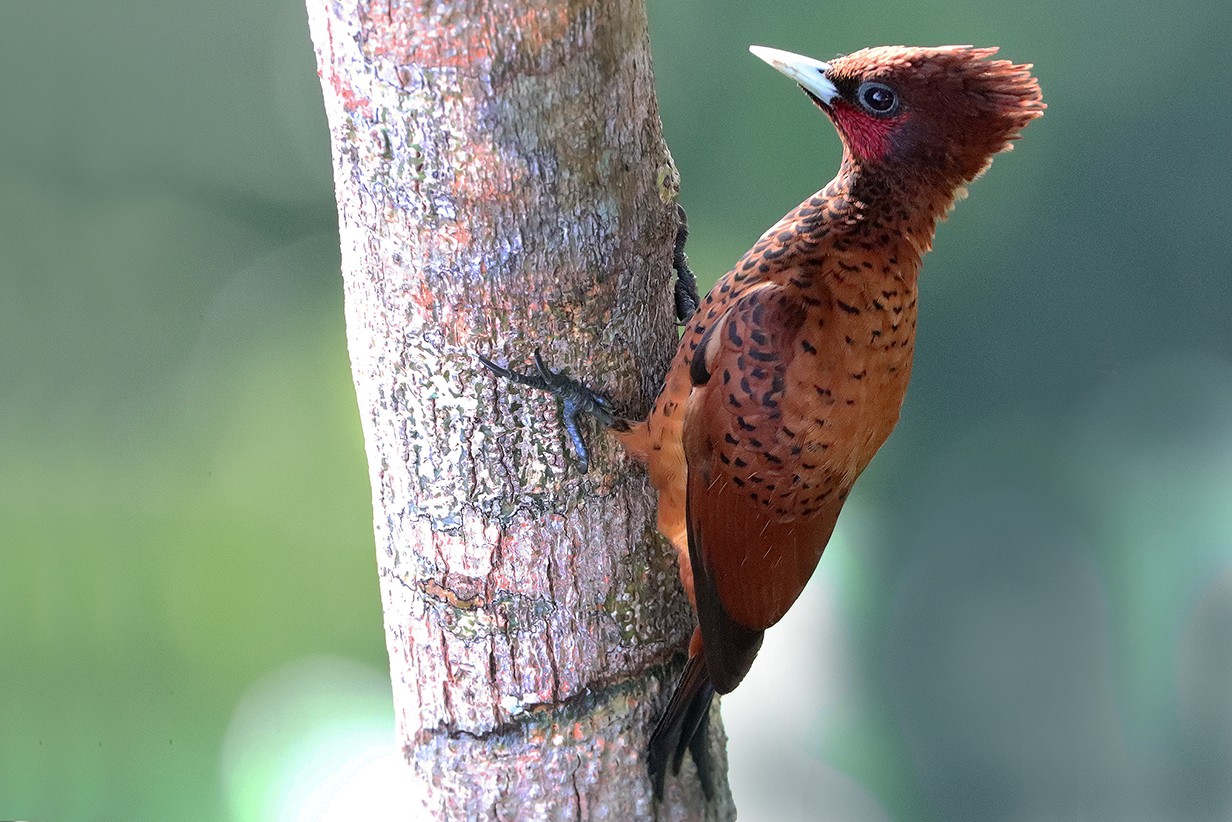
Scale-breasted woodpecker from the Kapok tree tower.
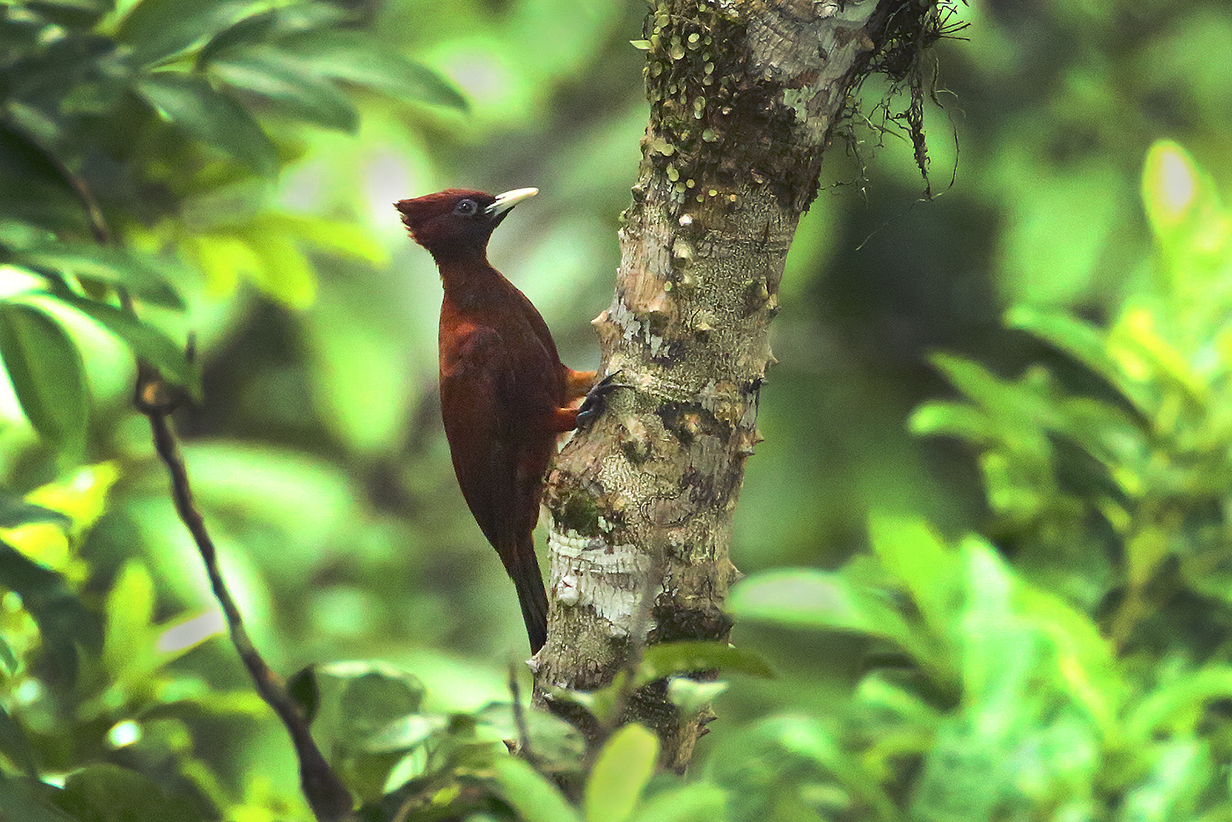
Chestnut woodpecker (seen several times during the trip)

Black-cheeked woodpecker

Crested quetzal (This is John's life bird, at San Isidro.)
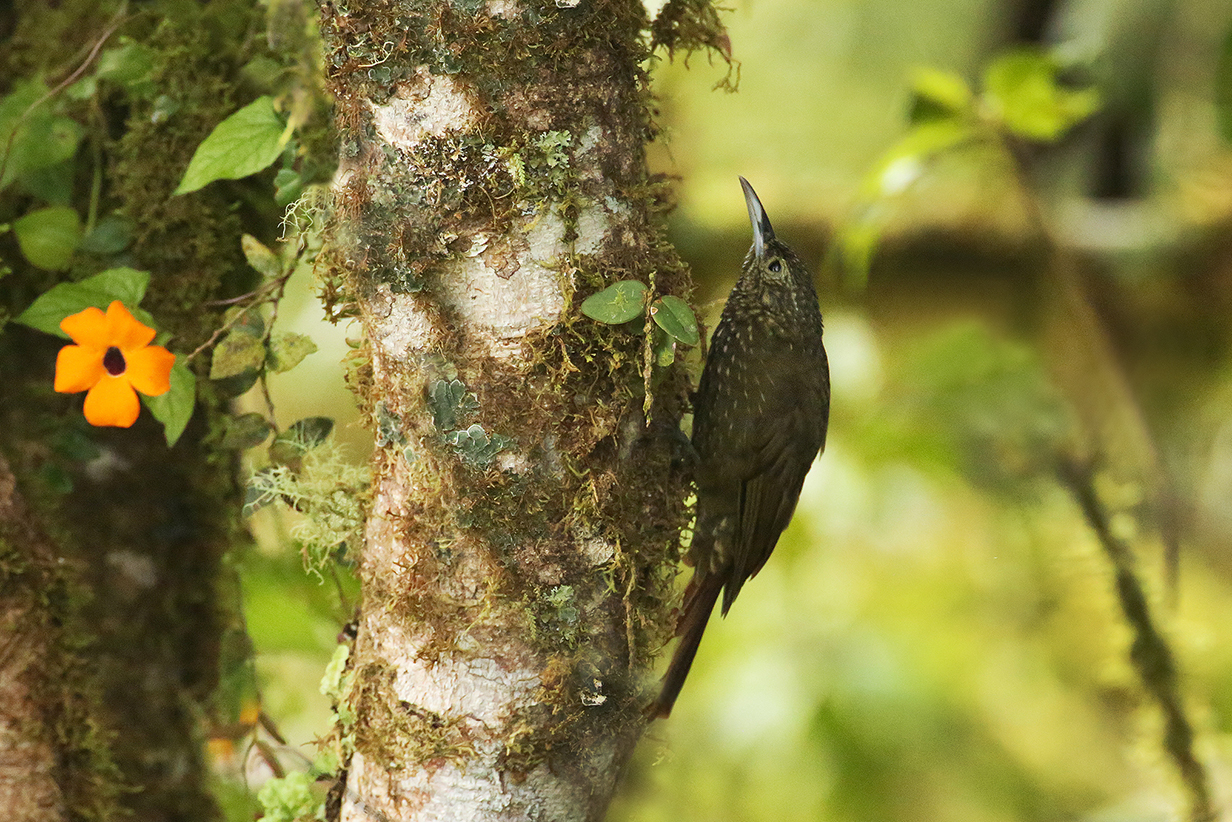
Olive-backed woodcreeper at San Isidro

Montane woodcreeper (seen often in the trip)
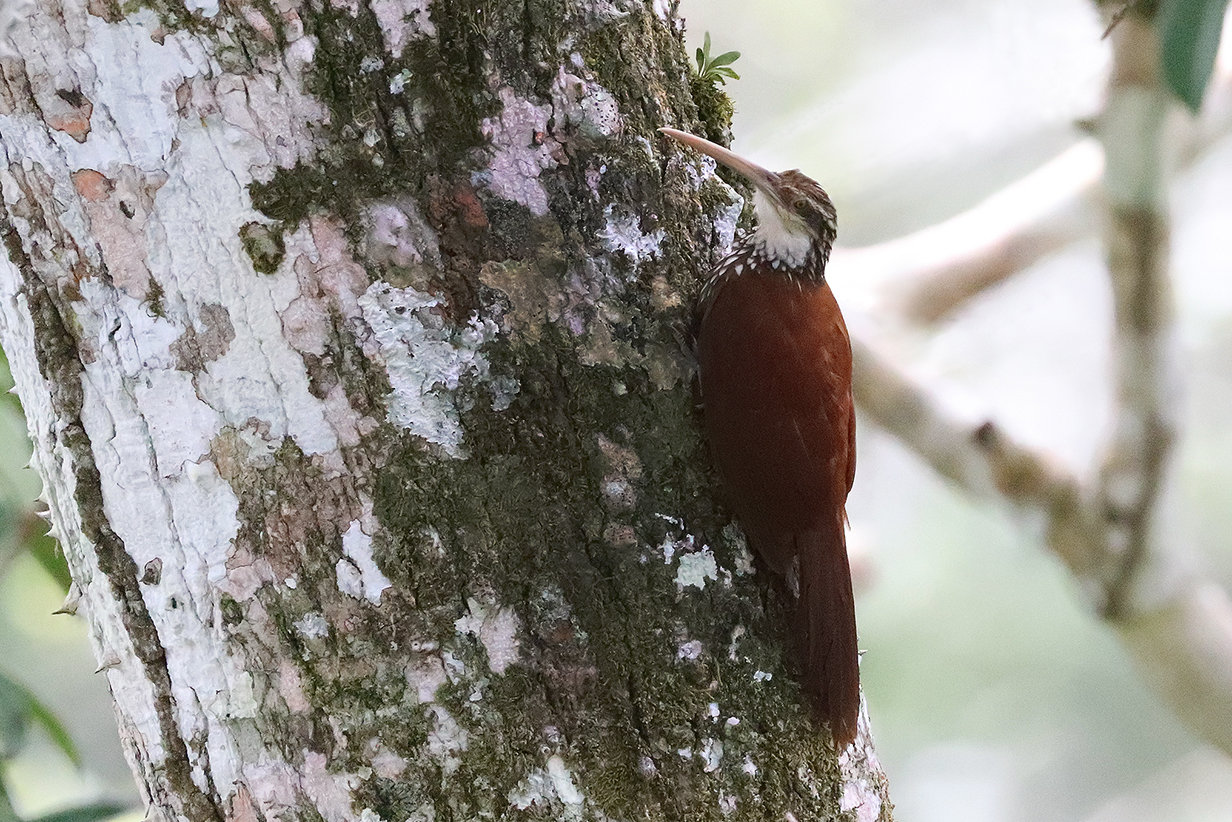
Long-billed woodcreeper (also seen several times)
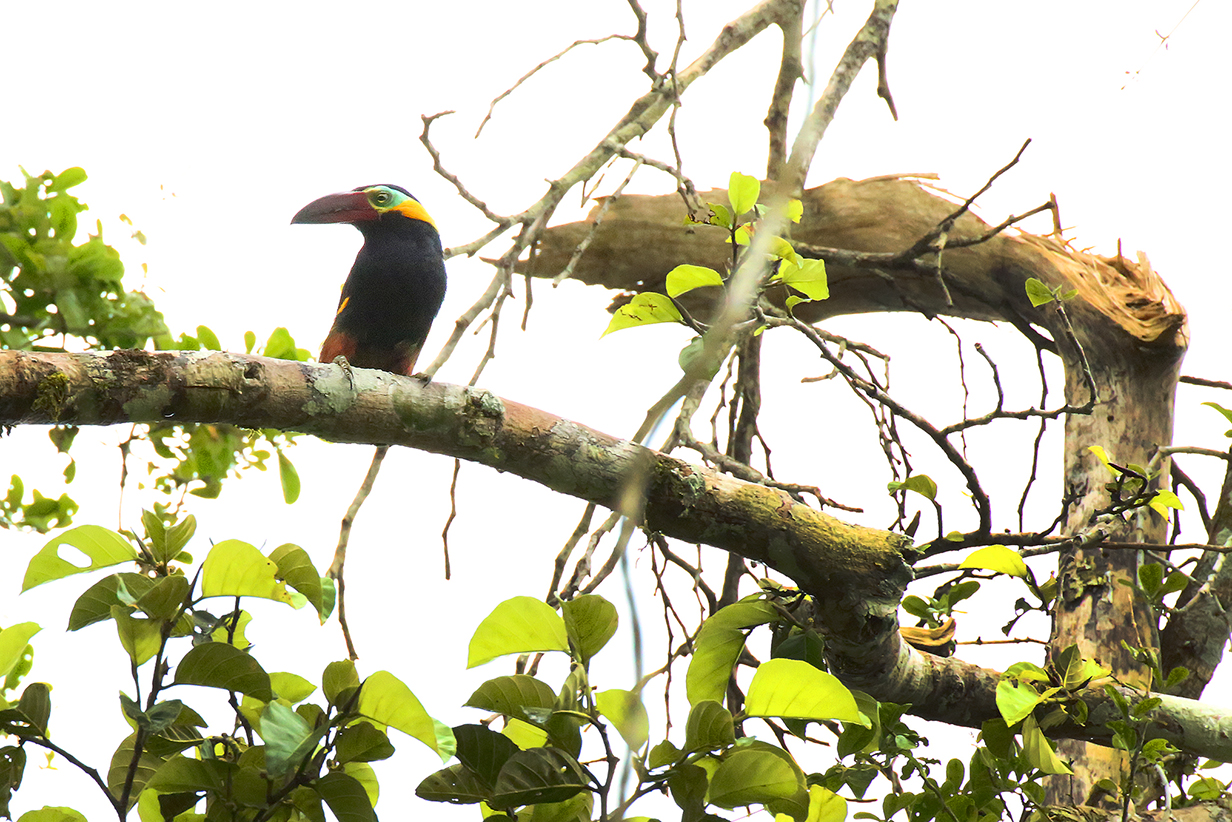
Golden-collared toucanet in a blasted tree (There was a lot of damage at Sacha from a ferocious wind storm. This is our life bird.)
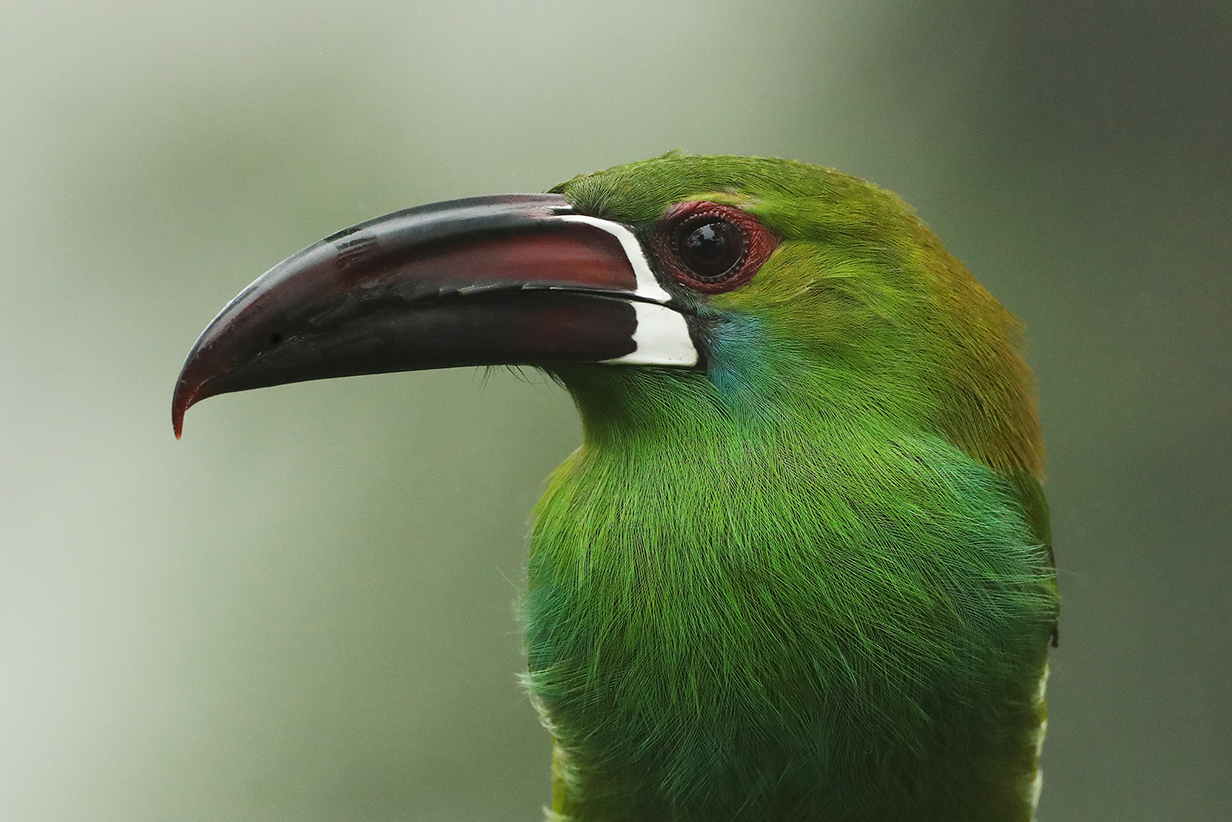
Crimson-rumped toucanet

Many-banded aracari from the Kapok tree tower. Our life bird came earlier in the trip.

Chestnut-eared aracari
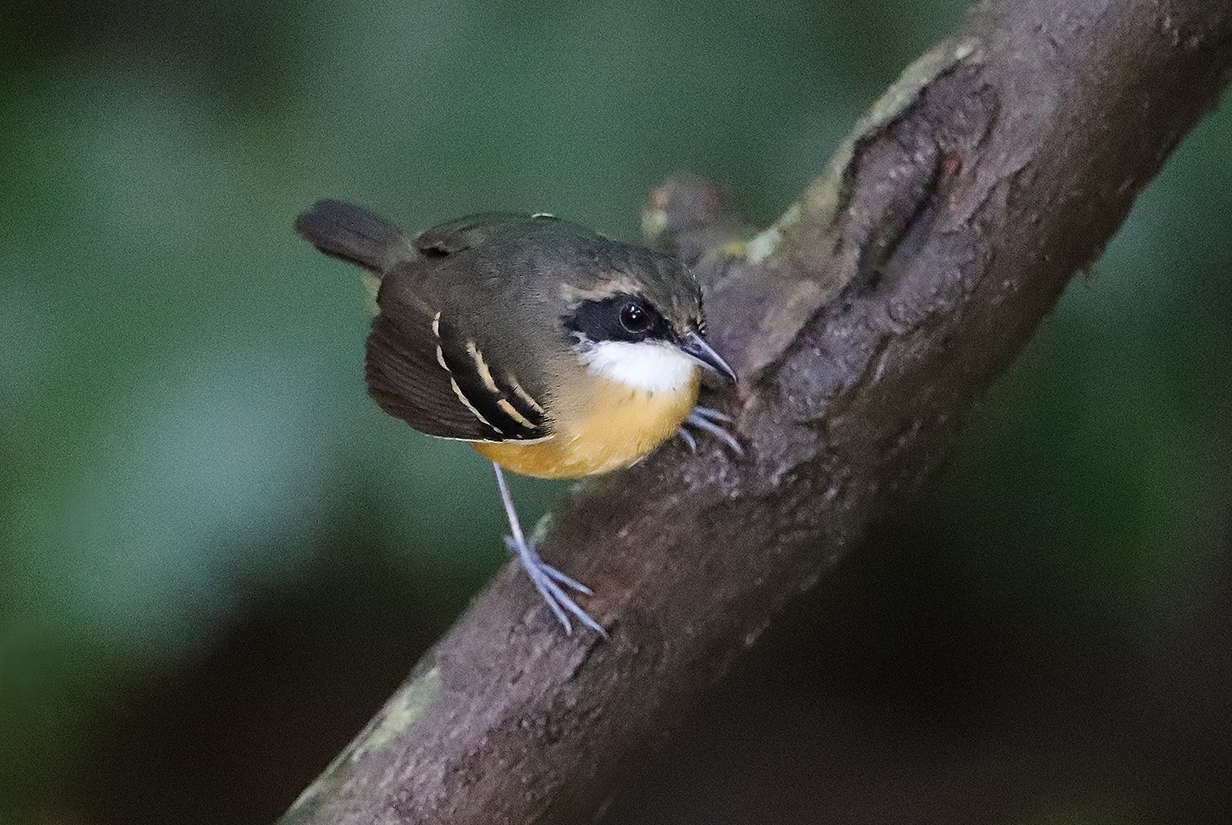
Black-faced antbird (Female. John especially likes all ant-associated birds -- antbirds, antwrens, antshrikes, and antpittas. They are virtually always very hard to see and even harder to photograph. This picture and the next one of a male are the best that he has ever gotten.)
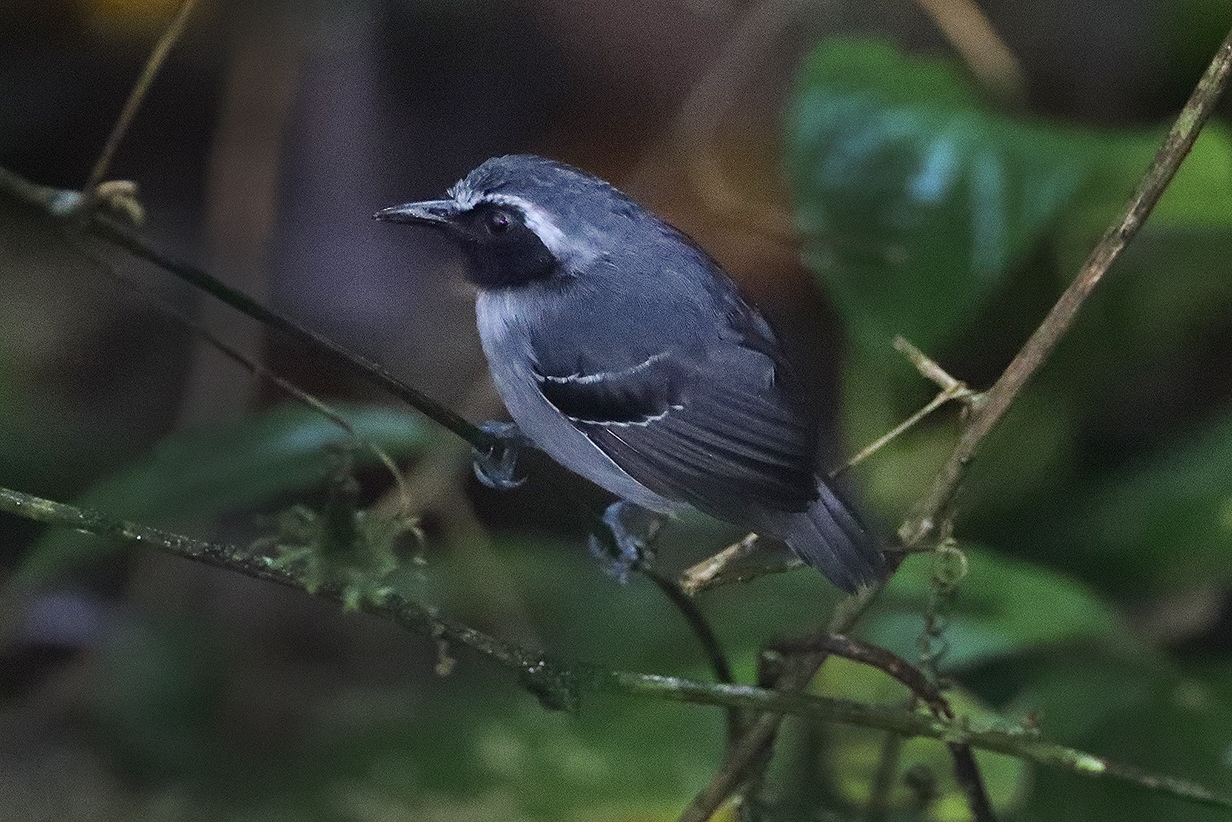
Black-faced antbird (male)

Plain-throated antwren (This male is John's life bird. I had to rescue a terribly overexposed picture: the camera was set to overexpose for a backlit bird, and I didn't have time to reset it. I rarely get a chance to photograph an antbird, and I had to hurry. As a result, the only thing that is shown in correct colors is the bird: it really is plain, cold gray and black. But this has to be a picture that I treasure.)
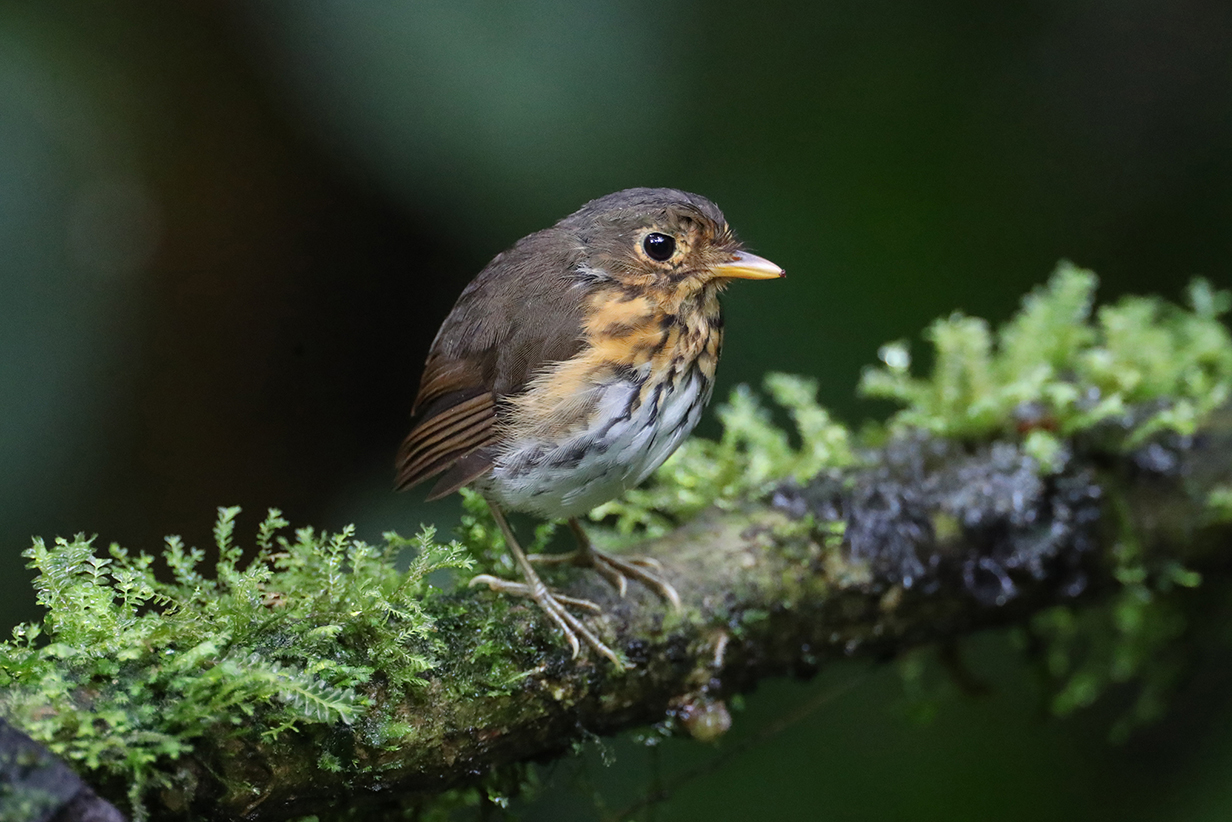
Ochre-breasted antpitta (This is Mary's life bird; John got his life bird in 2017.)
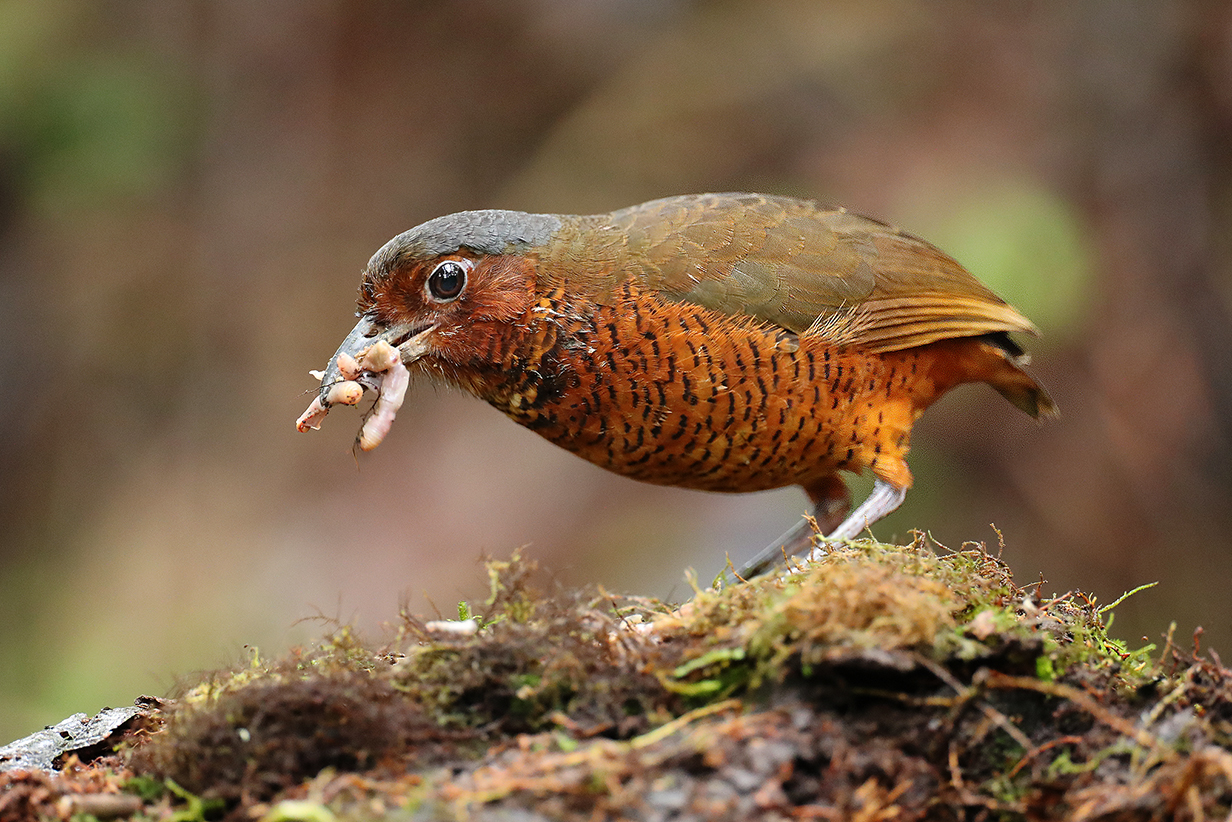
Giant antpitta, starting to "load up" for its chick (This is John's life bird.)
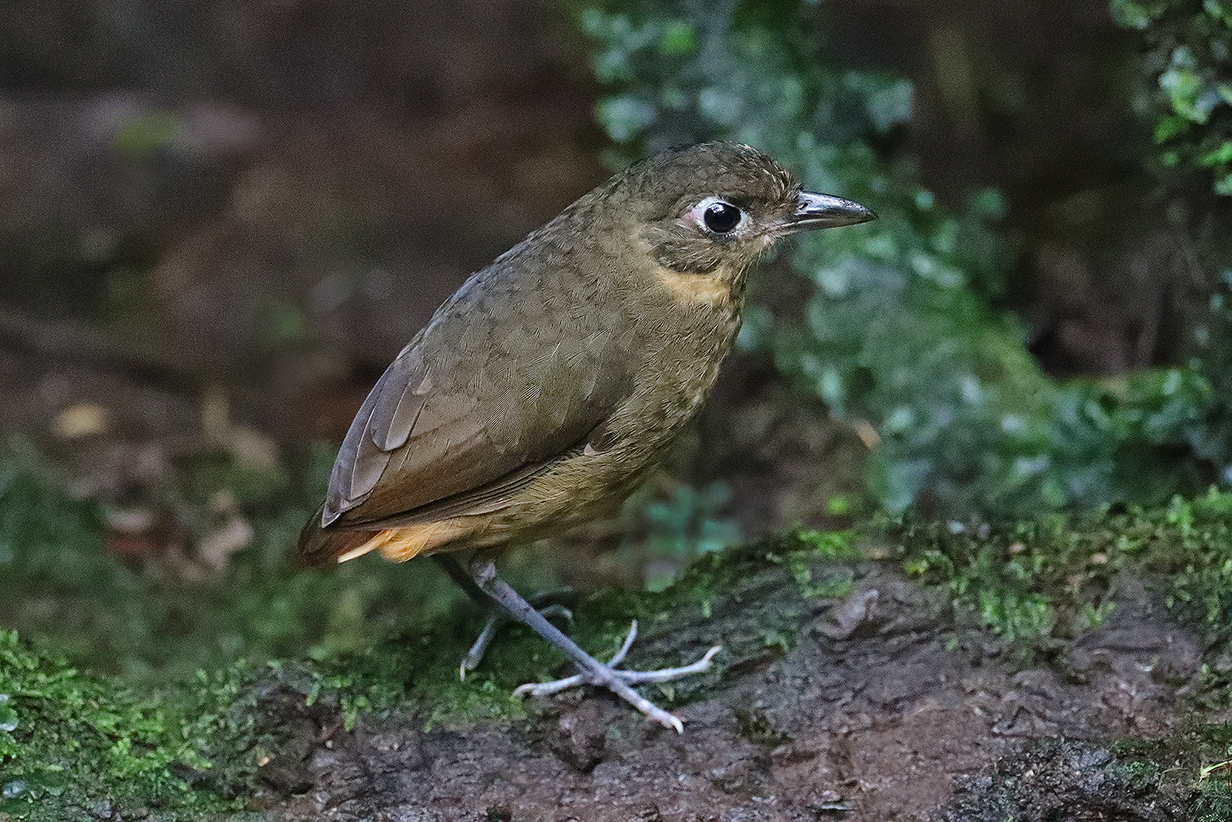
Plain-backed antpitta (This is our life bird.)
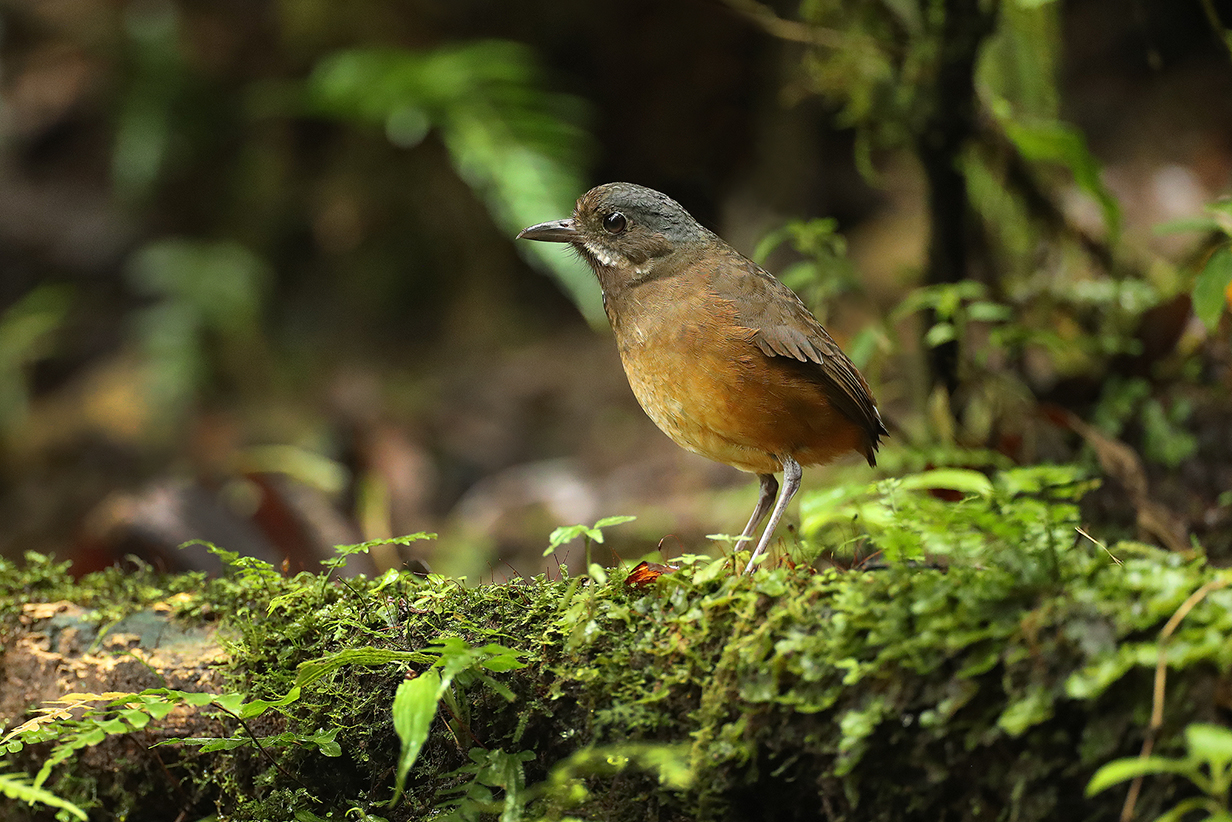
Moustached antpitta

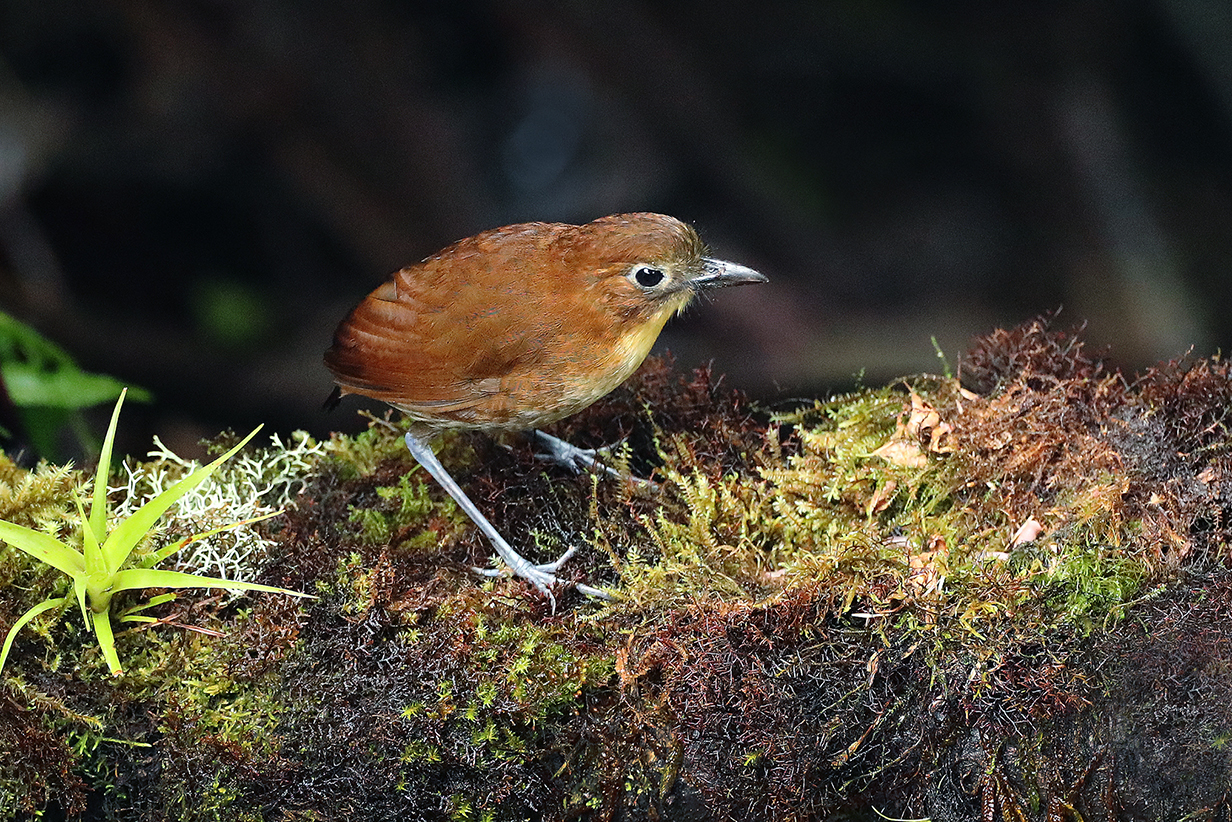
Yellow-breasted antpitta (This is our life bird.)

Chestnut-crowned antpitta (This is our life bird and fourth antpitta of the 23rd day of the trip, brought to us by the "antpitta whisperer" Angel Paz.)
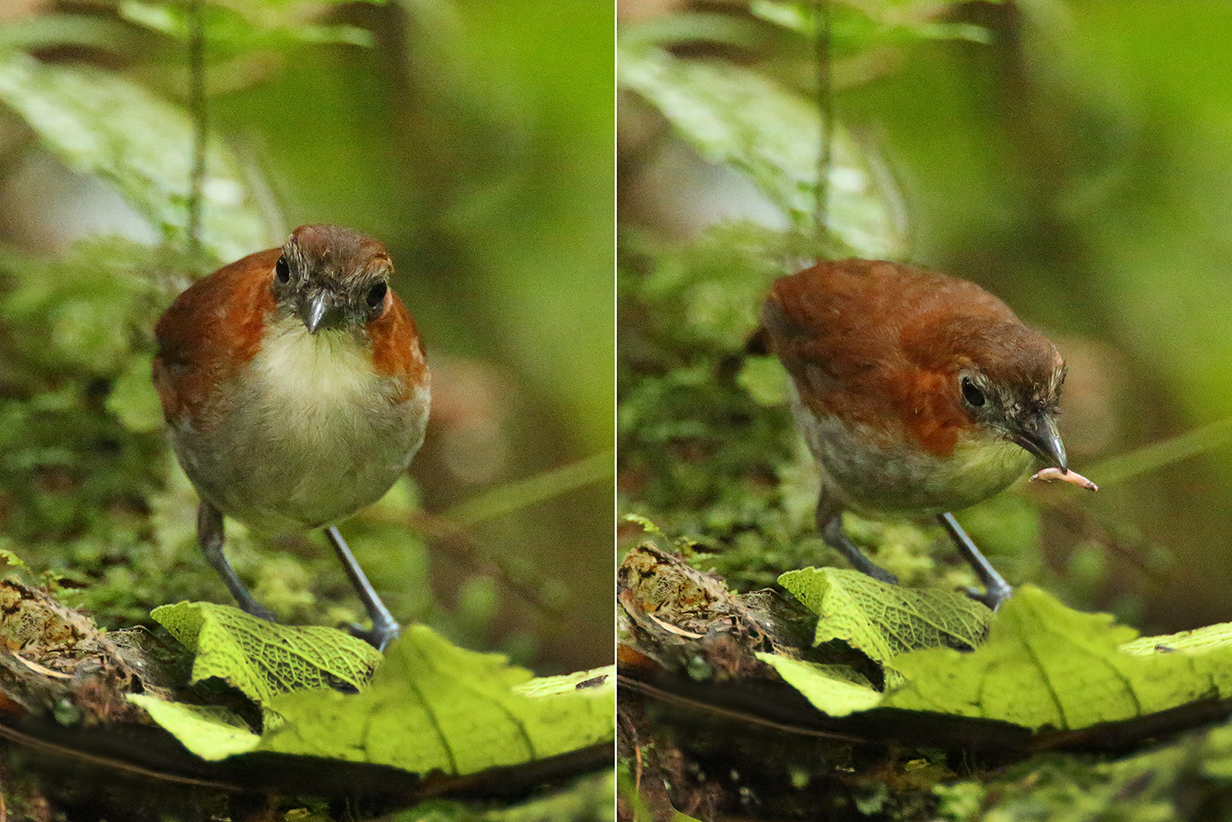
White-bellied antpitta (John's life bird)
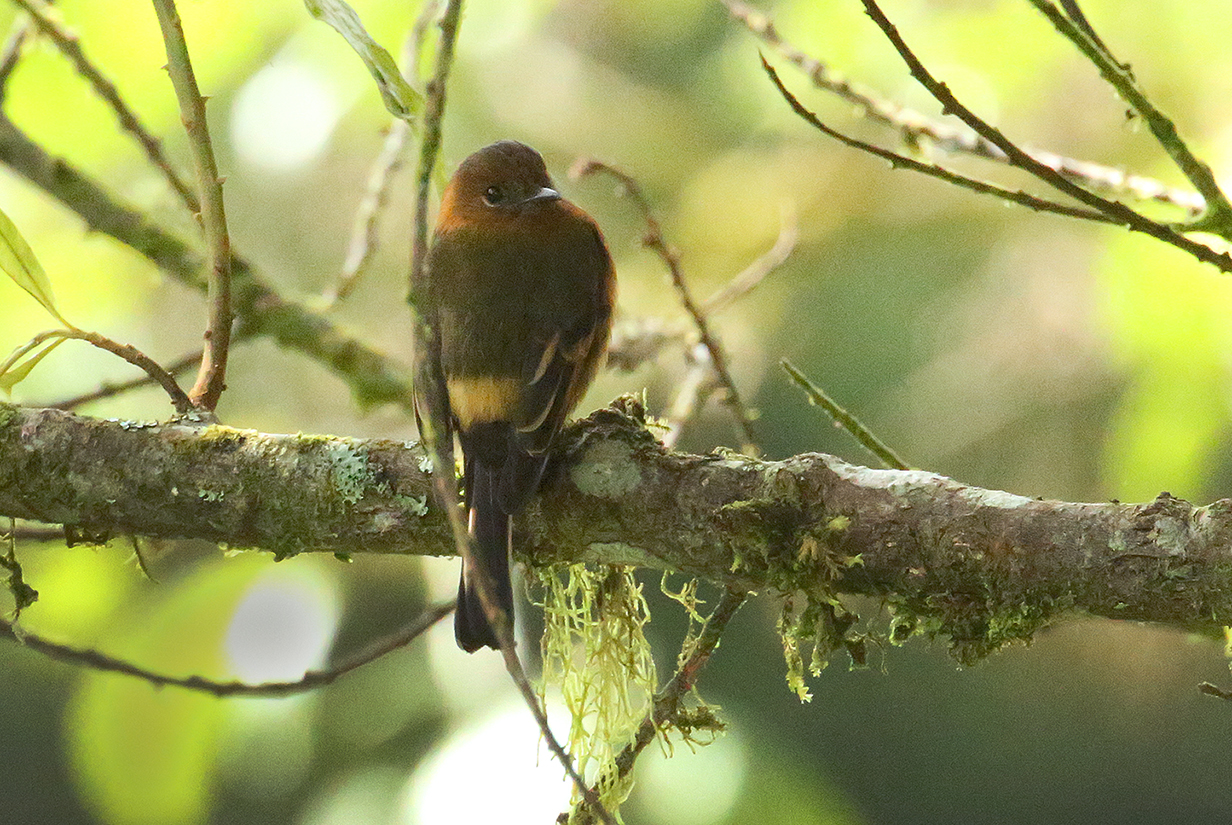
Cinnamon flycatcher
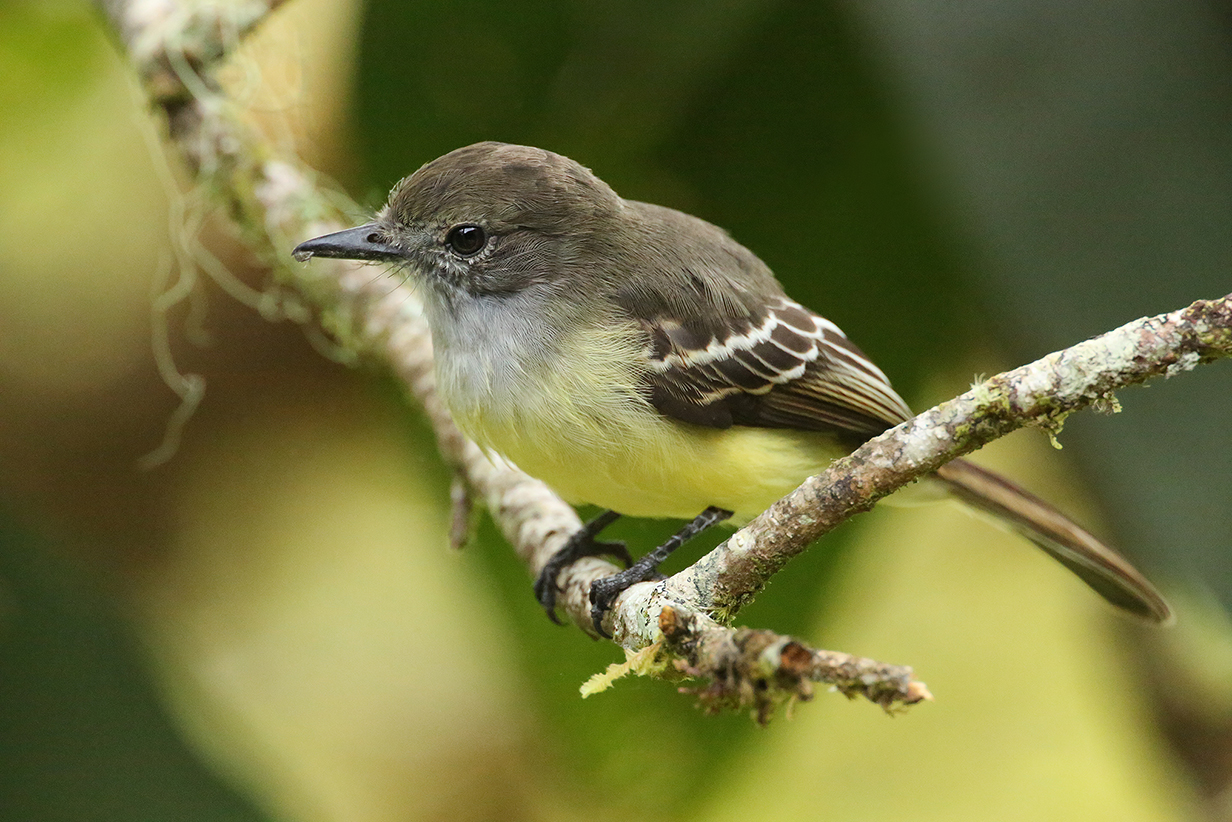
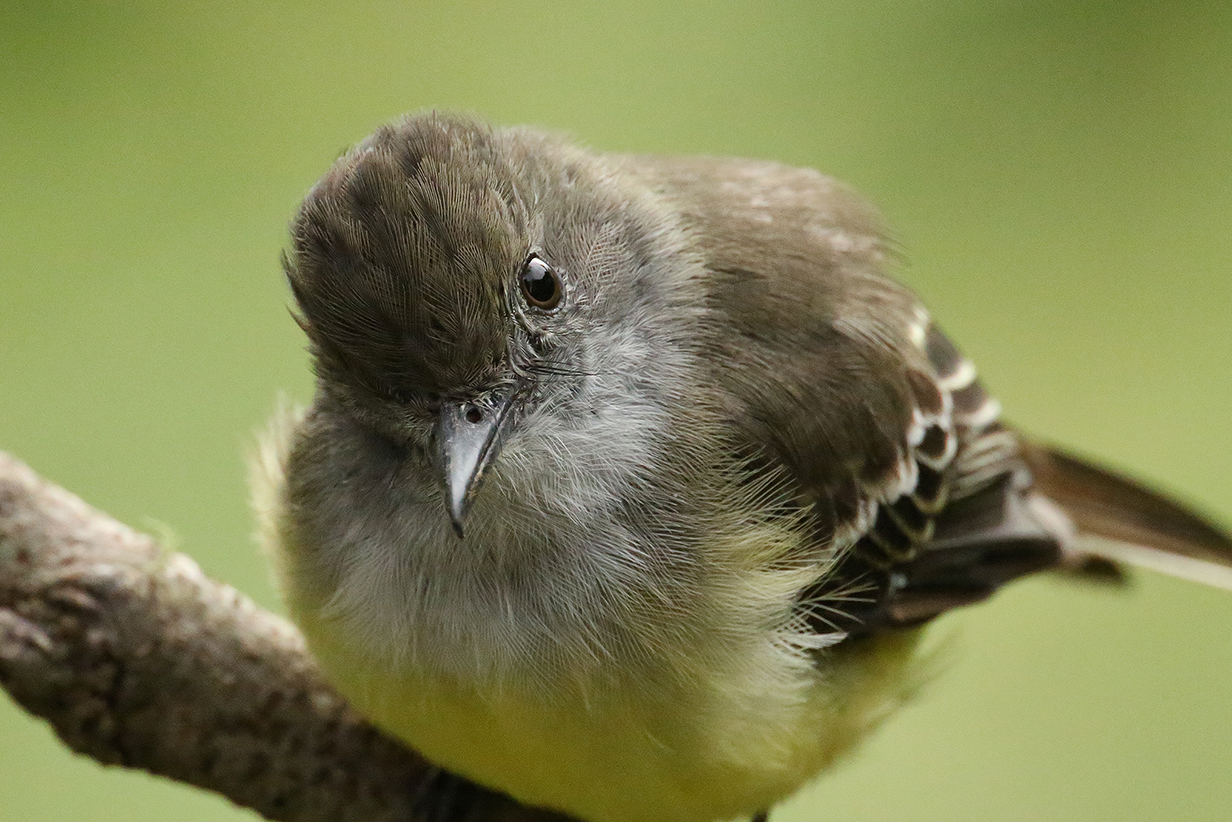
Pale-edged flycatcher (very cooperative)

Short-crested flycatcher
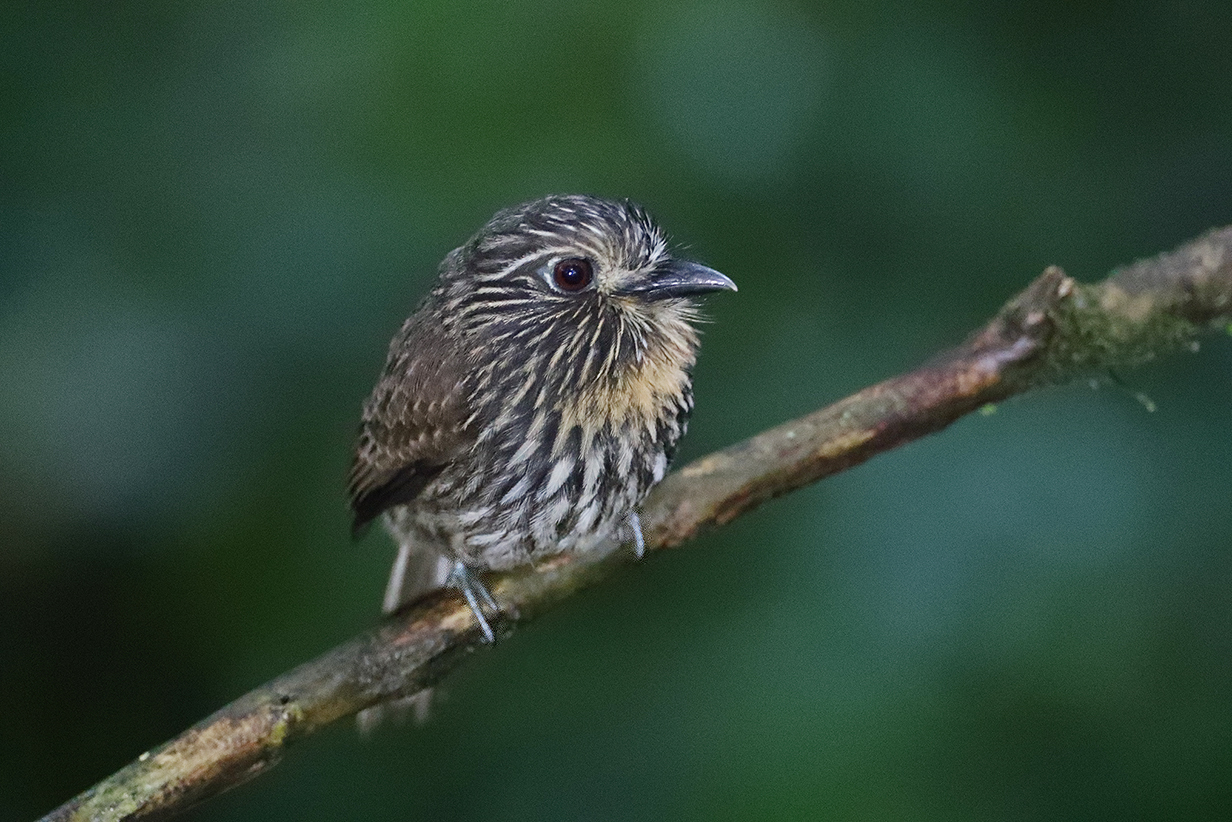
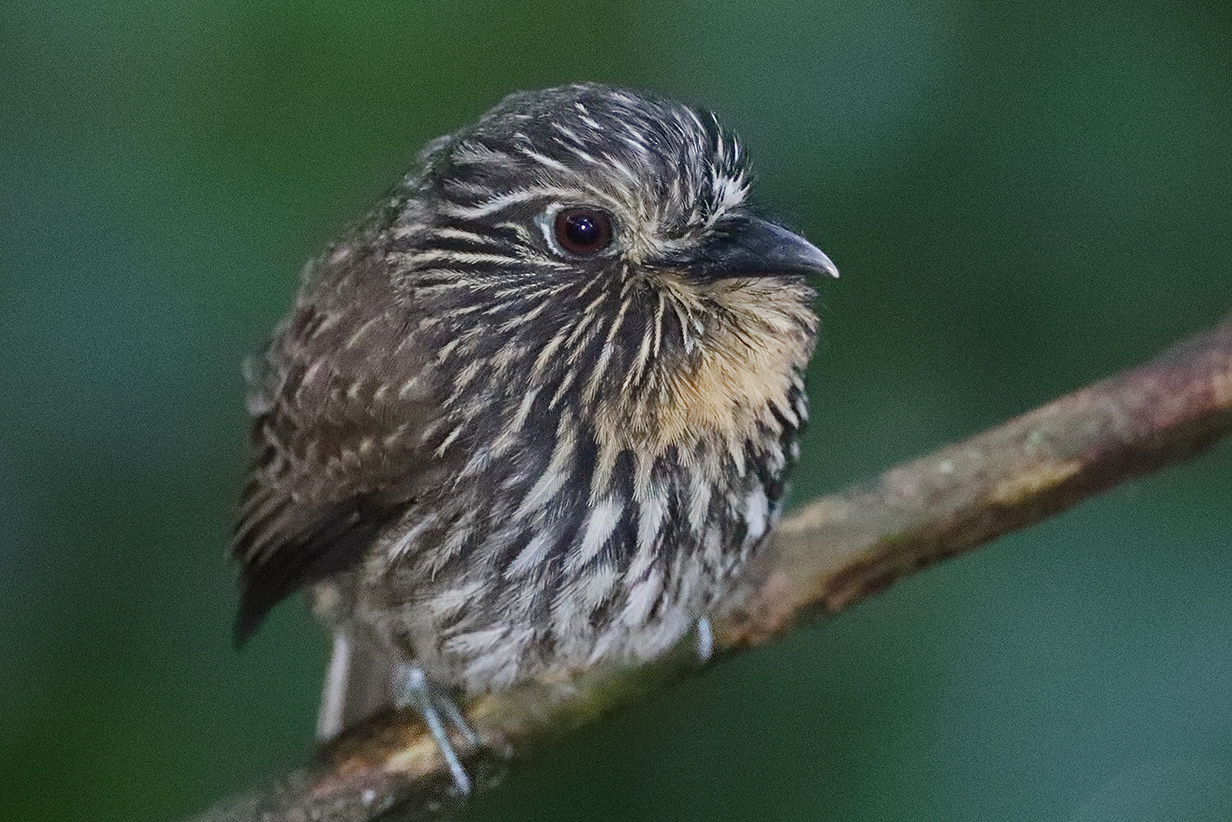
Black-streaked puffbird (This is our life bird.)
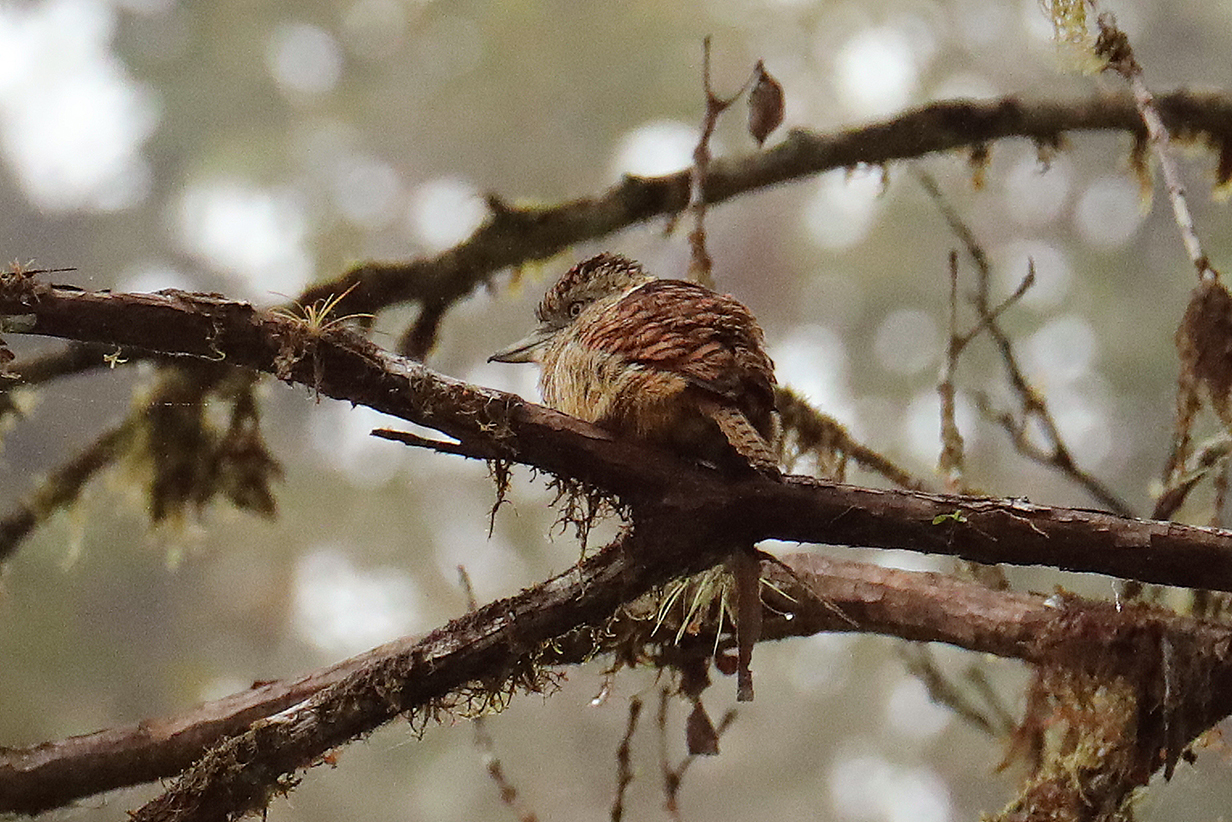
Barred puffbird (2 x 400 mm telephoto +Canon 1DX camera) This is our life bird.
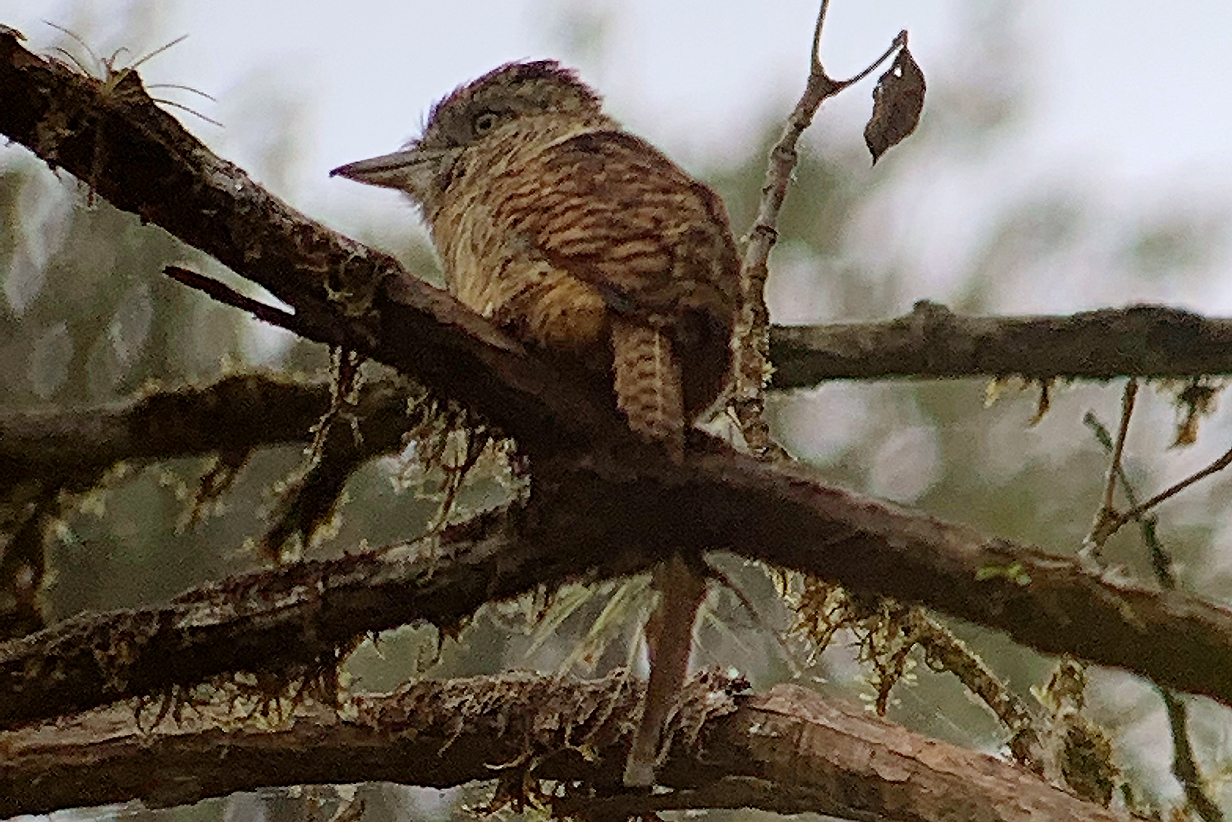
Barred puffbird again, digiscoped by Juan Carlos Calvachi using his spotting scope and Mary's iphone. I came to respect the remarkable quality that an experienced person can get by digiscoping with a cell phone. Resolution here is comparable to what I get with a much more elaborate and expensive camera setup. And we had examples during the trip where digiscoping decisively beat my long-lens camera setup.

Striolated puffbird (This is our life bird in another impressive digiscoped picture by Juan Carlos Calvachi.)
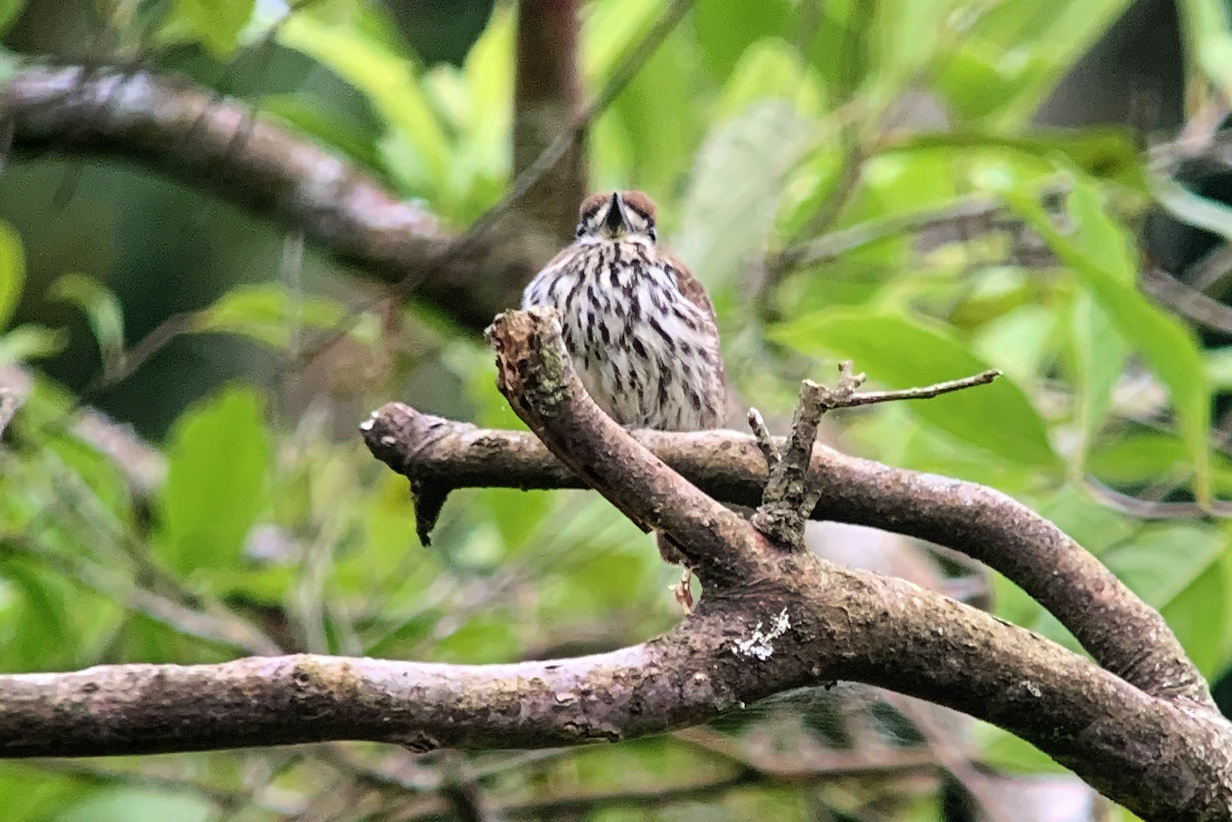
Lanceolated monklet (This is our life bird. Many thanks to Juan Carlos Calvachi for this digiscoped picture.)
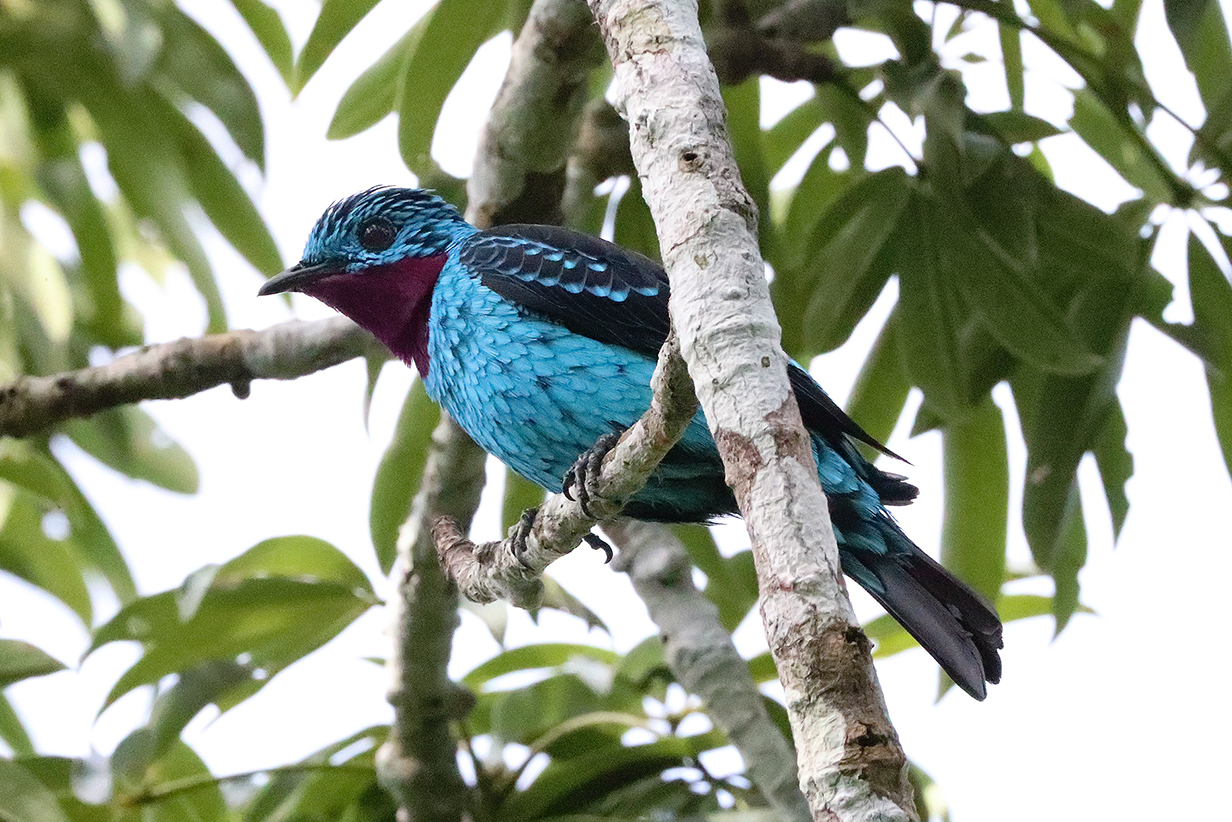
Spangled cotinga from the Kapok tree tower
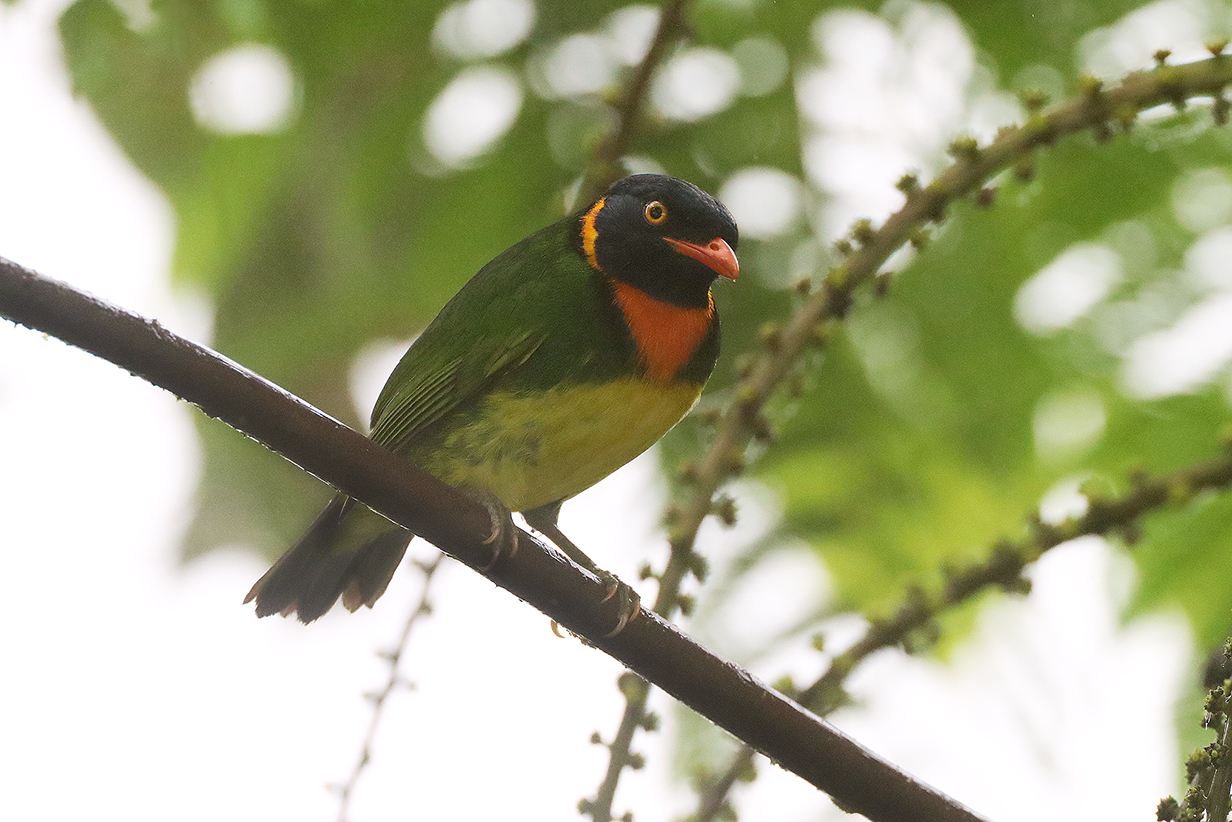
Orange-breasted fruiteater in fog (This is our life bird.)
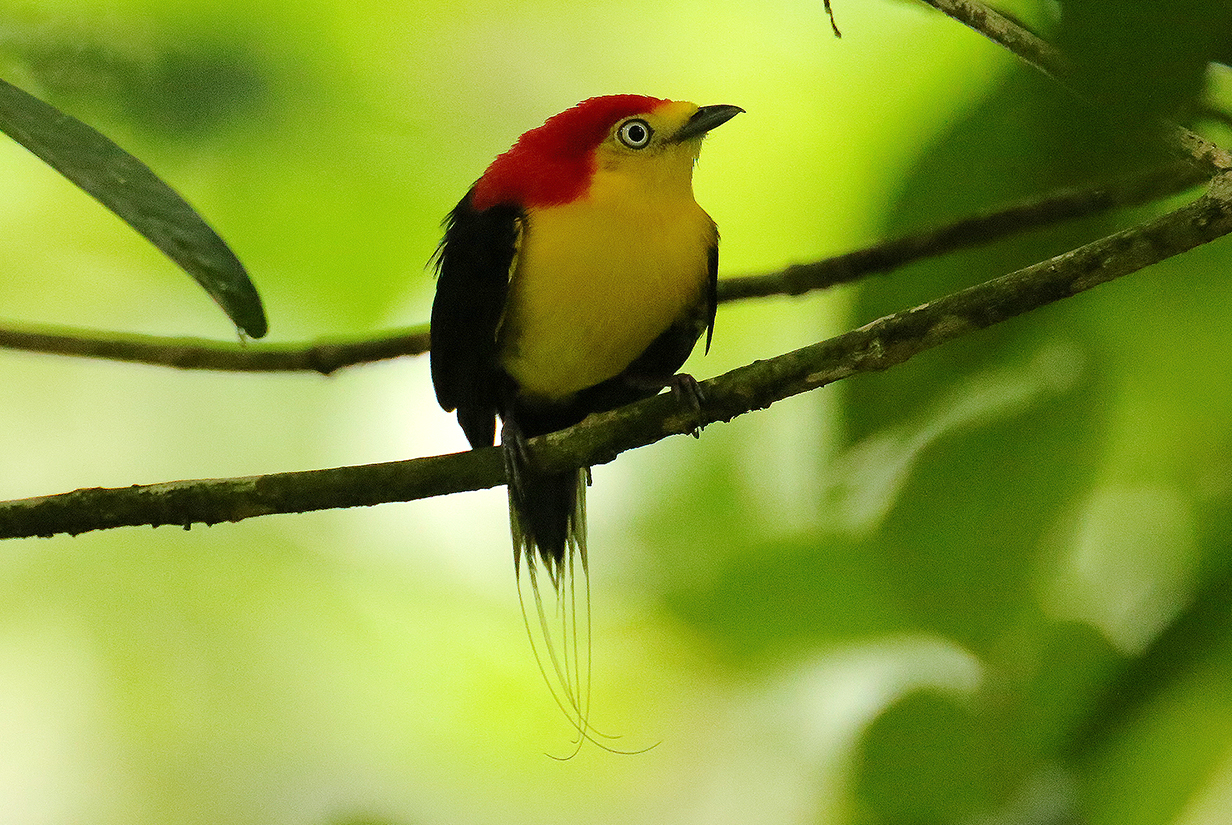
Wire-tailed manakin (This male is our life bird.)
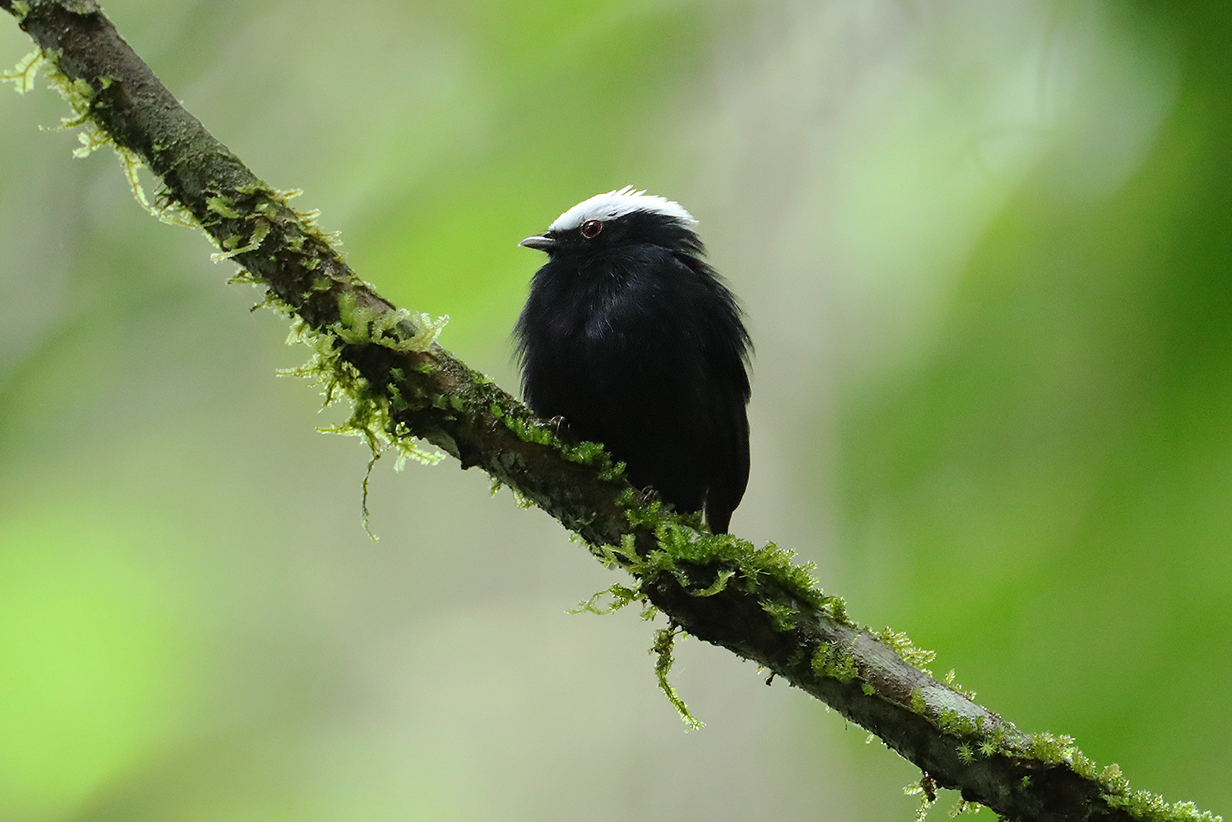
White-crowned manakin (This is John's life bird.)
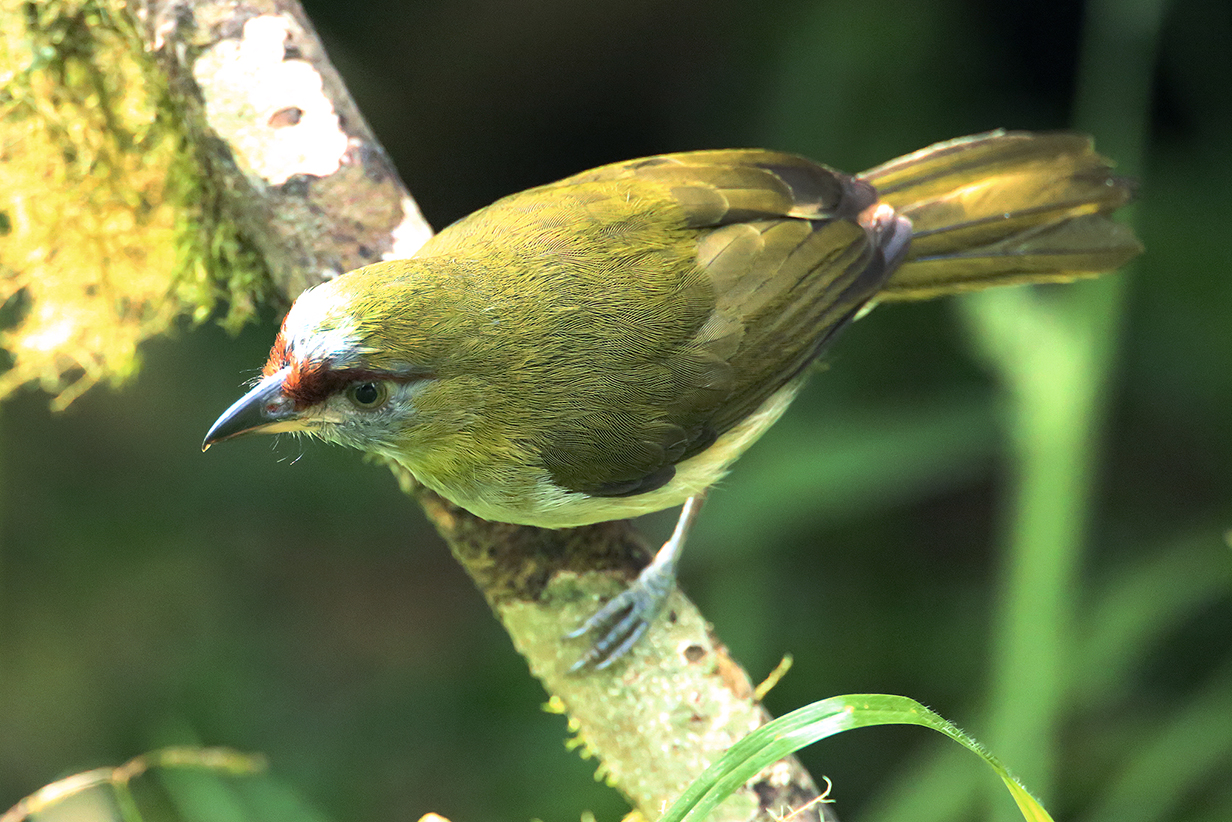
Black-billed peppershrike (This is our life bird.)
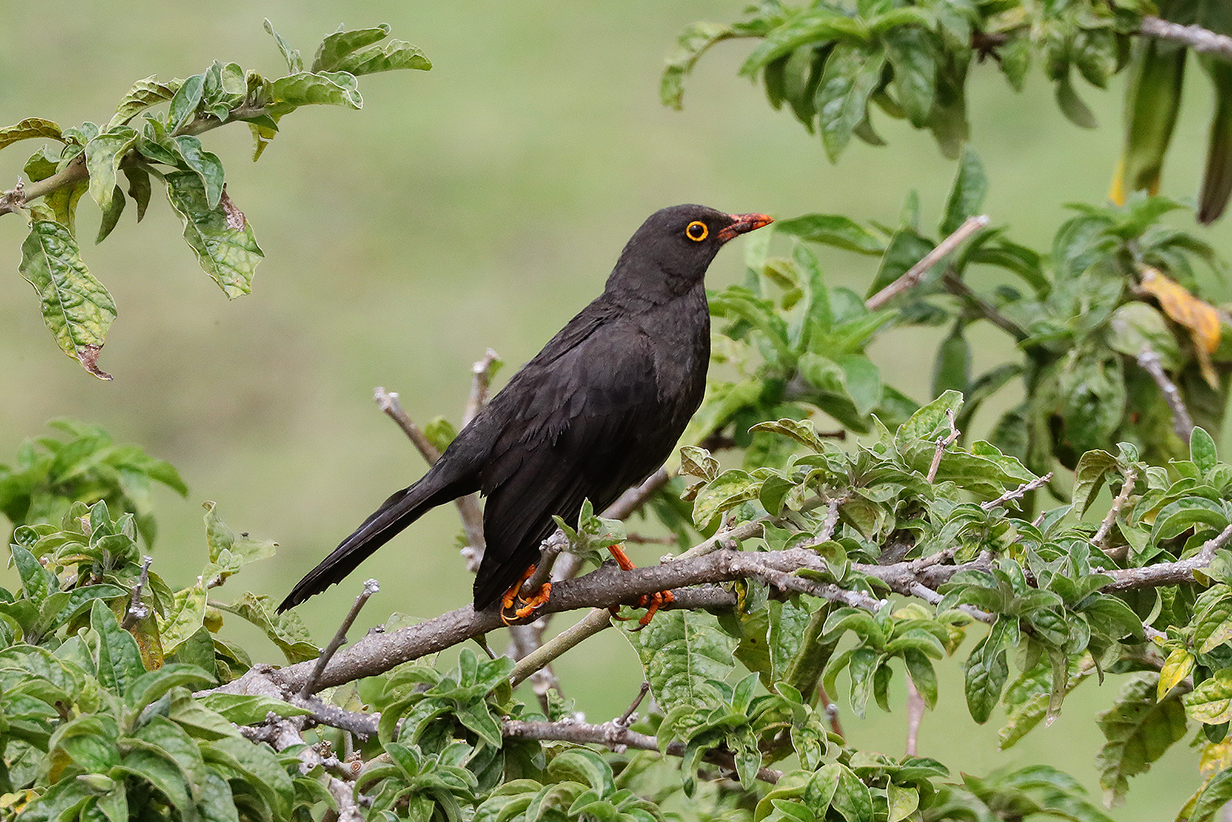
Great thrush is the common thrush in the highlands. This is at 3600 m altitude.

Lawrence's thrush in the Kapok tree at Sacha. It is a wonderful mimic, to the consternation of our guide, who kept hearing interesting birds ... that turned out to be the thrush, mimicing somebody who was not there. Great Thrush (Turdus fuscater) and Lawrence's thrush (Turdus lawrencii) are close relatives of the American robin (Turdus migratorius) and the Eurasian blackbird (Turdus merula).
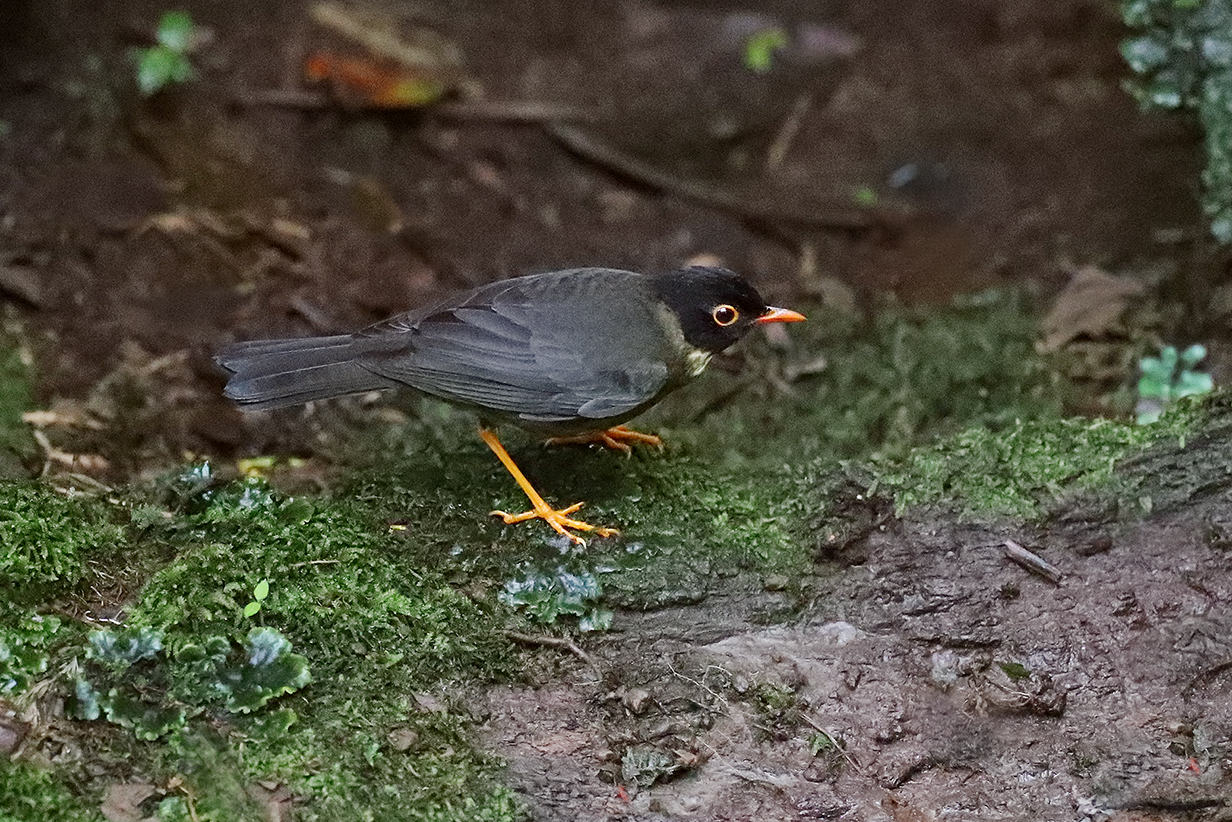

Spotted nightingale-thrush (This is our life bird -- a bird of the shadows, hard to see but a delight to hear. We saw it in the same deep hollow as Plain-backed and Ochre-breasted antpitta, near Wildsumaco Lodge.)
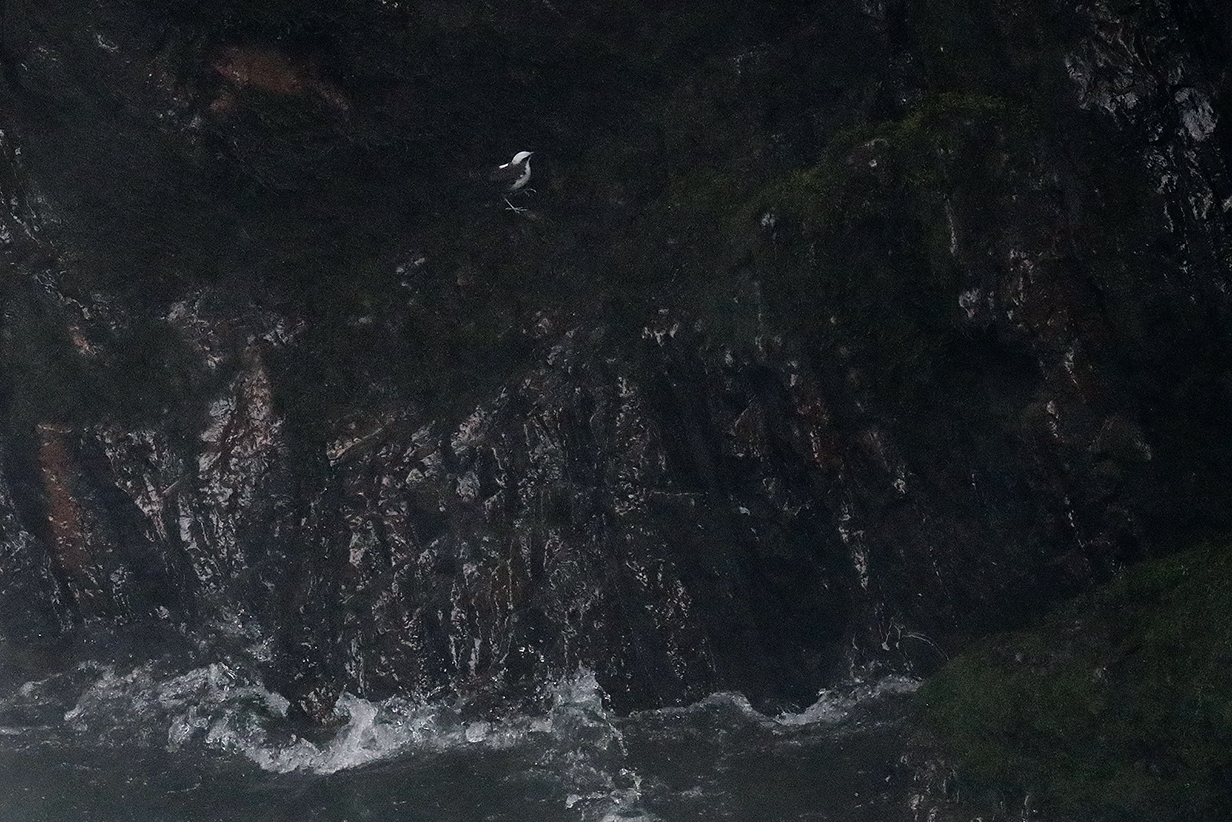
White-capped dipper (This is our life bird, across a gorge below a waterfall, on a cliff. Hard to get a good look at a black-and-white bird on a dark cliff, far away and through blowing mist and rain.)
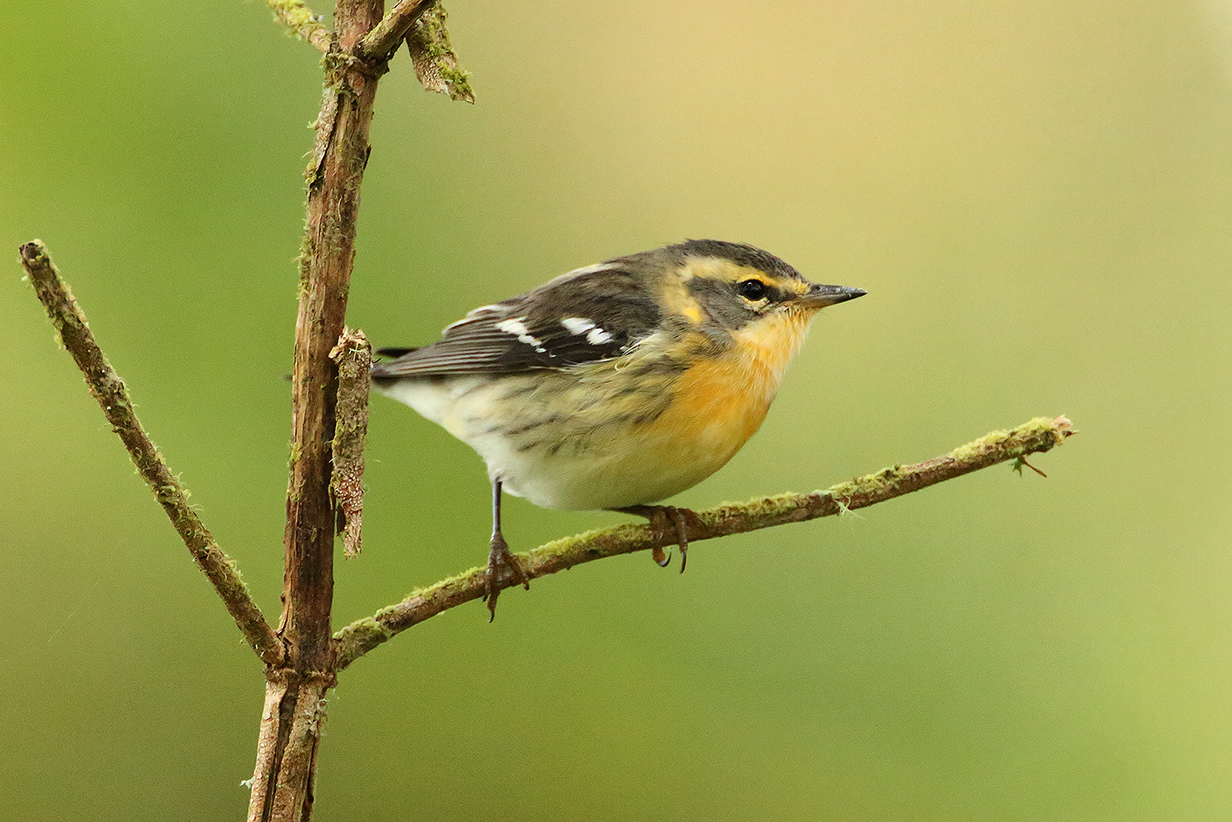
Blackburnian warbler (This looks like a first-winter bird, i. e., down in Ecuador for the first time since being born, most likely in northern Canada.)
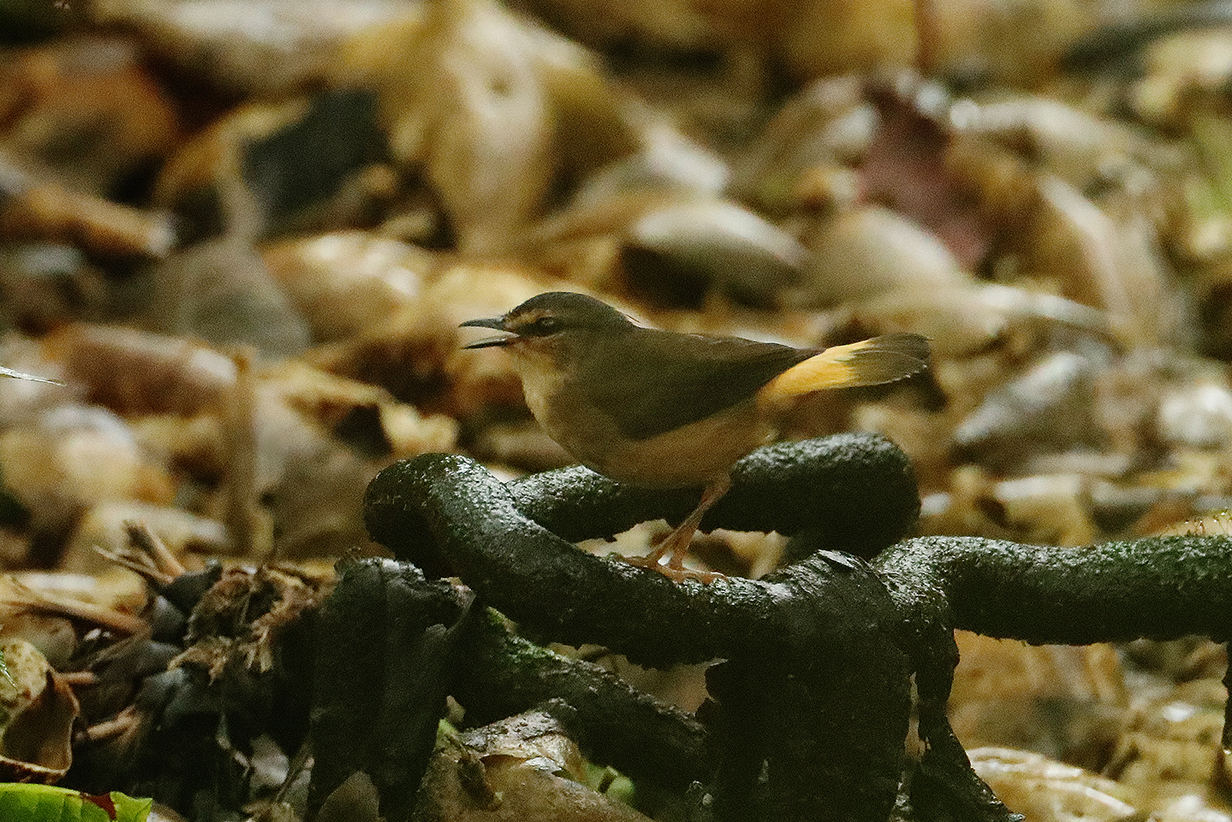
Buff-rumped warbler on the 24th and last day of our trip (We saw several warblers in Ecuador that migrate here for the winter from the USA -- mostly from far north of where we live in Texas -- but this one is resident and likes to stay near the forest floor.)

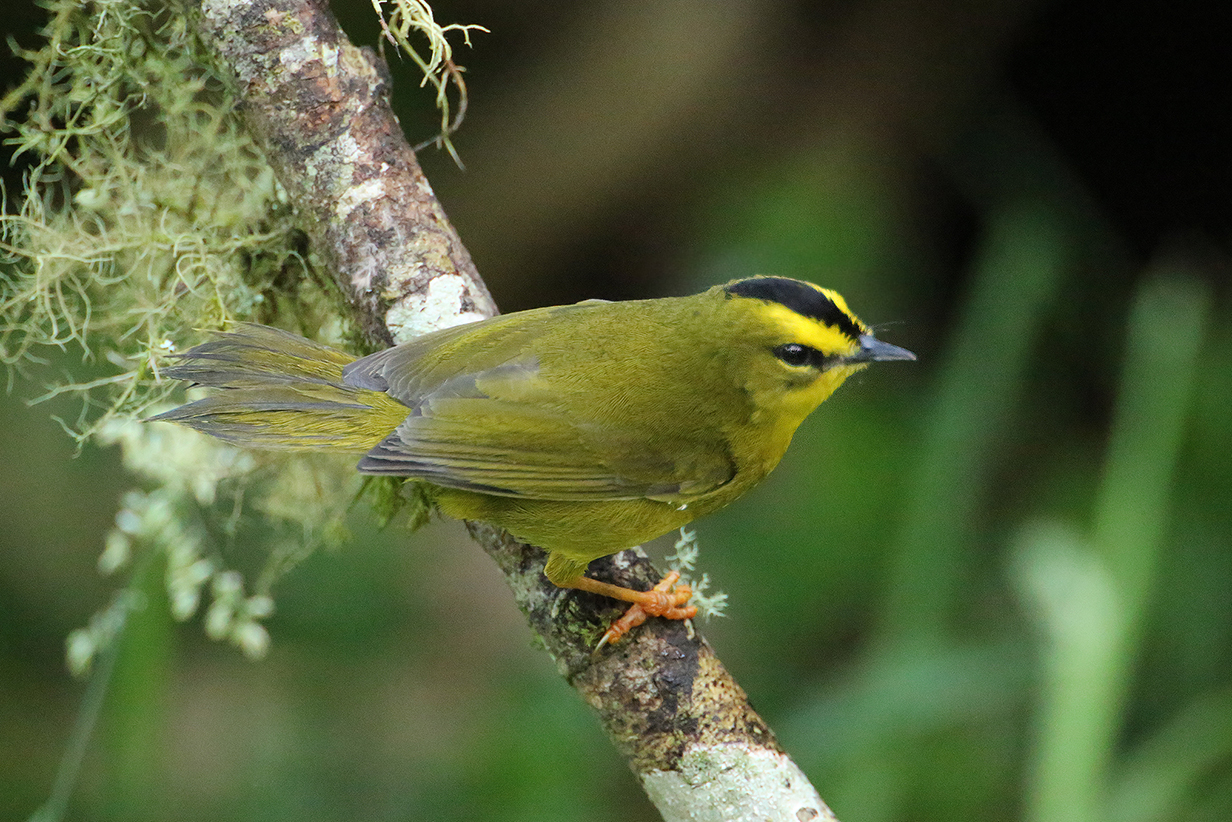
Black-crested warbler at San Isidro (This is another non-migratory warbler.)

Canada warbler (As the name implies, this bird migrated a LONG way to get to San Isidro from his breeding grounds.)

Gray-breasted woodwren (Wrens were uncooperative throughout the trip. This tiny bird is the only one I managed to see and -- however badly -- to photograph. At San Isidro.)
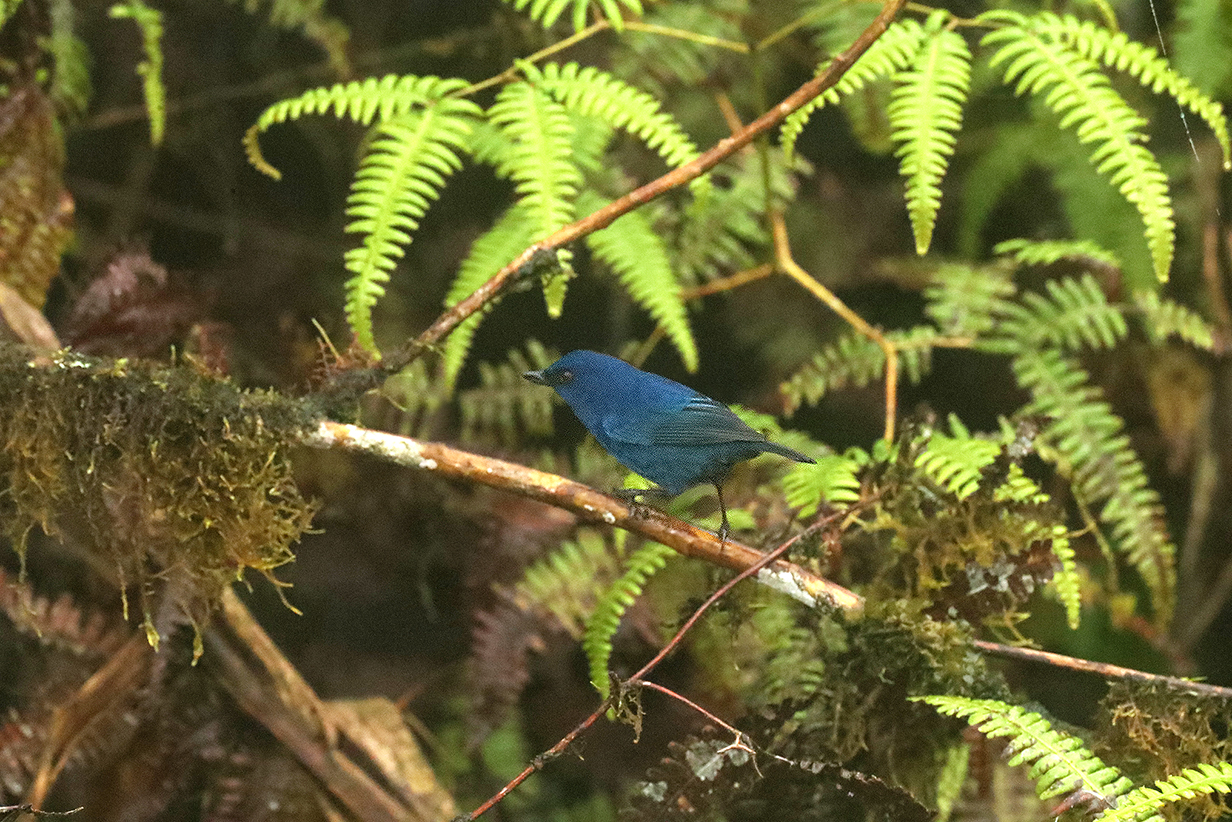
Indigo flowerpiercer (Elusive -- we saw it for only a split second and got only a bad picture. But this is our life bird.)

Deep-blue (formerly Golden-eyed) flowerpiercer (This is John's life bird.)
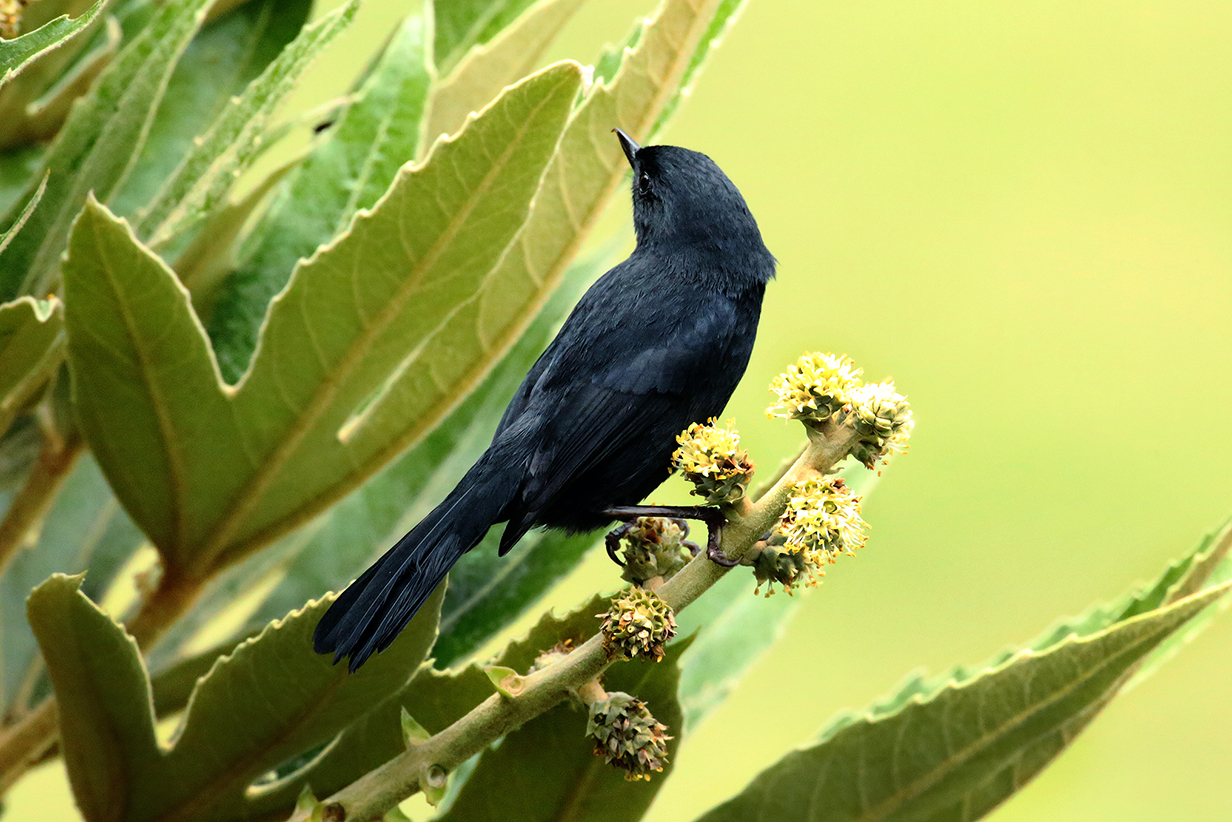
Black flowerpiercer (at 3600 m altitude)

Black flowerpiercer with lunch (Protein complements nectar!)

Golden-collared honeycreeper

Rufous-bellied euphonia (male, in the Kapok tree at Sacha)
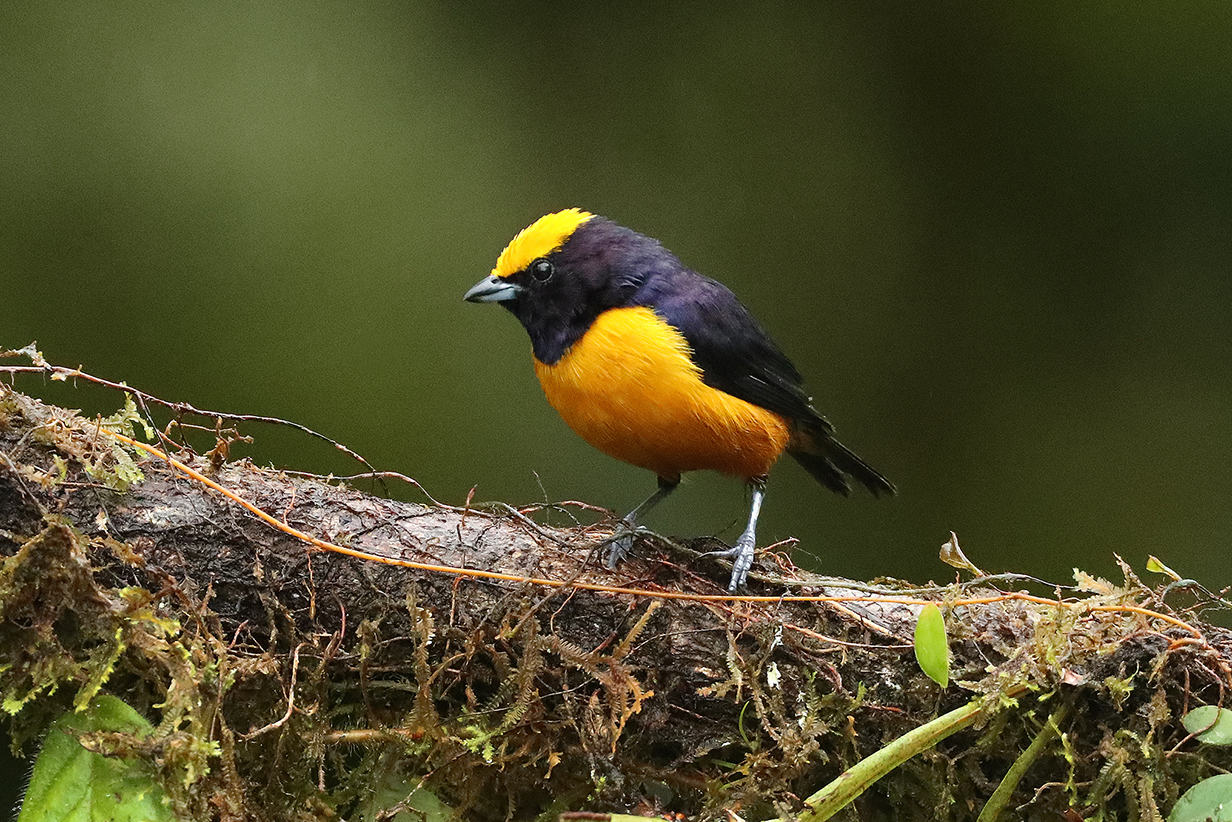
Orange-crowned euphonia (This is our life bird -- last one of the trip for Mary and second-last for John.)
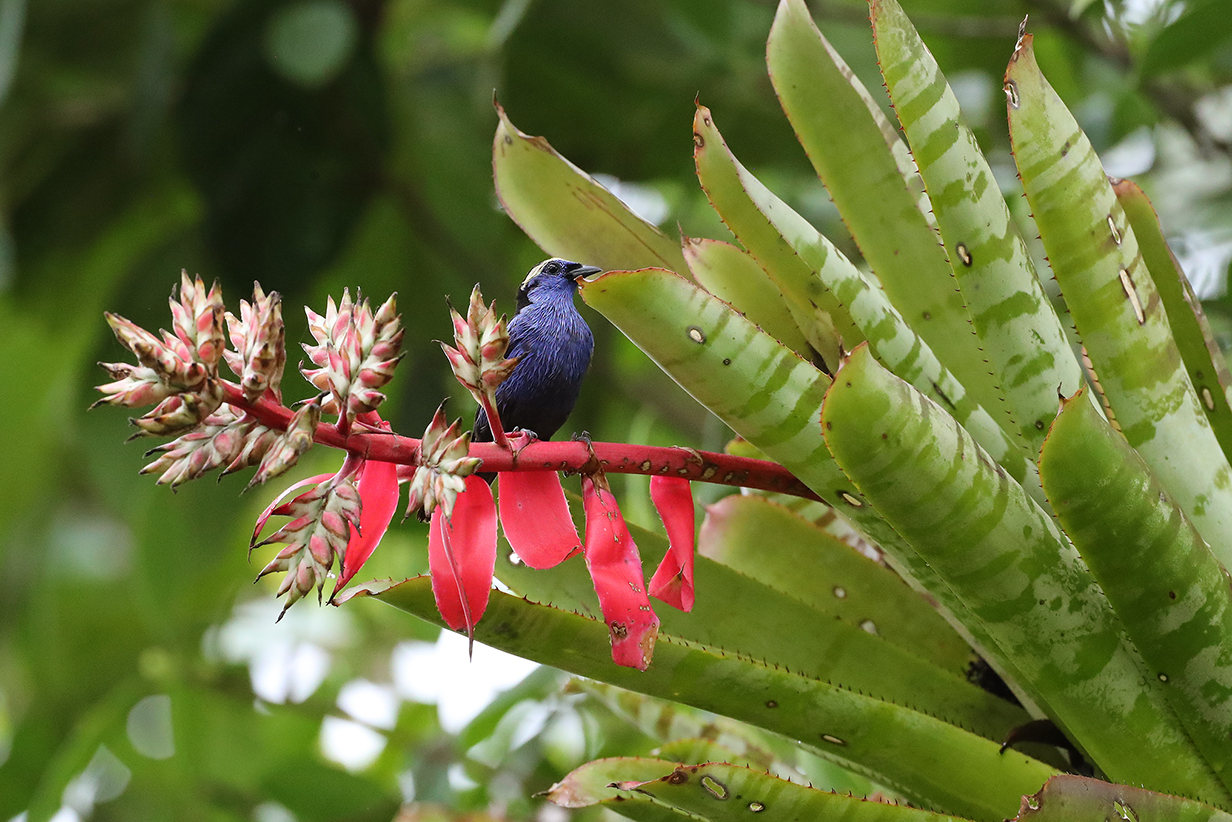


Opal-crowned tanager (foraging in the Kapok tree, evidently in part for nesting material)
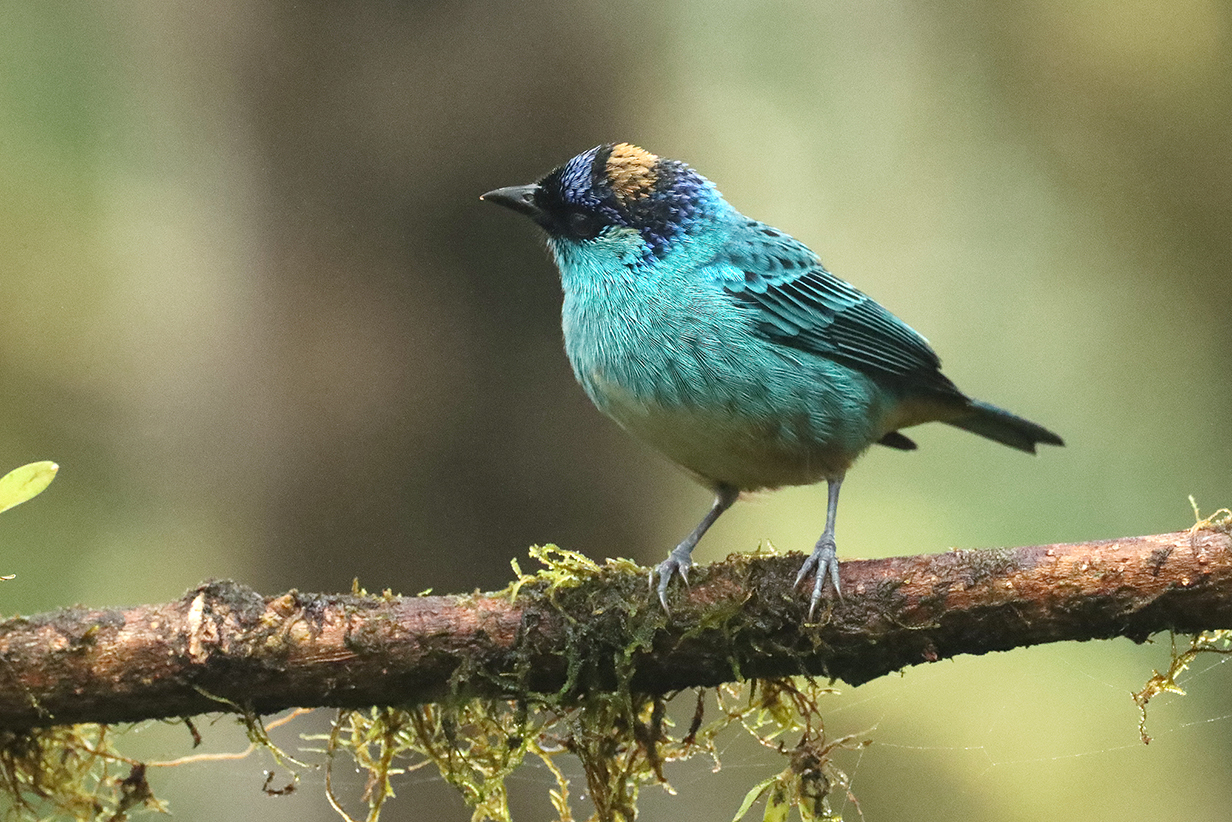
Golden-naped tanager
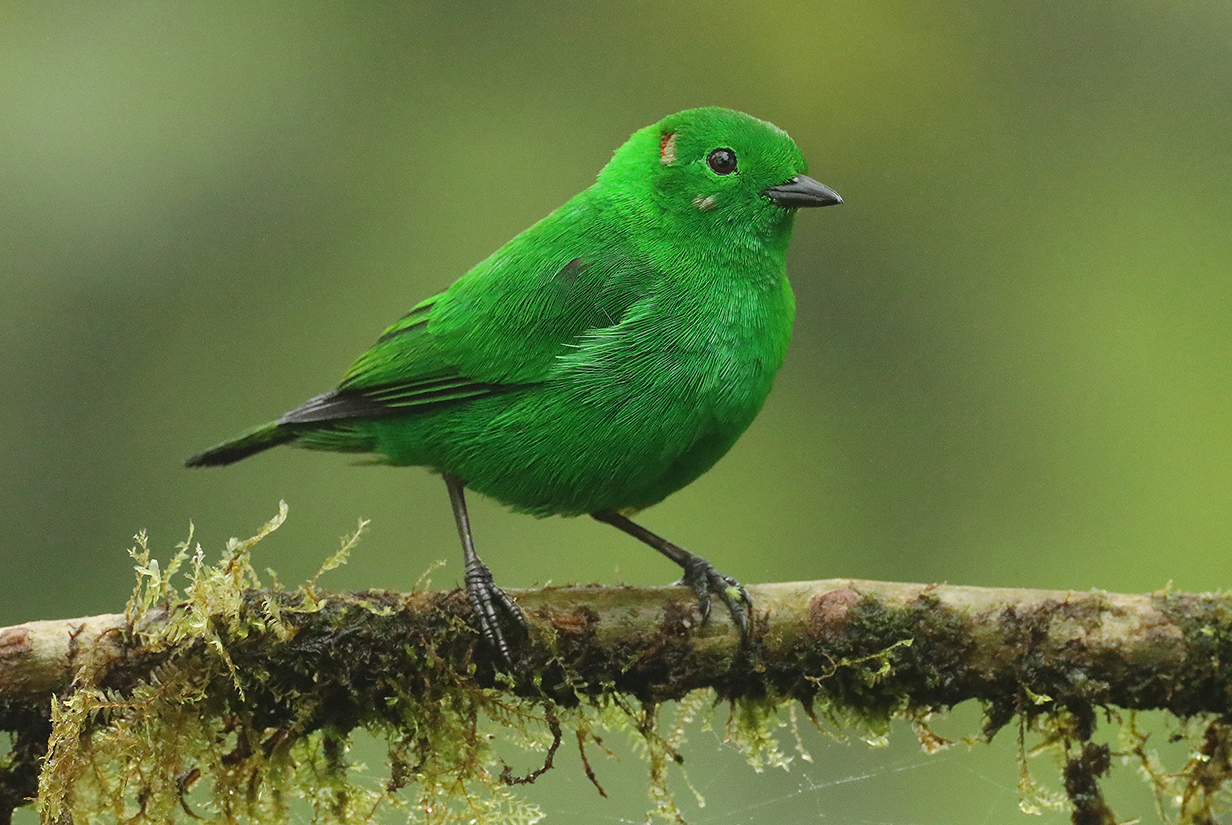
Glistening-green tanager
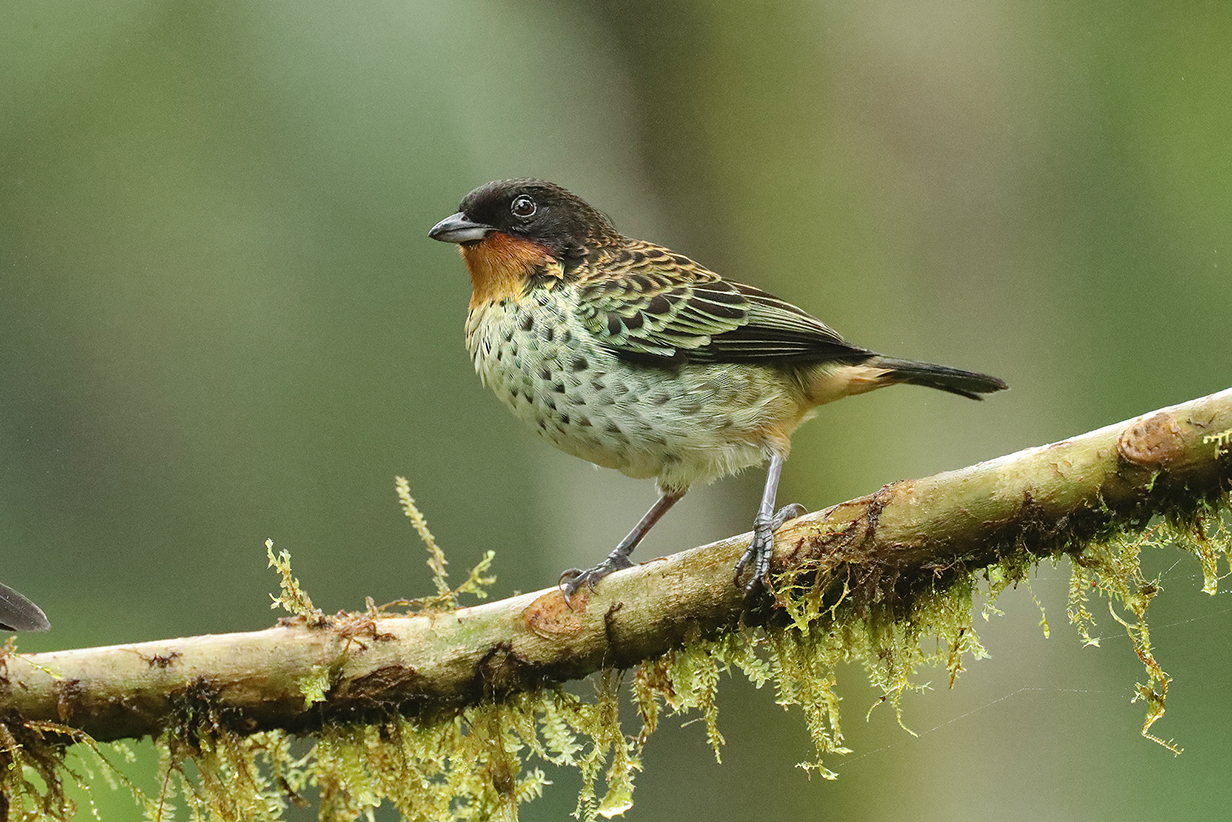
Rufous-throated tanager
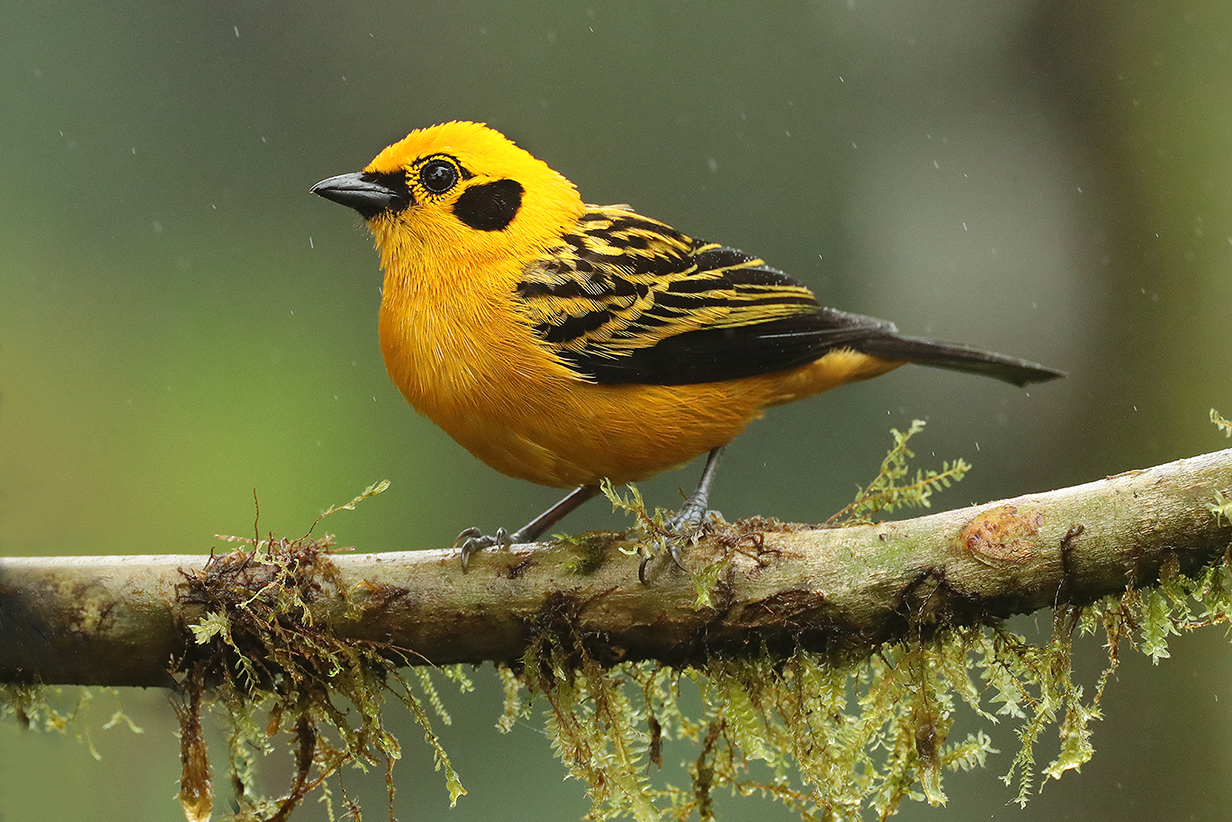
Golden tanager in the rain
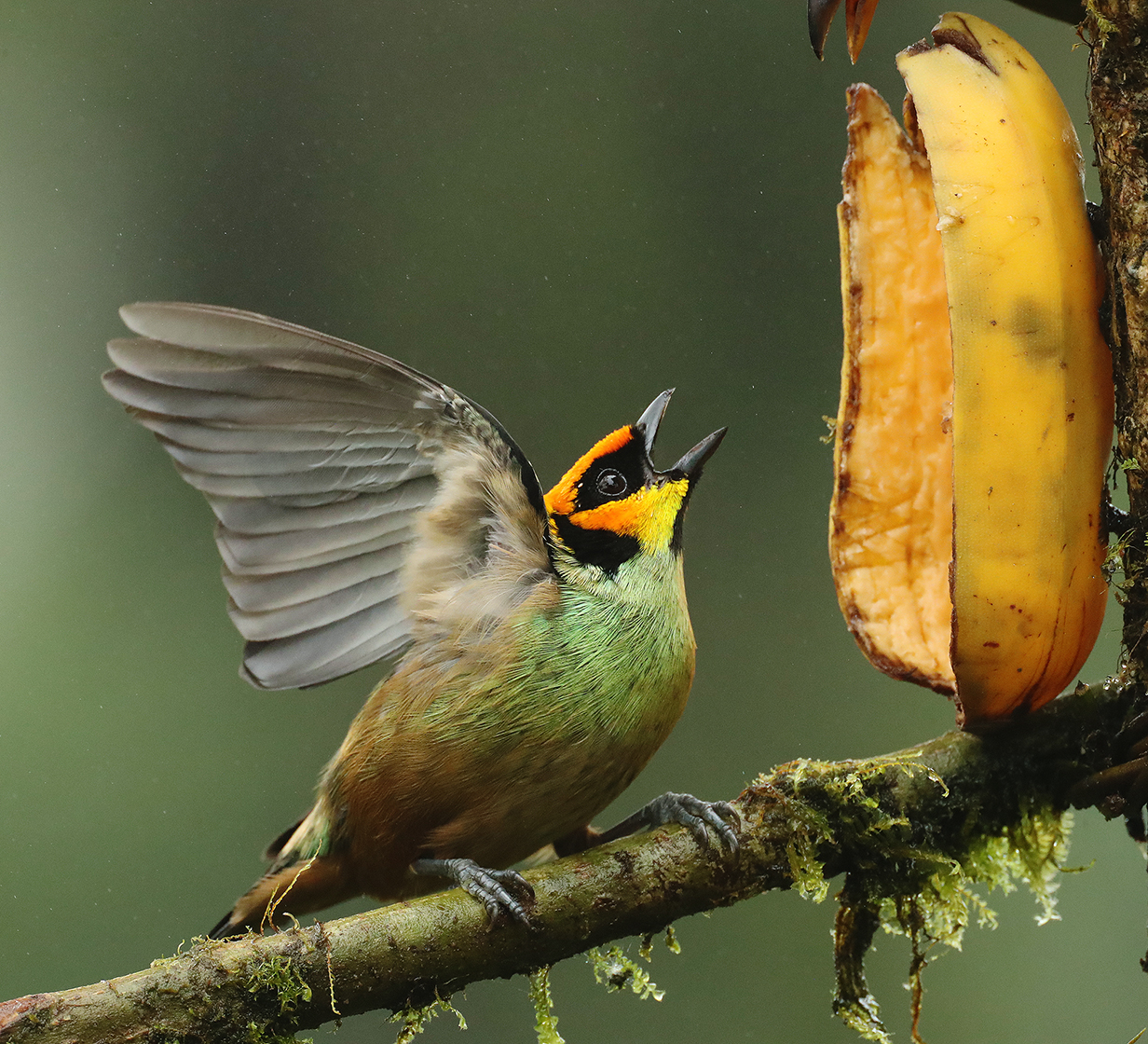
Flame-faced tanager (in confrontation with the beak at top-right ... and in the rain)
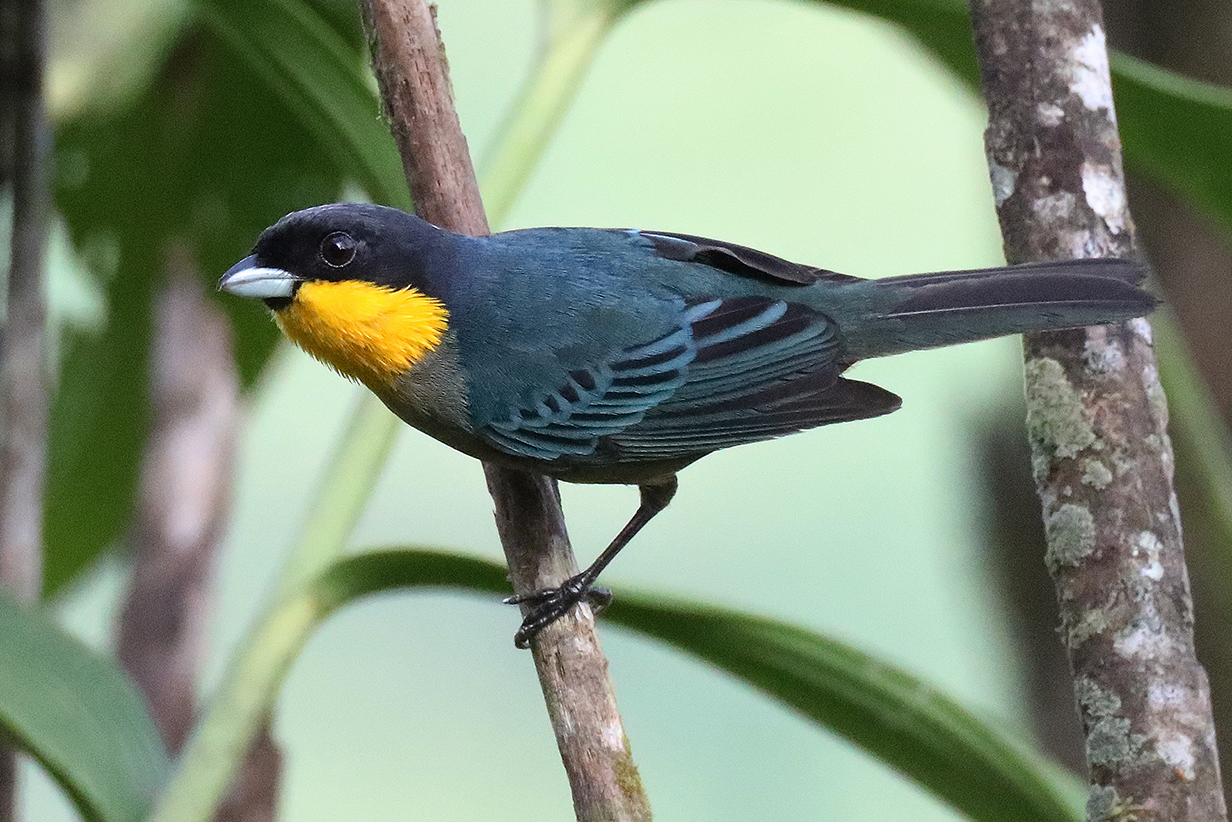

Yellow-throated tanager (This is our life bird.)

Blue-winged mountain tanager eating a banana
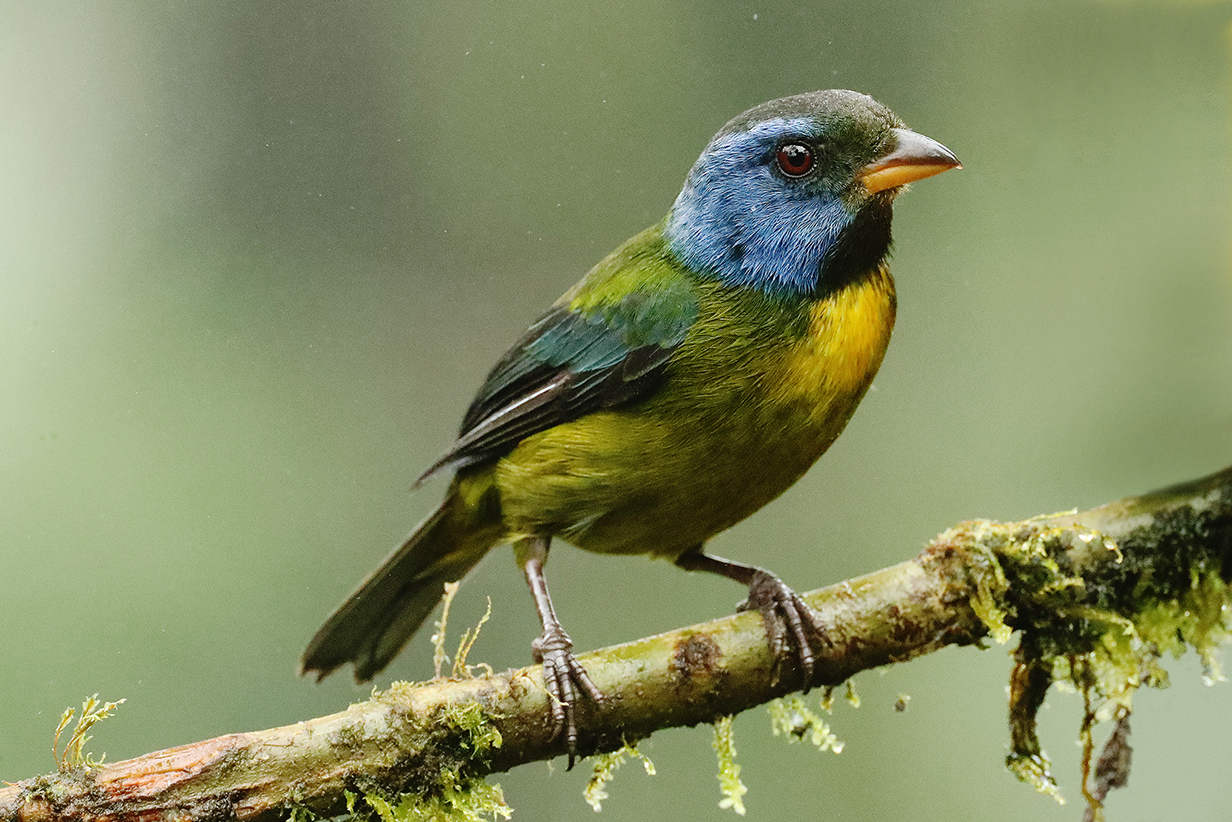
Moss-backed tanager in the rain (We had a lot of rain.)
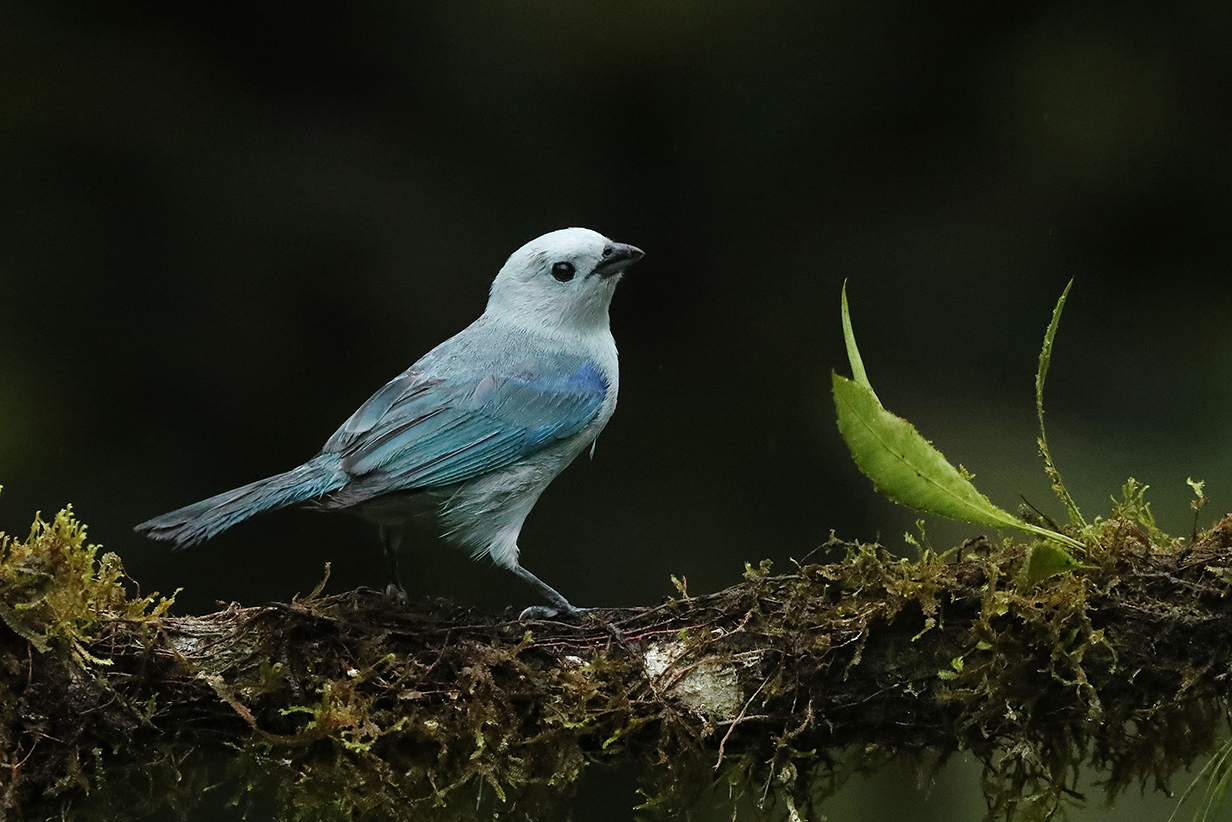
Blue-gray tanager (This is just about the most-often-seen tanager. This is the race seen west of the Andes -- east of the Andes, the bright blue in the wings is replaced with white. We saw that race, too.)
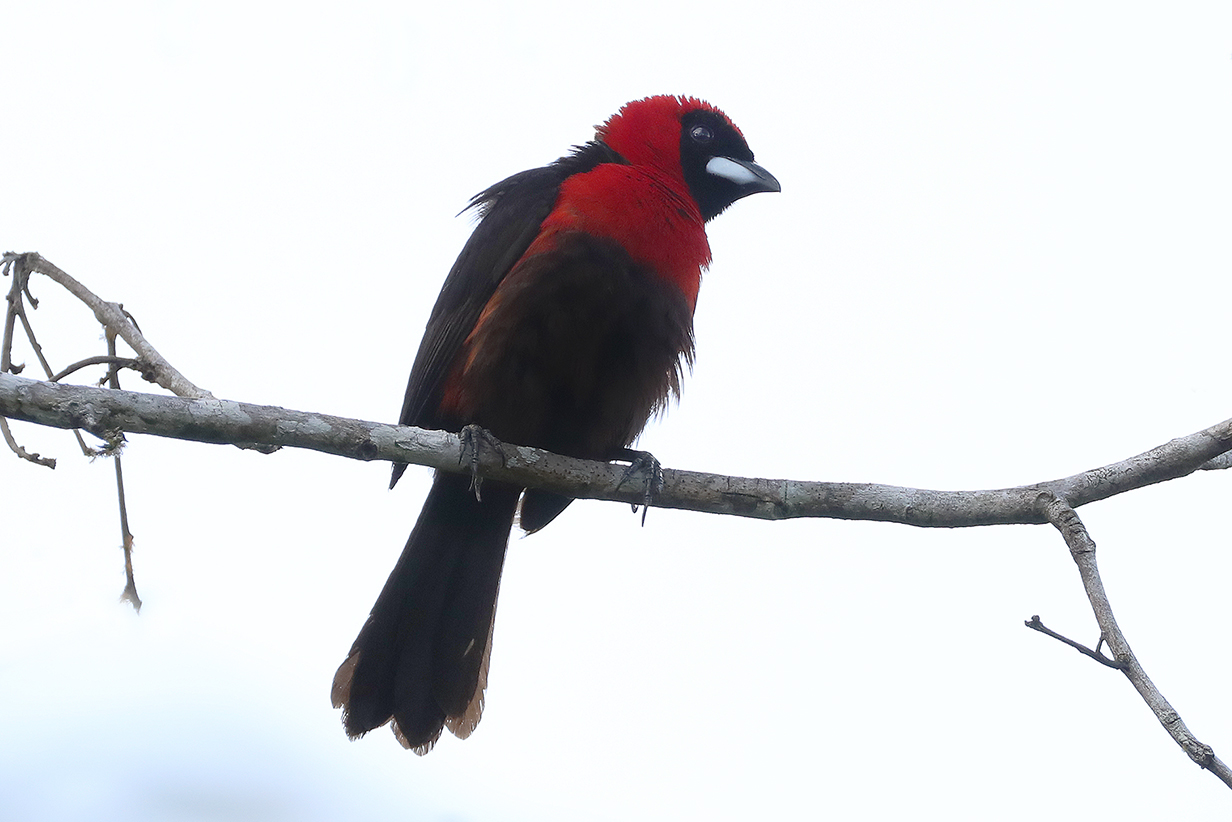
Masked crimson tanager (This is Mary's life bird; John got his from the Kapok tree.)
Our bird pictures from around the world follow standard ecozones approximately but not exactly:
Birds from the USA and Canada: our house, Hornsby Bend and greater Austin, Texas, California, Hawaii, Canada,
Neotropic birds from Central America and the Caribbean: Honduras, Costa Rica, Panama, Trinidad and Tobago
Neotropic birds from South America: Ecuador 2004, Ecuador 2017, Brazil.
Western palearctic birds: Europe: Germany, Finland, Norway, Europe: United Kingdom, Europe: Spain, the Canary Islands, Europe: Lesbos, Greece, Israel
Eastern palearctic birds: China
Birds from Africa: The Gambia, South Africa
Indo-Malayan birds from India: North-west (Delhi, Uttar Pradesh, Uttarakhand) India: North-east (Assam, Arunachal Pradesh, Meghalaya) India: Central (Maharashtra, Madhya Pradesh)
Birds from Australia, New Zealand.
For our 2014 December trip to India, see this travelog.
For our 2016 May-June trip to India, see this travelog.
For our 2017 April trip to High Island, Texas, see this web site.
For our 2018 March trip to India, see this travelog.
For our 2018 May trip to China, see this travelog.
For our 2018 November trip to China, see this travelog.
For our 2019 April trip to High Island, Texas, see this web site.
For our 2019 July trip to China, see this web site.
For our 2021 April trip to High Island, Texas, see this web site.
For our 2021 December trip to Ecuador, see this web site.
For our 2022 January-February trip to Peru, see this web site.
For our 2022 July-August trip to Australia and Papua New Guinea, see this web site.
For our 2022 September trip to Bolivia, see this web site.
For our 2022 November-December pre-trip to Argentina (before our Antarctic cruise), see this web site.
For our 2022 November-December cruise to Antarctica, see this web site.
For our 2023 January birding in Chile, see this web site.
For our 2023 January-March cruise from Chile to Antarctica and around South America to Miami, FL, see this web site.
For our 2023 March-April birding in south Florida (after the Seabourn cruise), see this web site.
For our 2023 November-December birding to Sri Lanka, the Andaman Islands, and South India, see this web site.
For John's 2024 February-March birding in Colombia, see this web site.
For our 2024 May-June cruise from Iceland to Jan Mayen Island to and around the Svalbard Archipelago, see this web site.
For our 2024 June 25-30 stay in Paris, see this web site.
For our 2025 April 21 - May 3 trip to High Island, Texas, see this web site.
University of Texas Astronomy Home Page
Last update: October 6, 2022. Total visits since January 1, 2022 =
John Kormendy (kormendy@astro.as.utexas.edu)